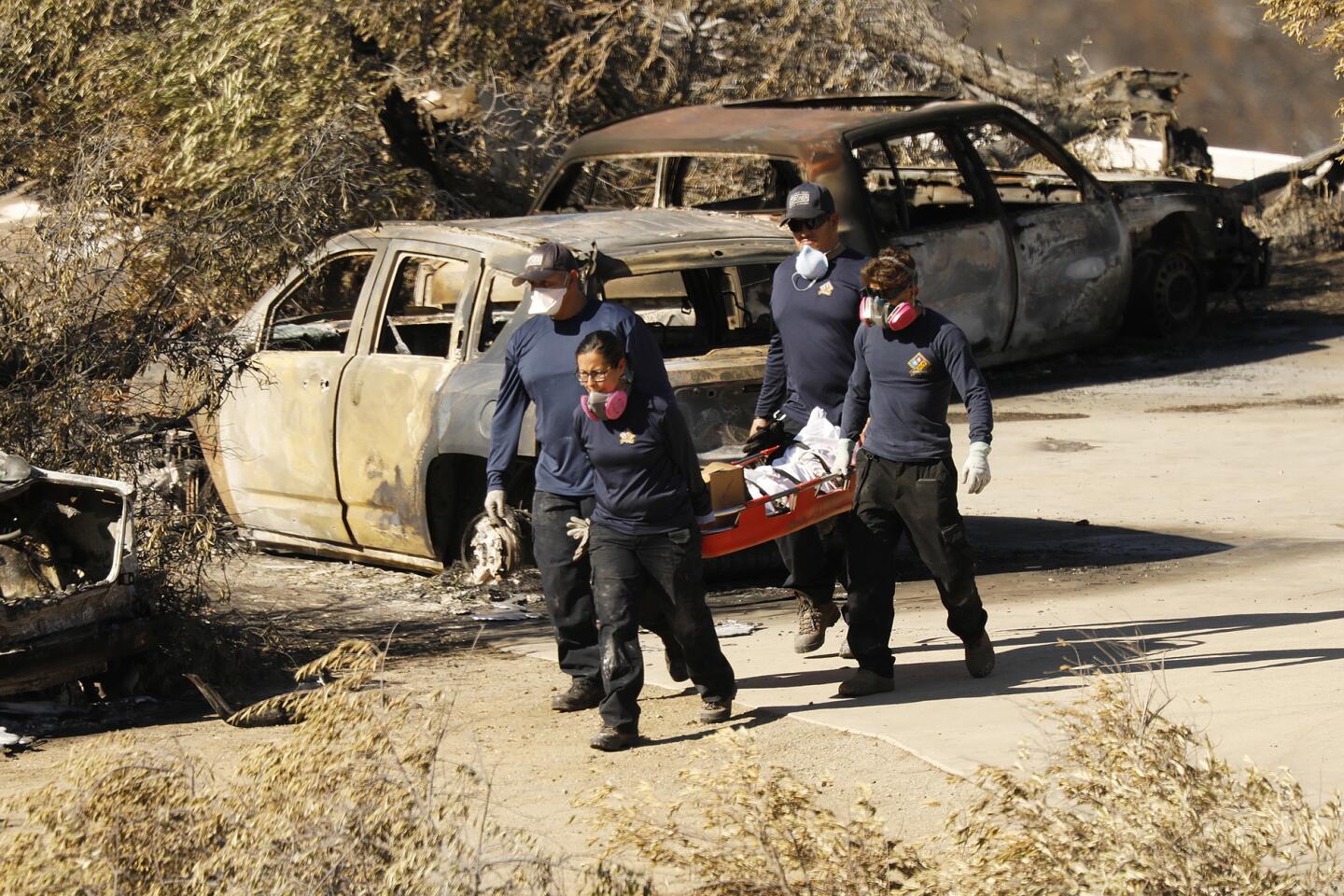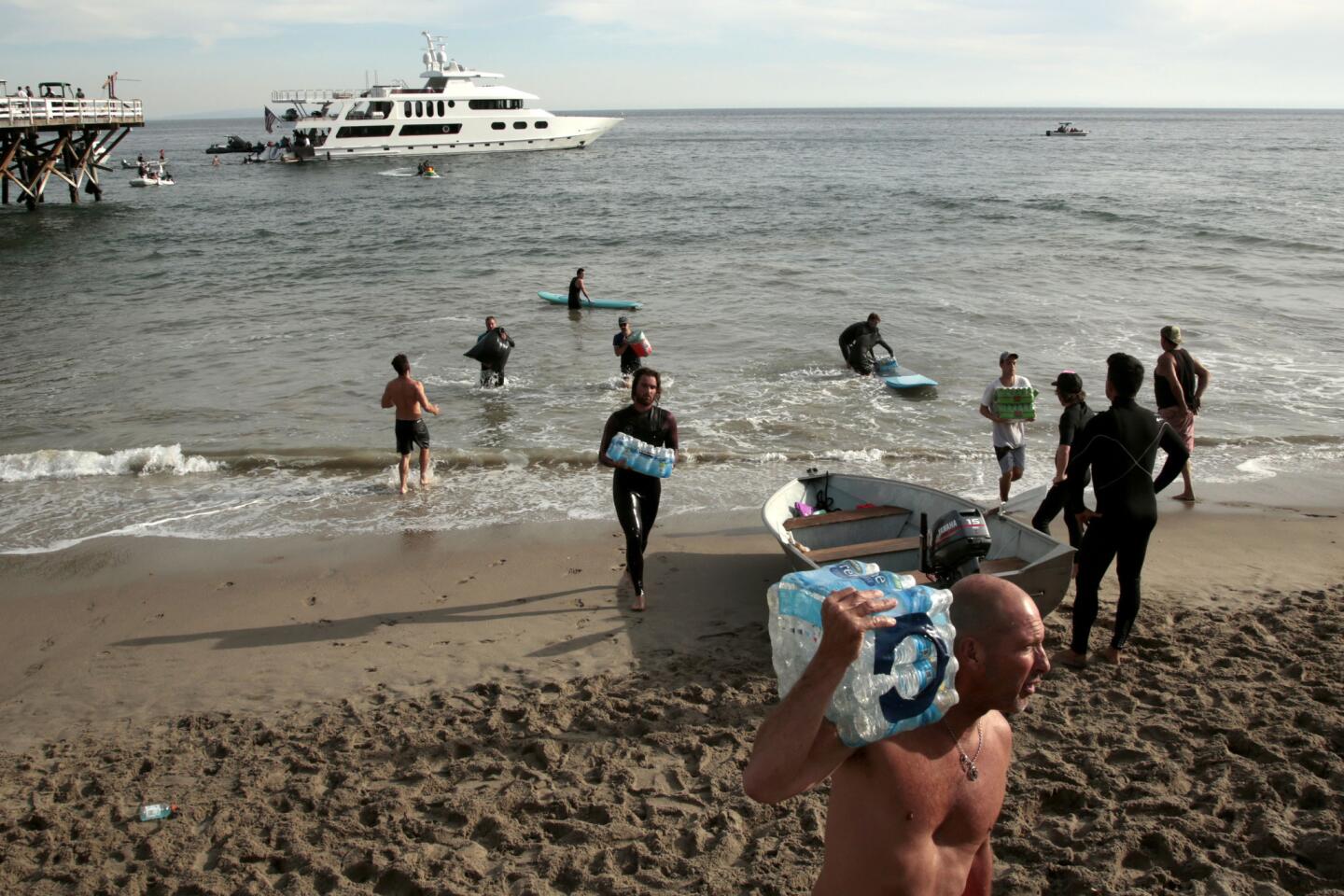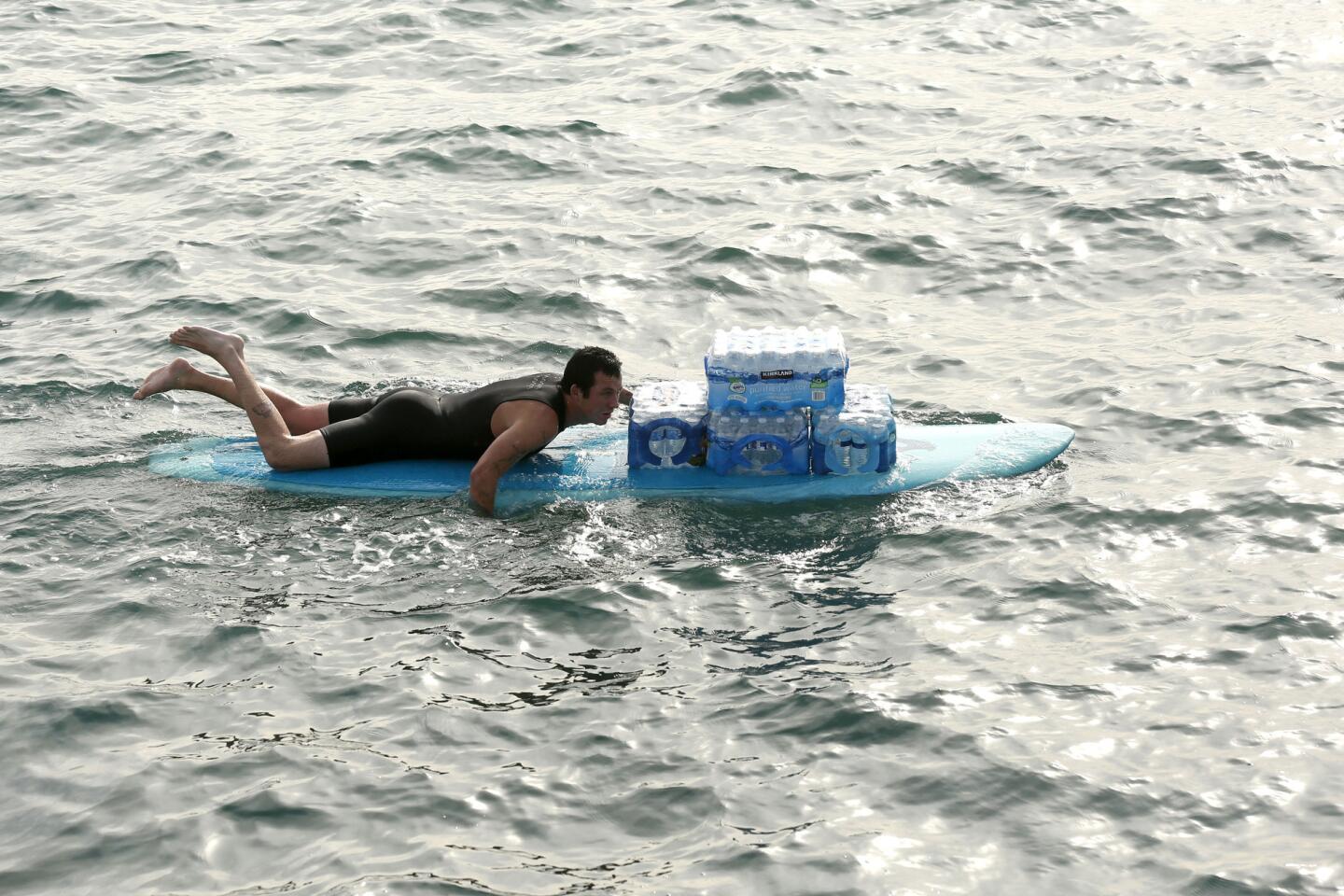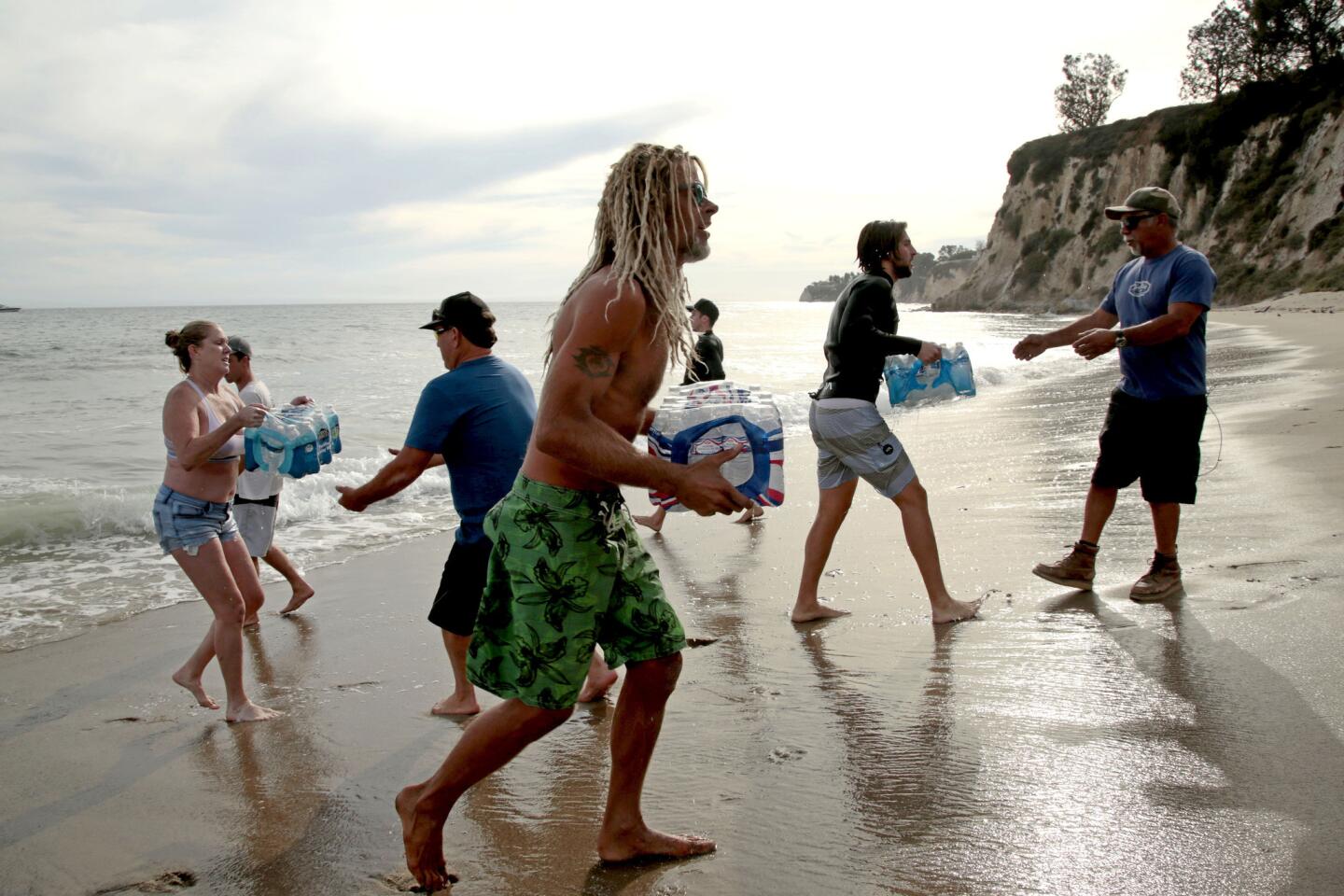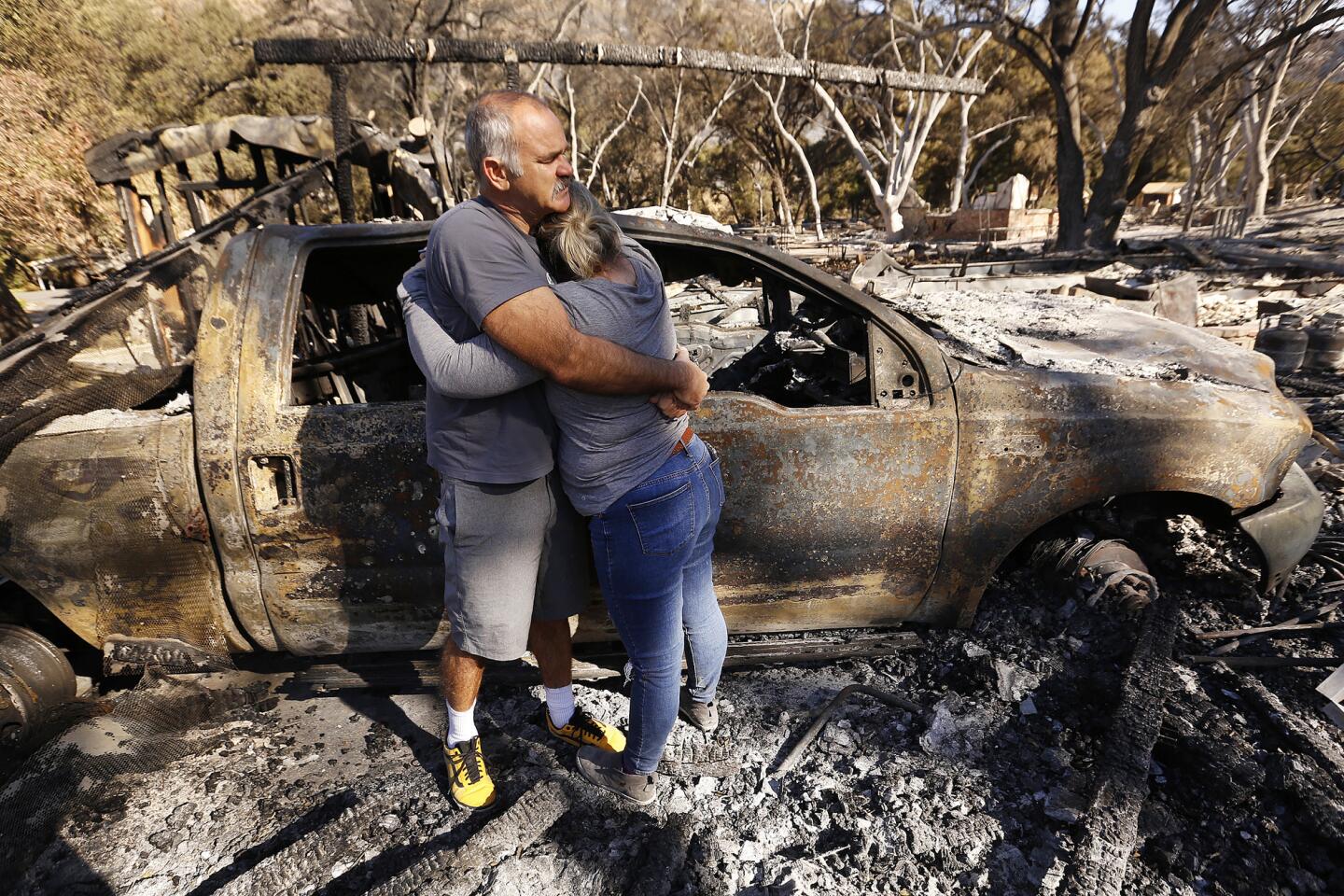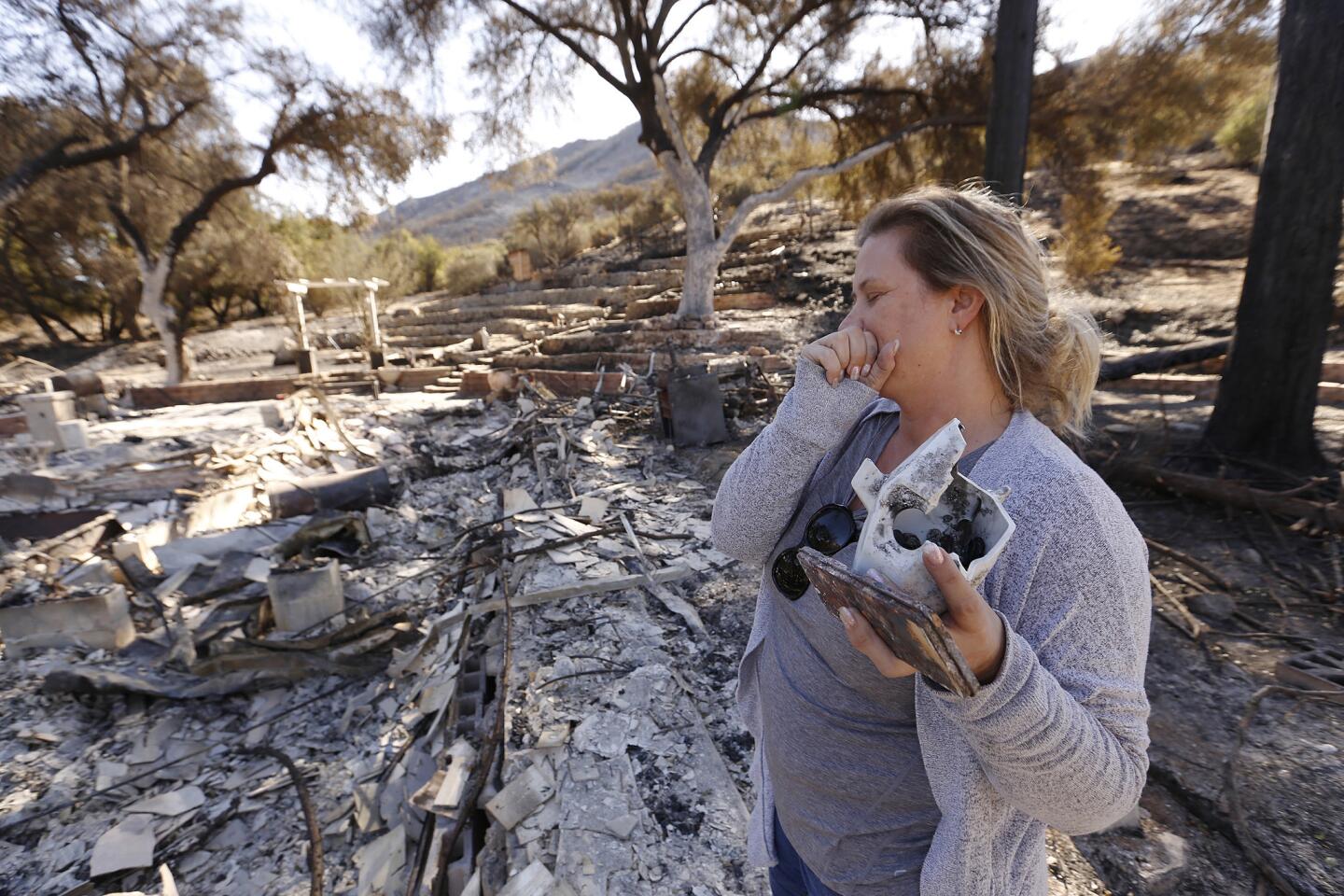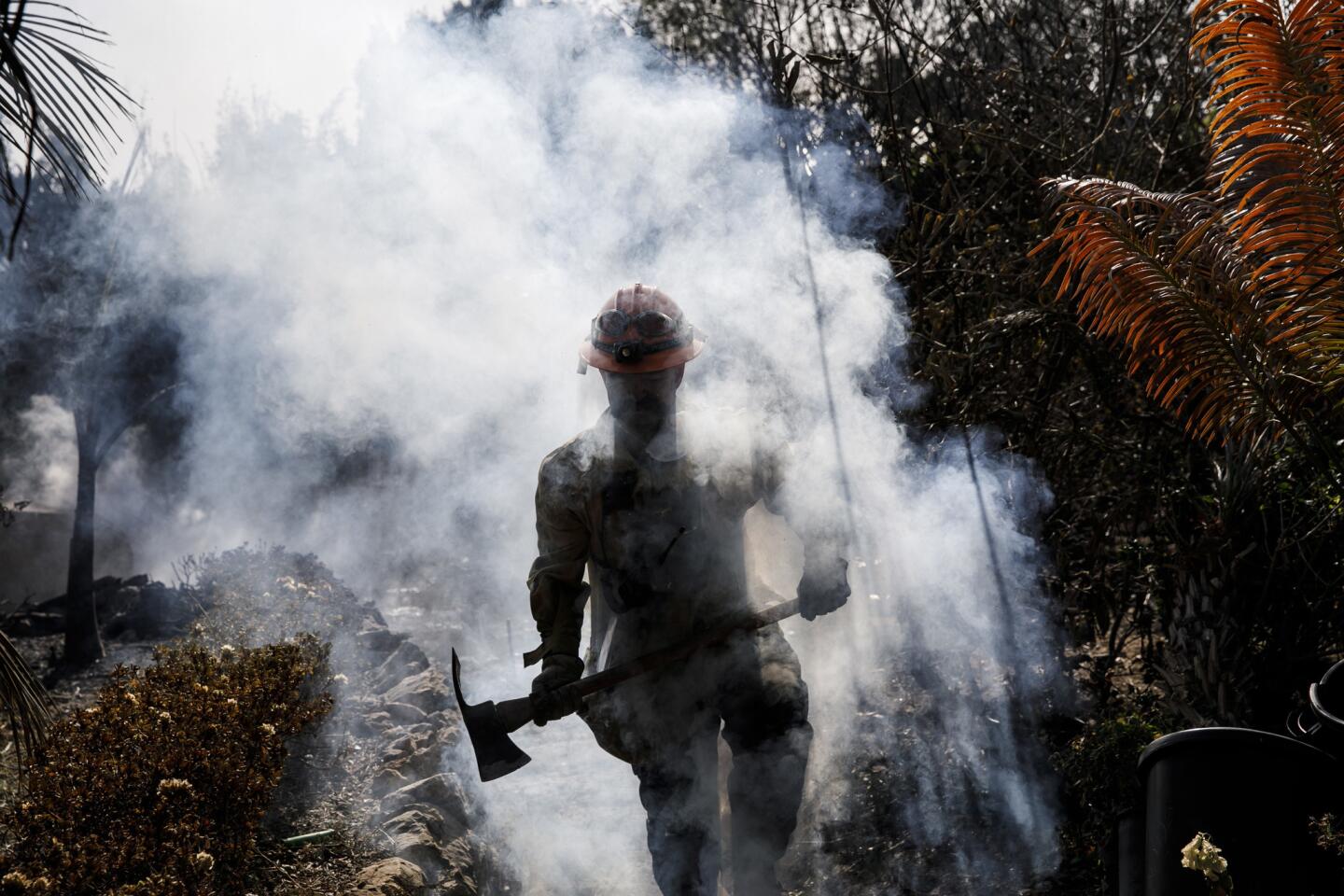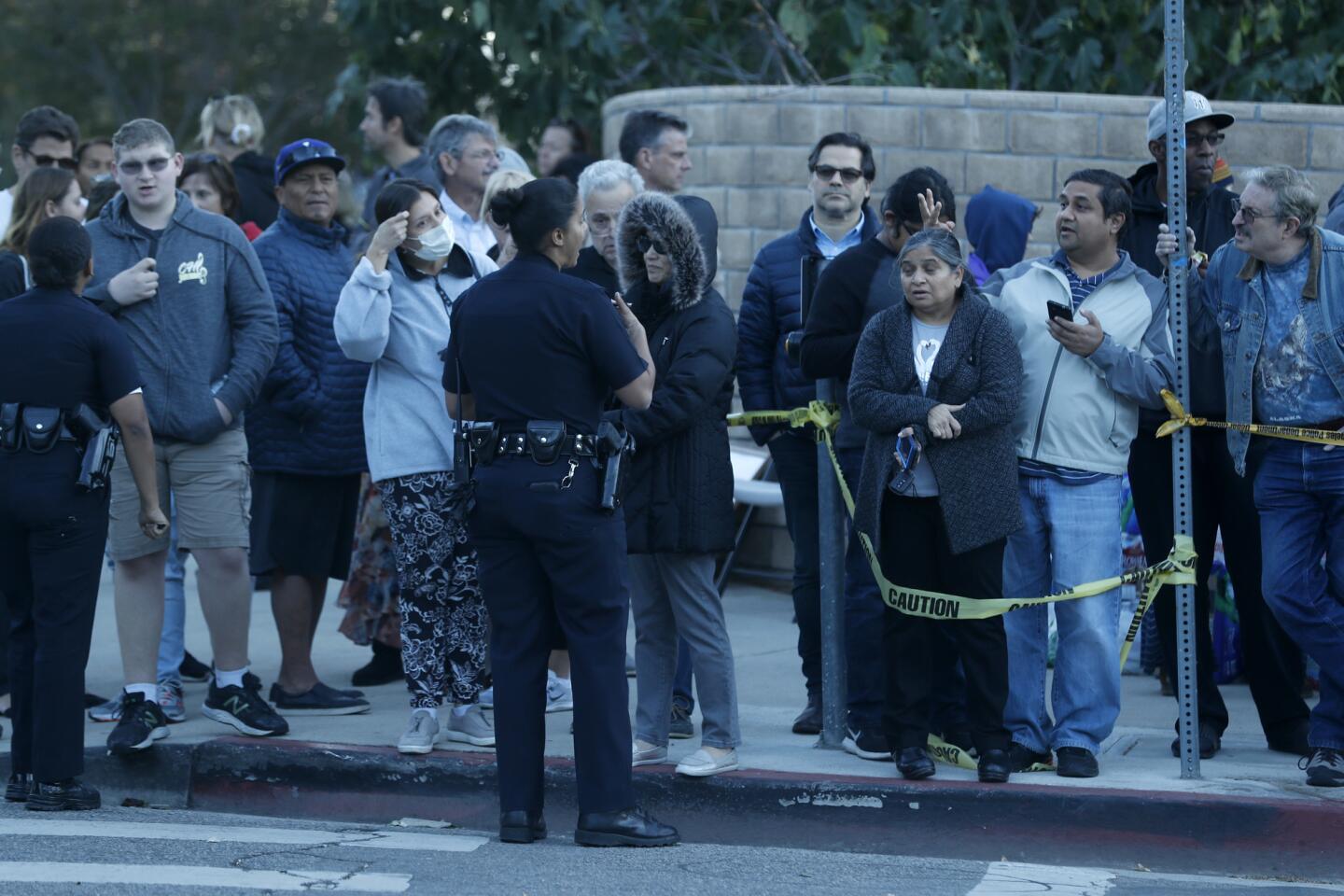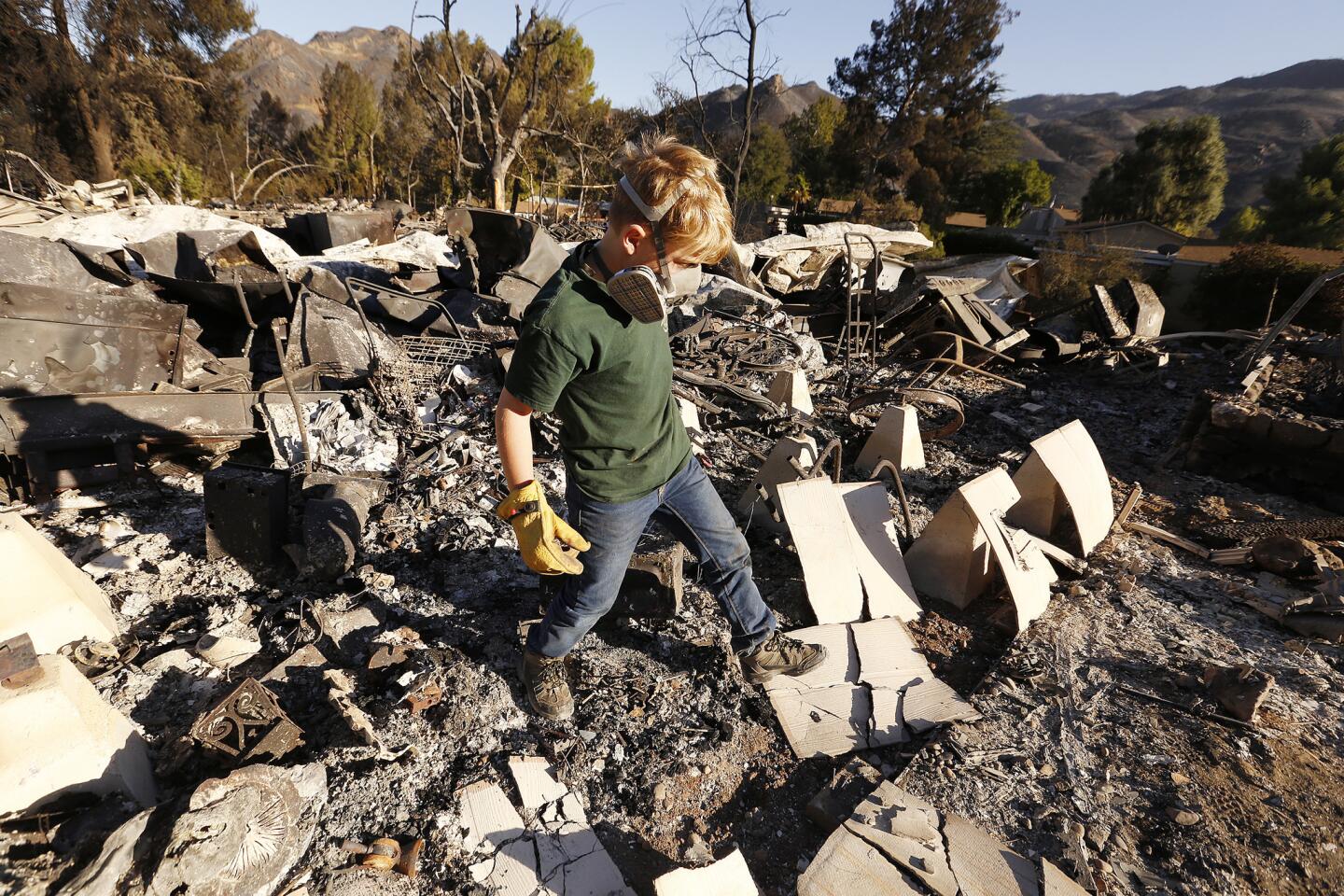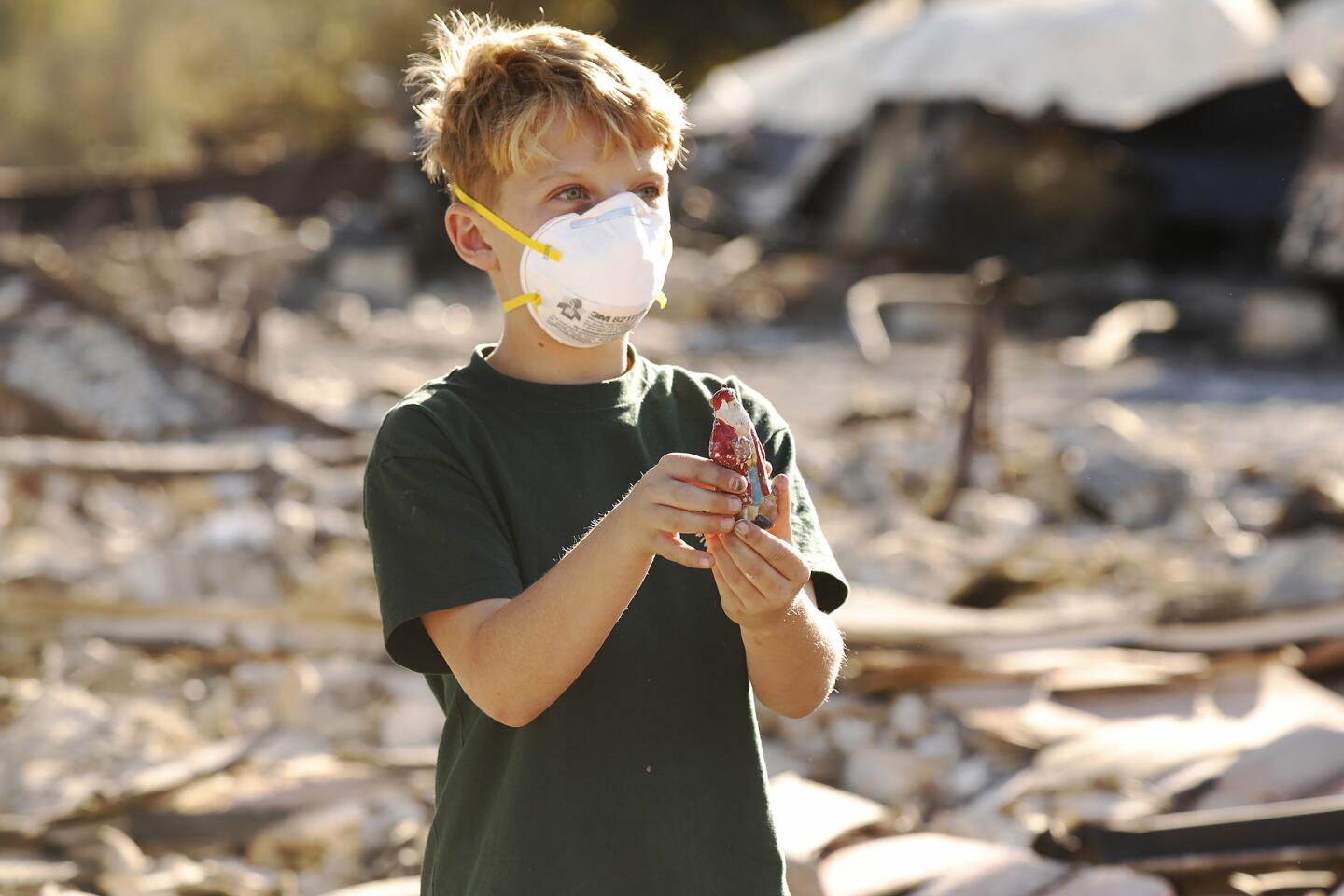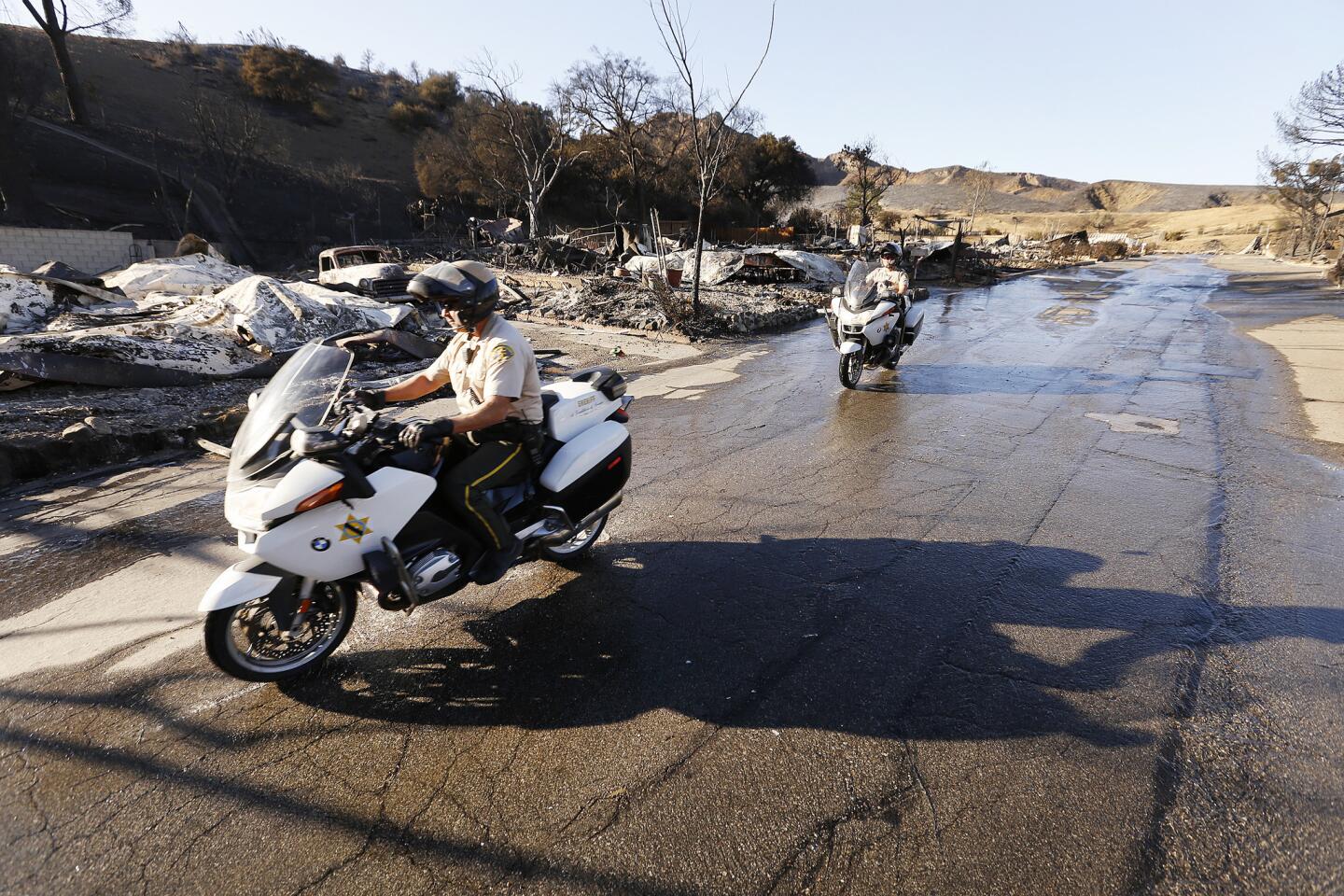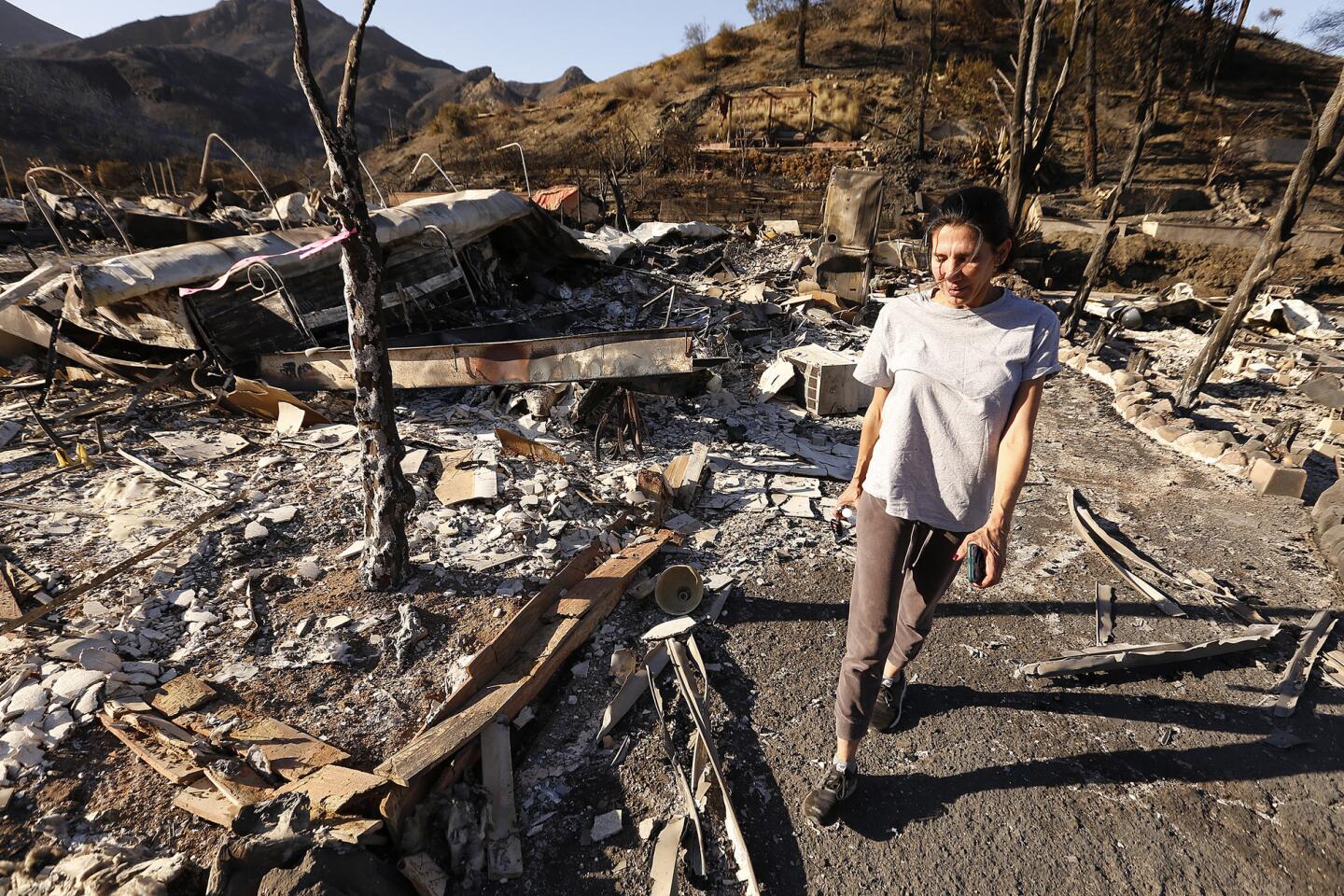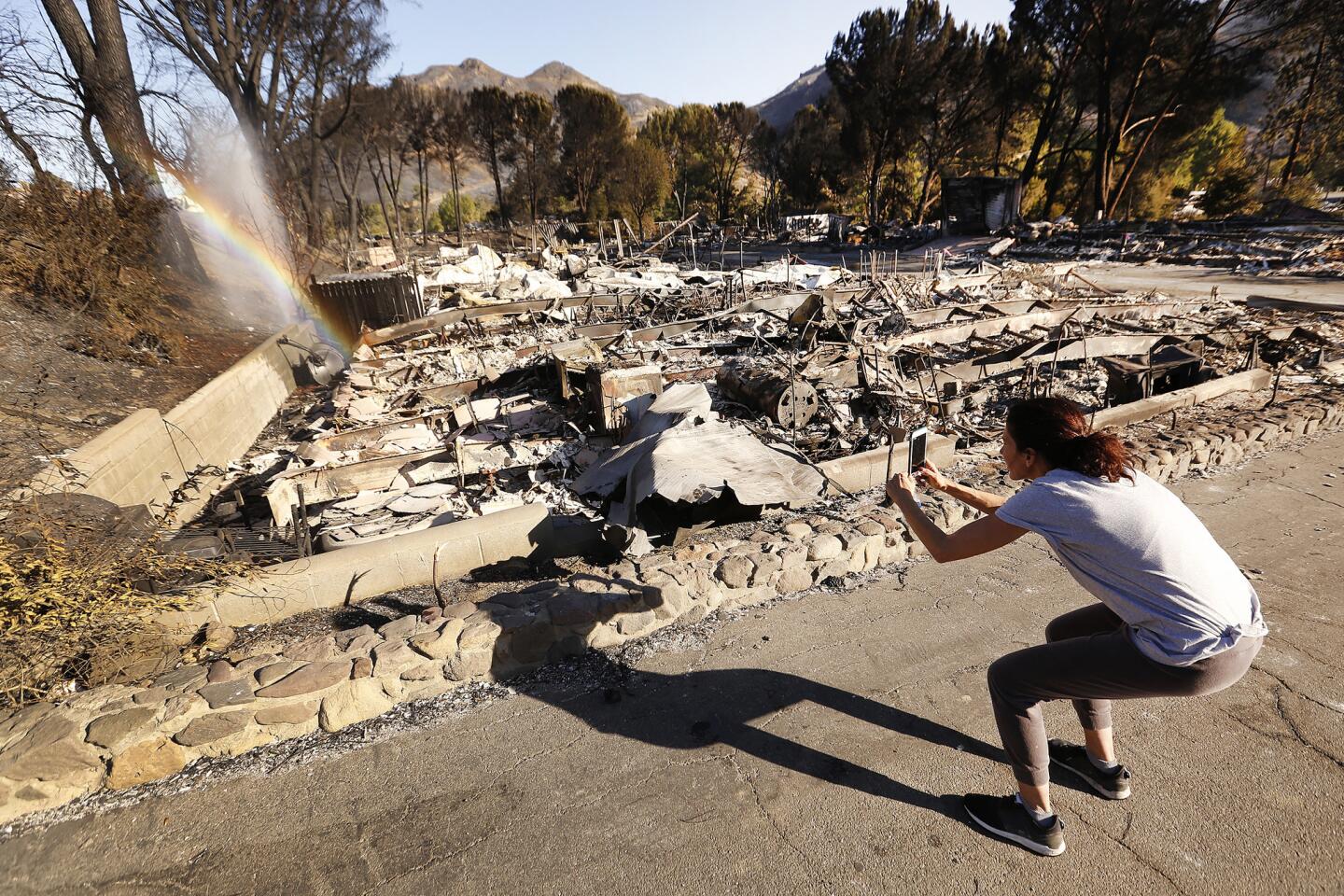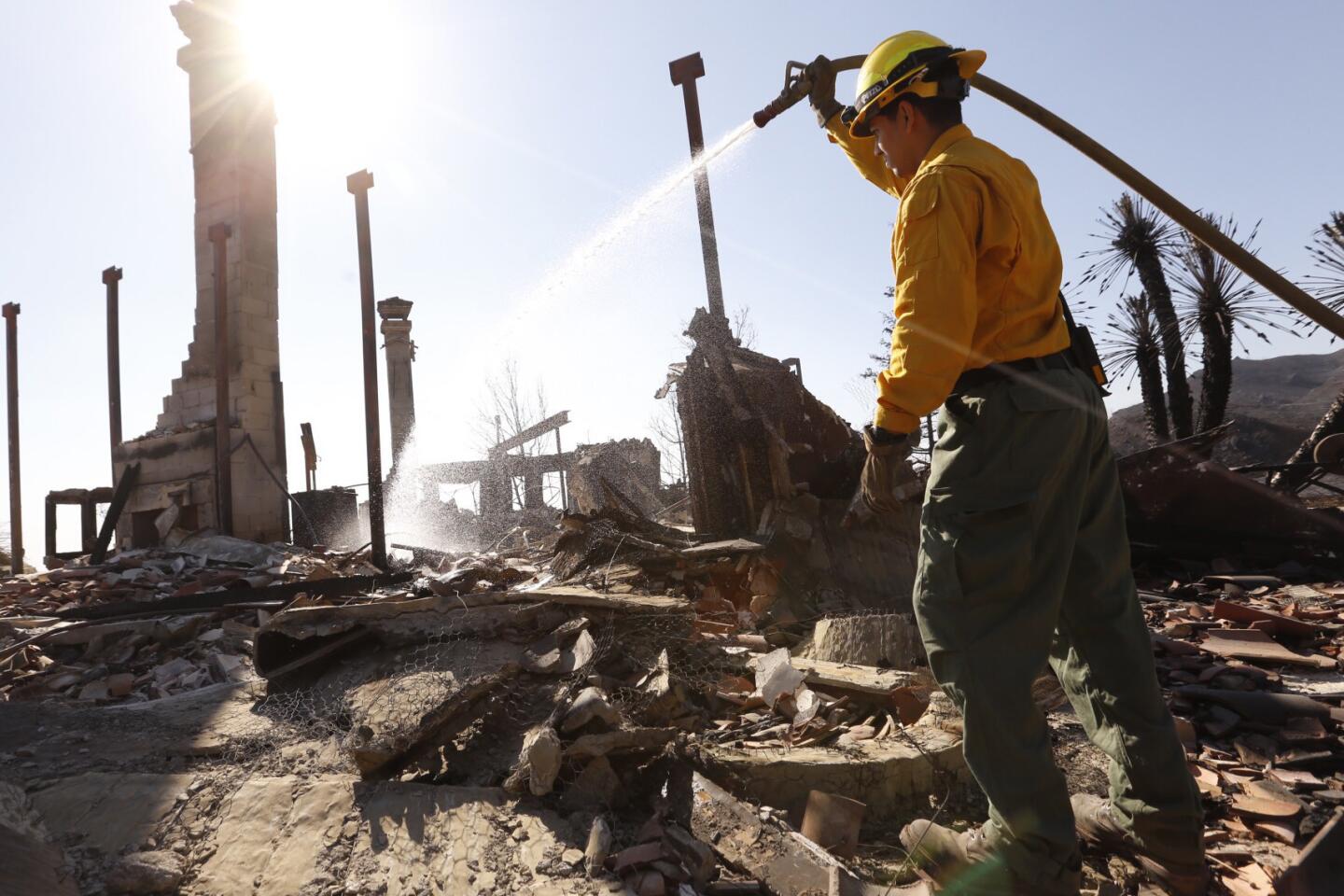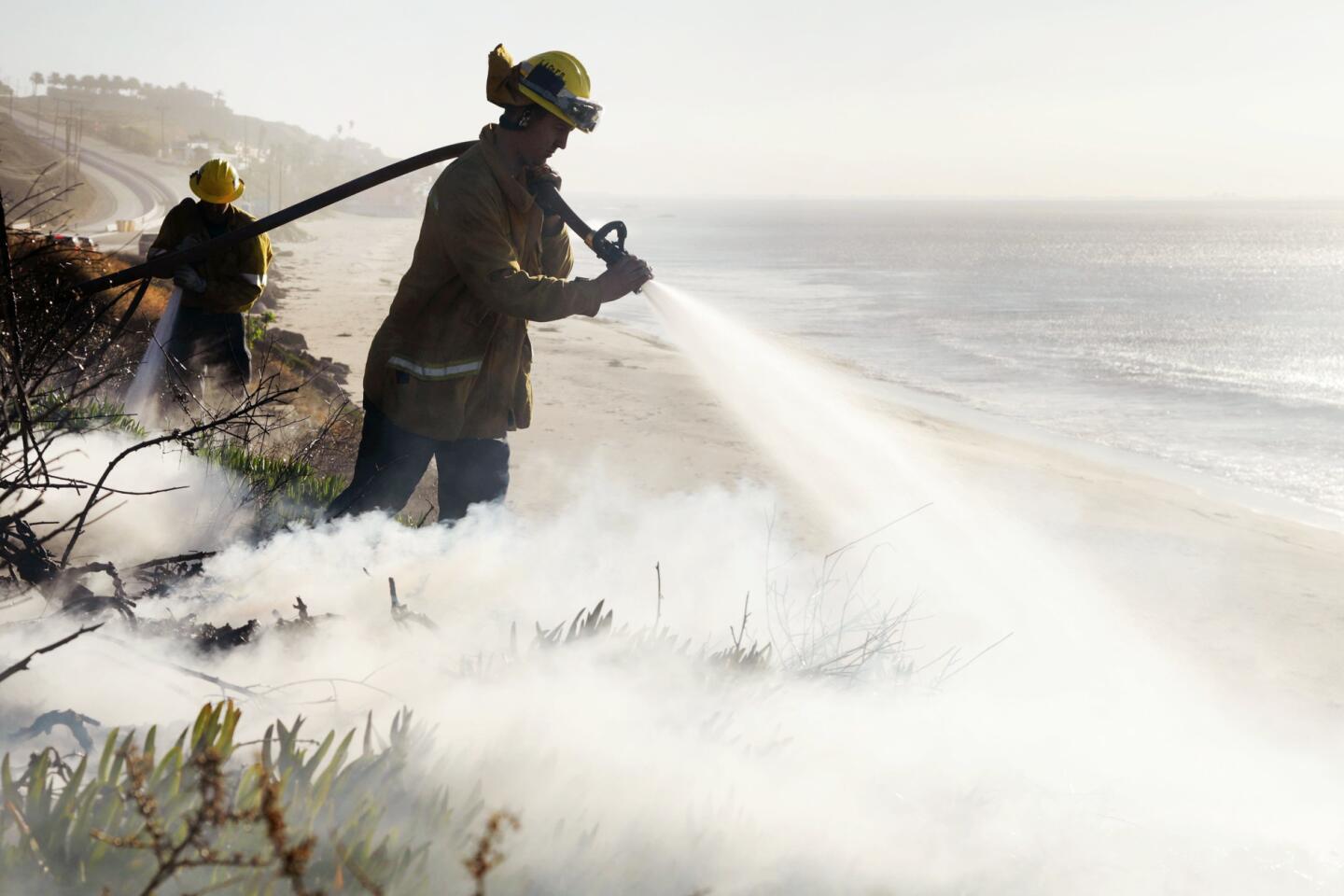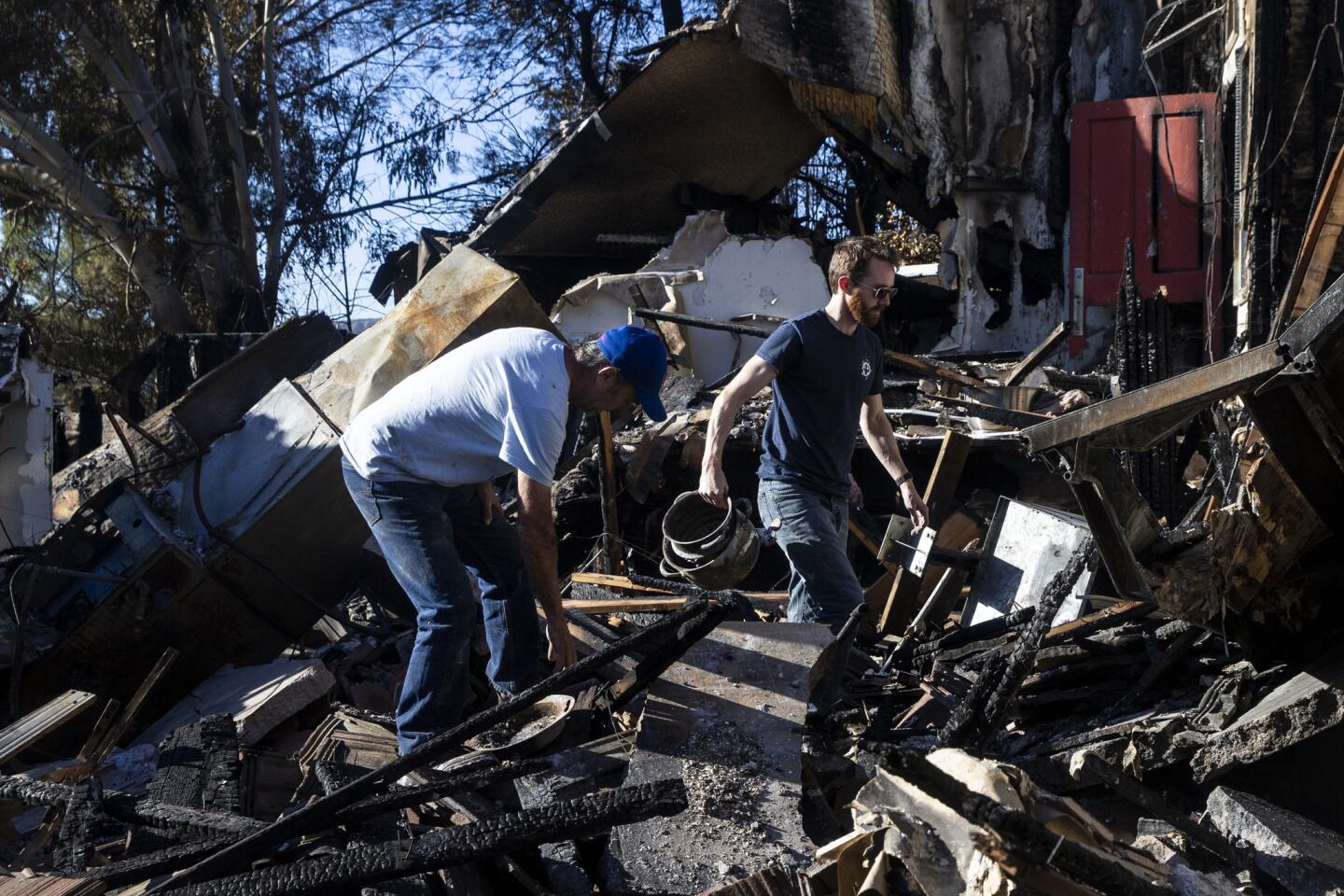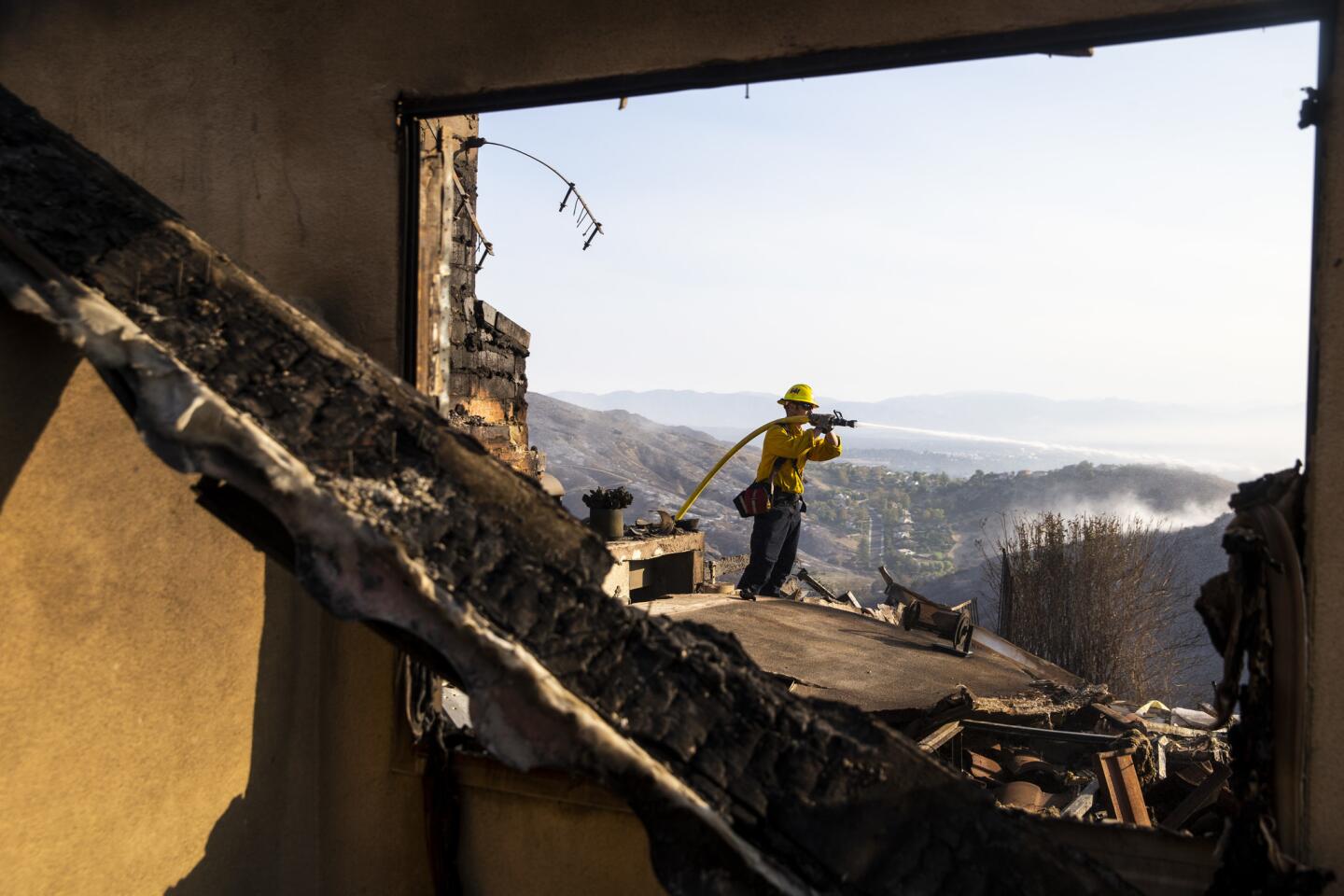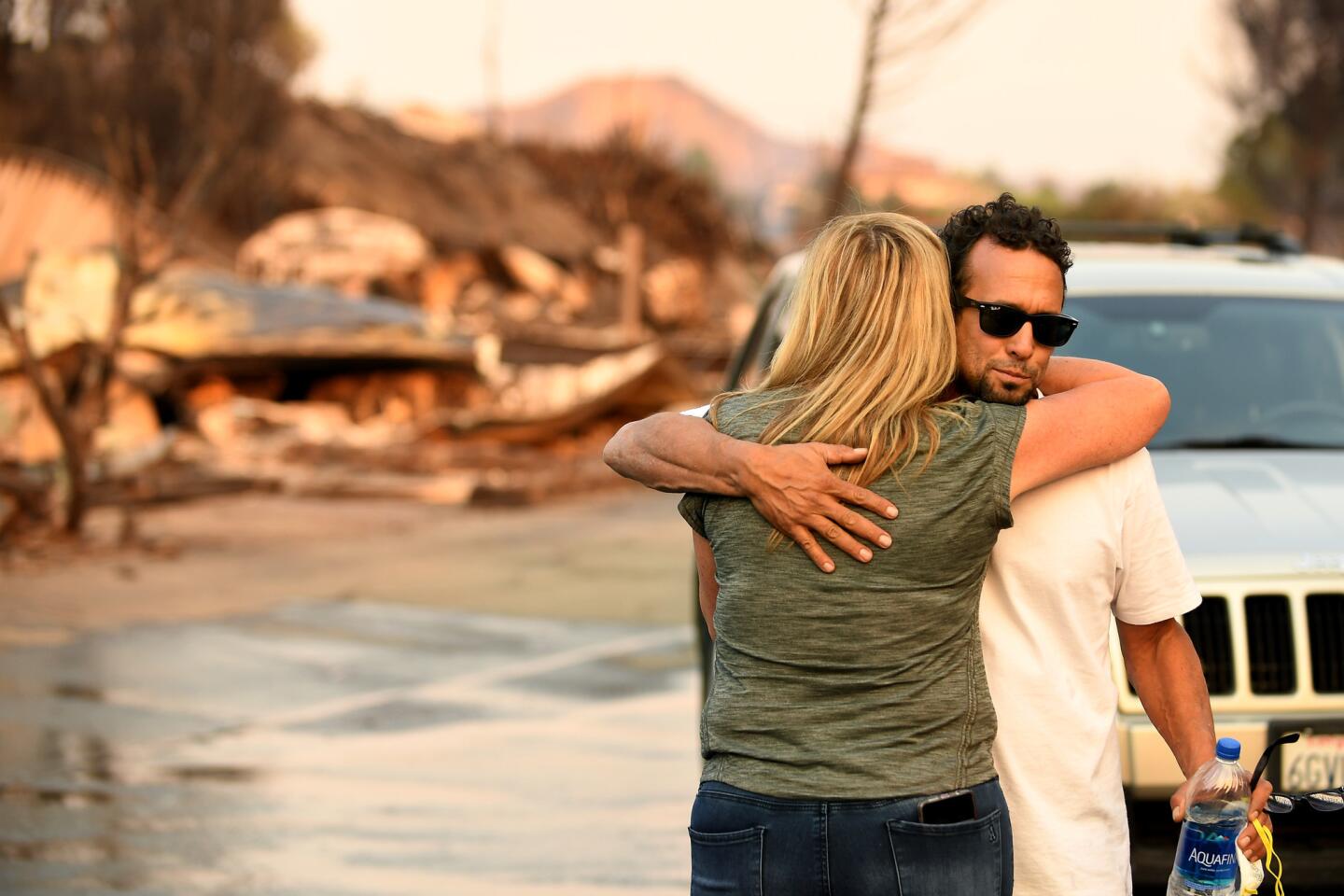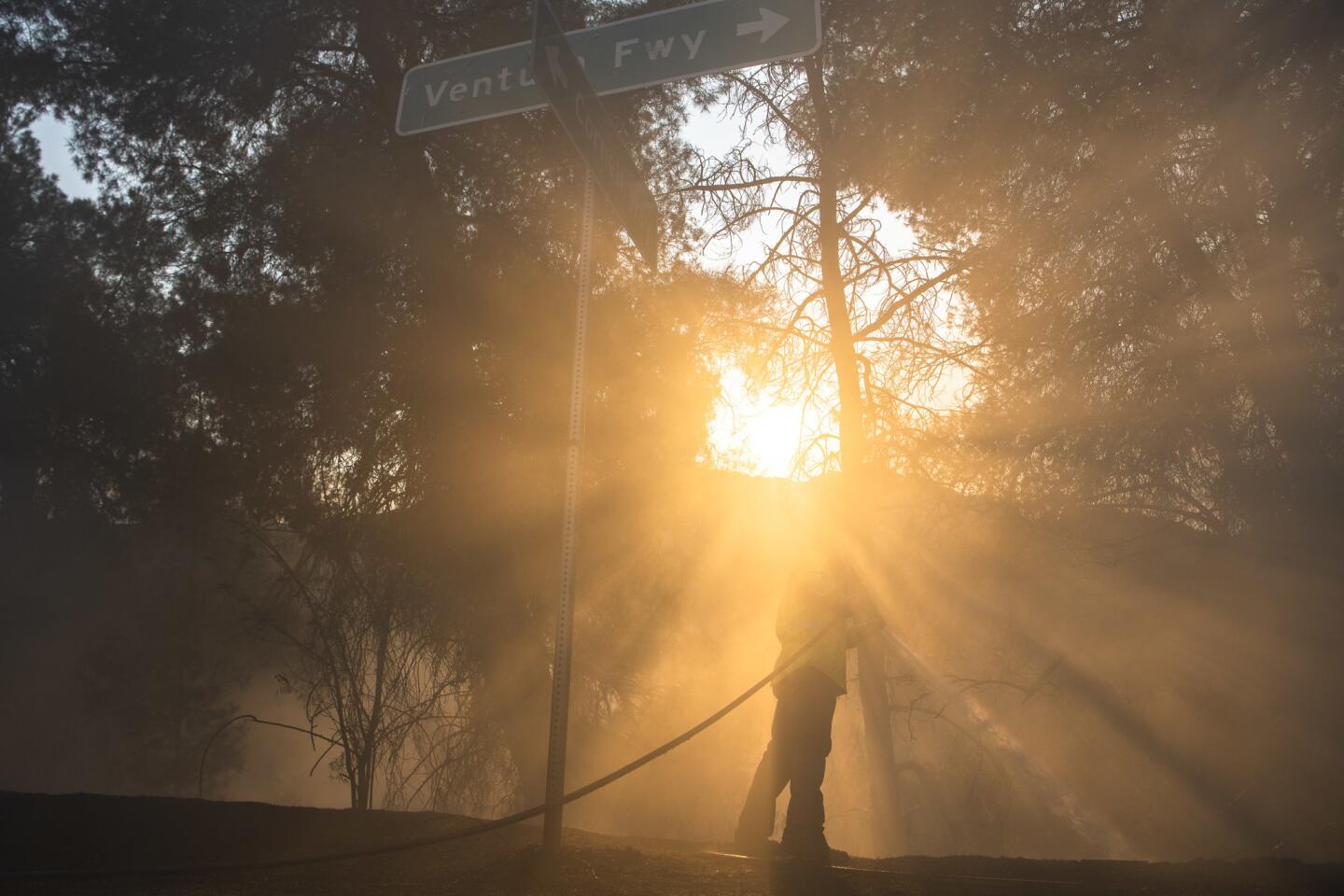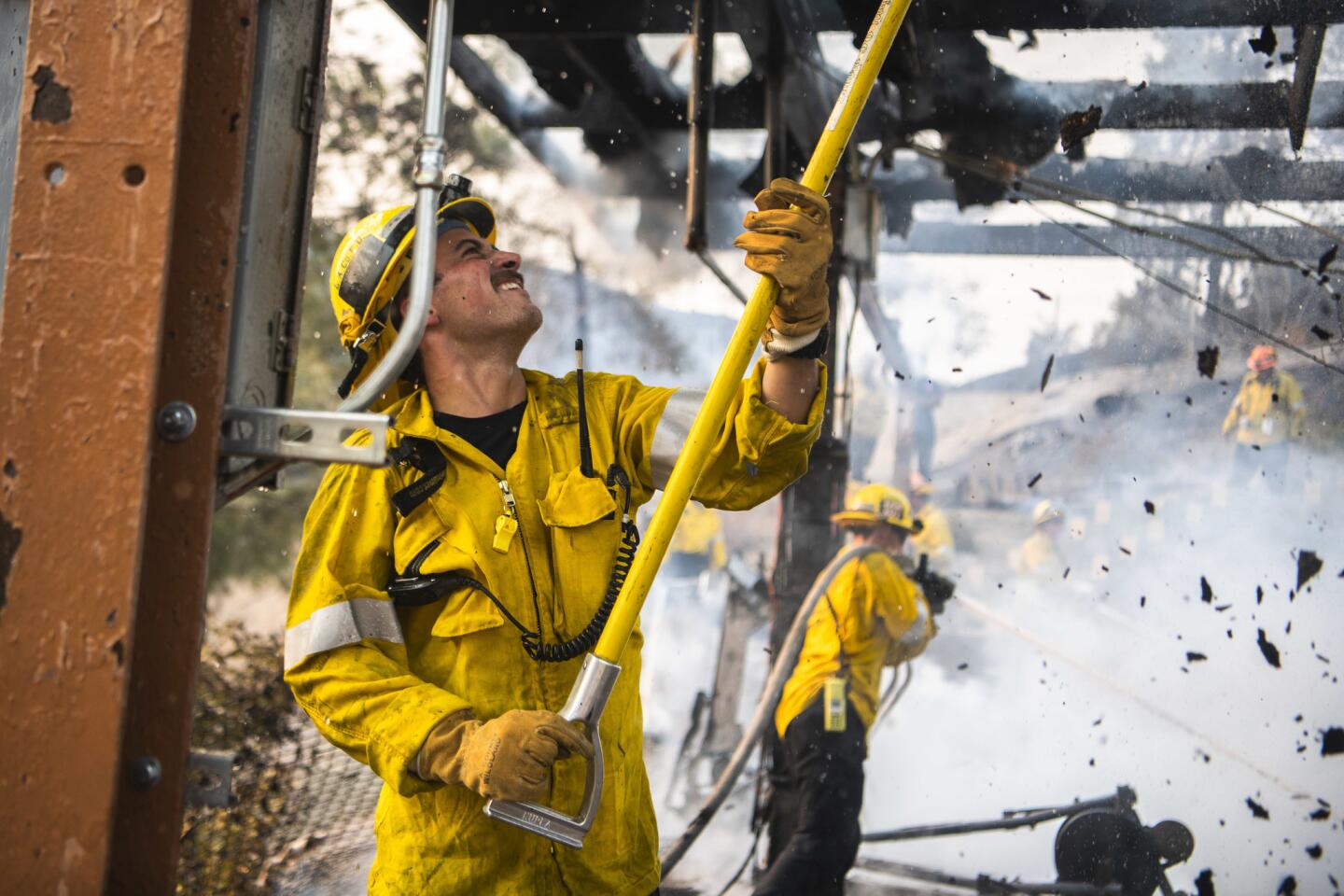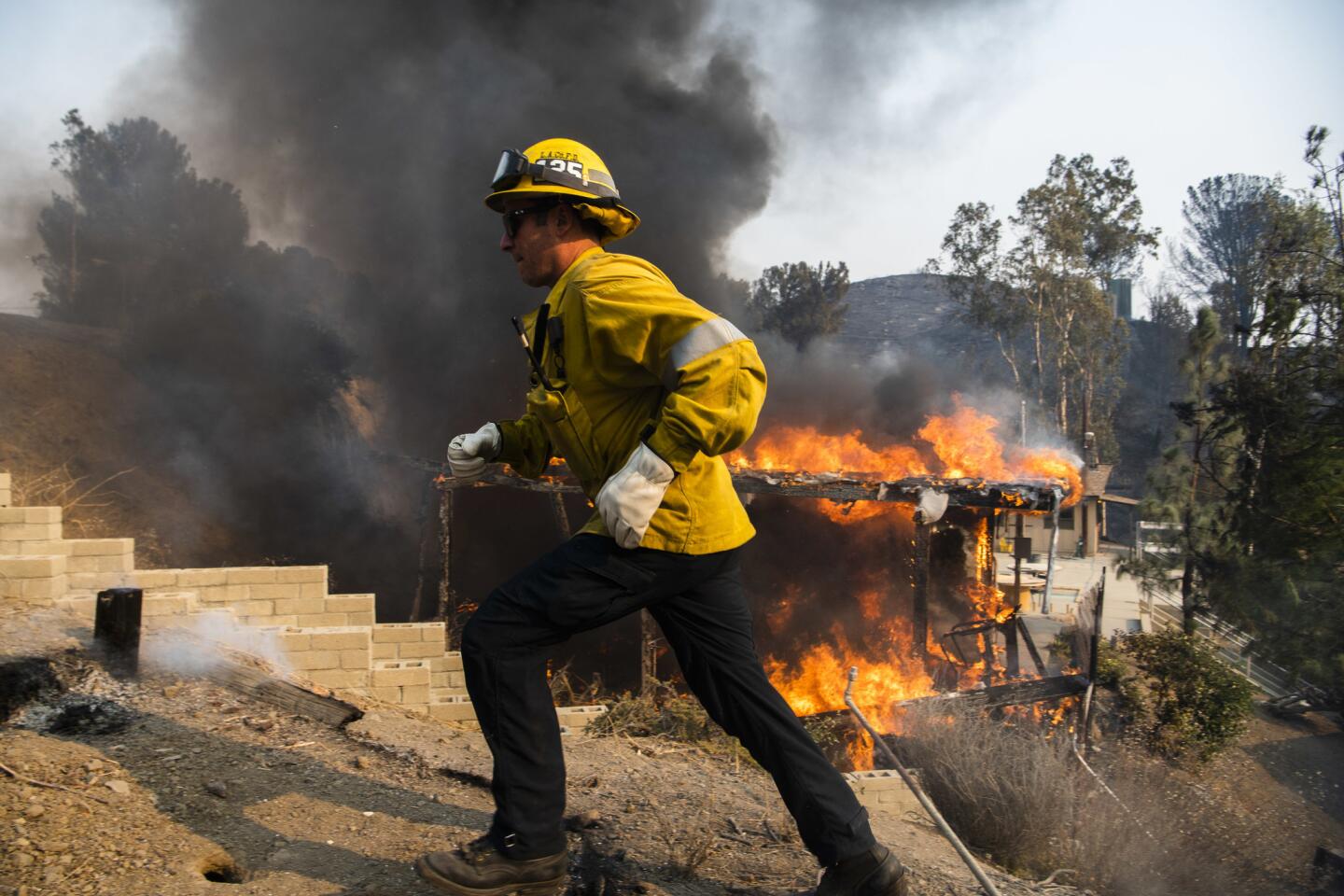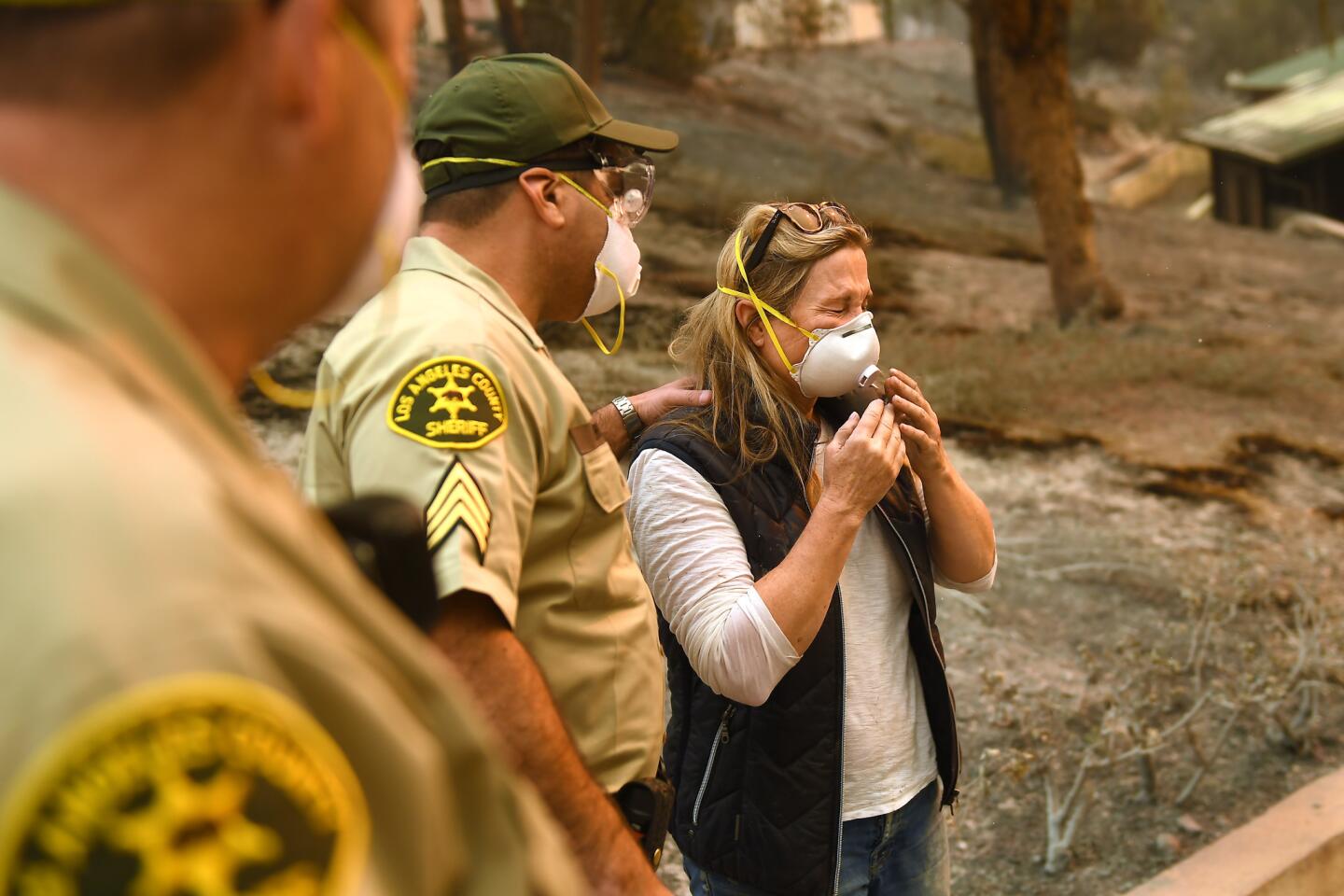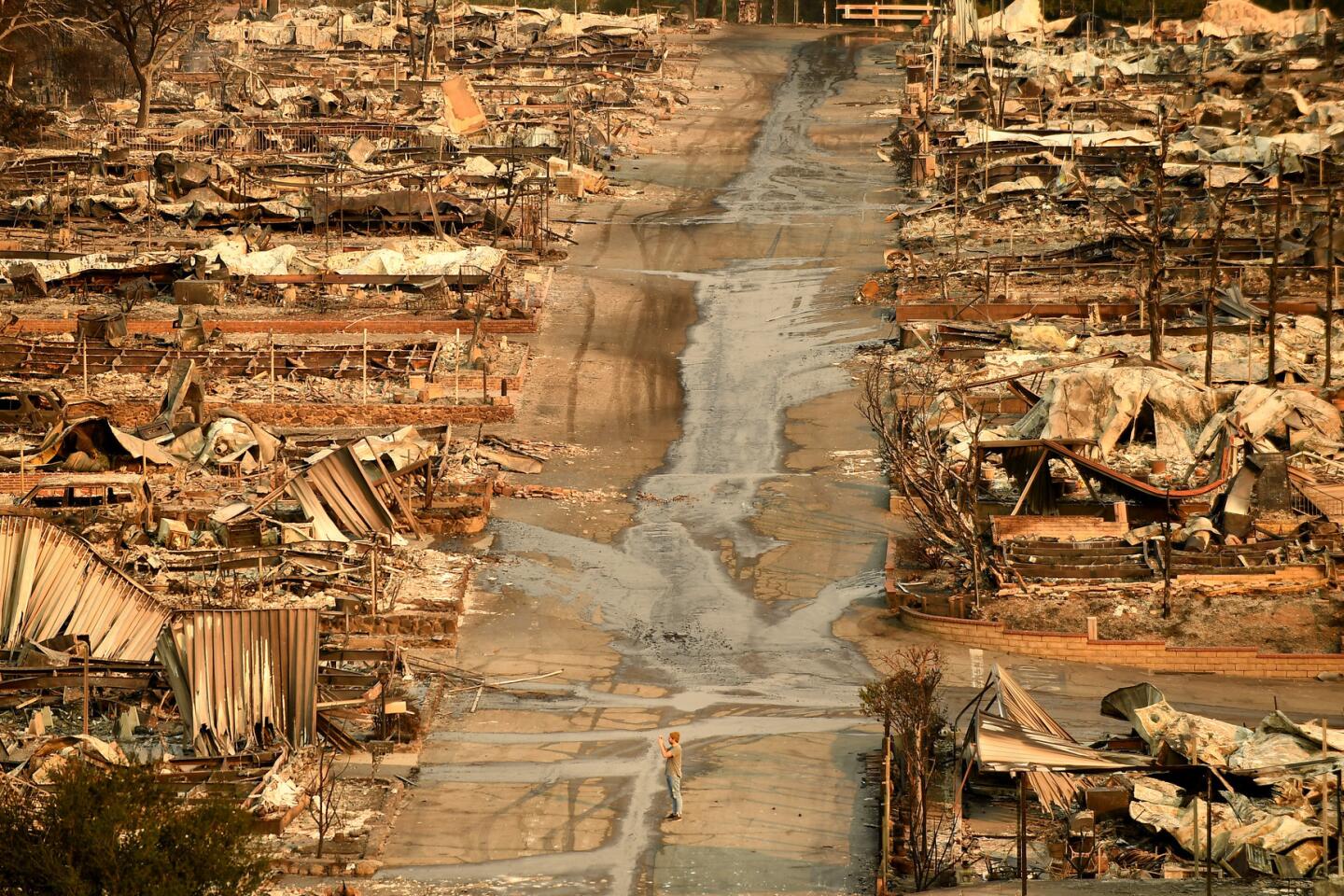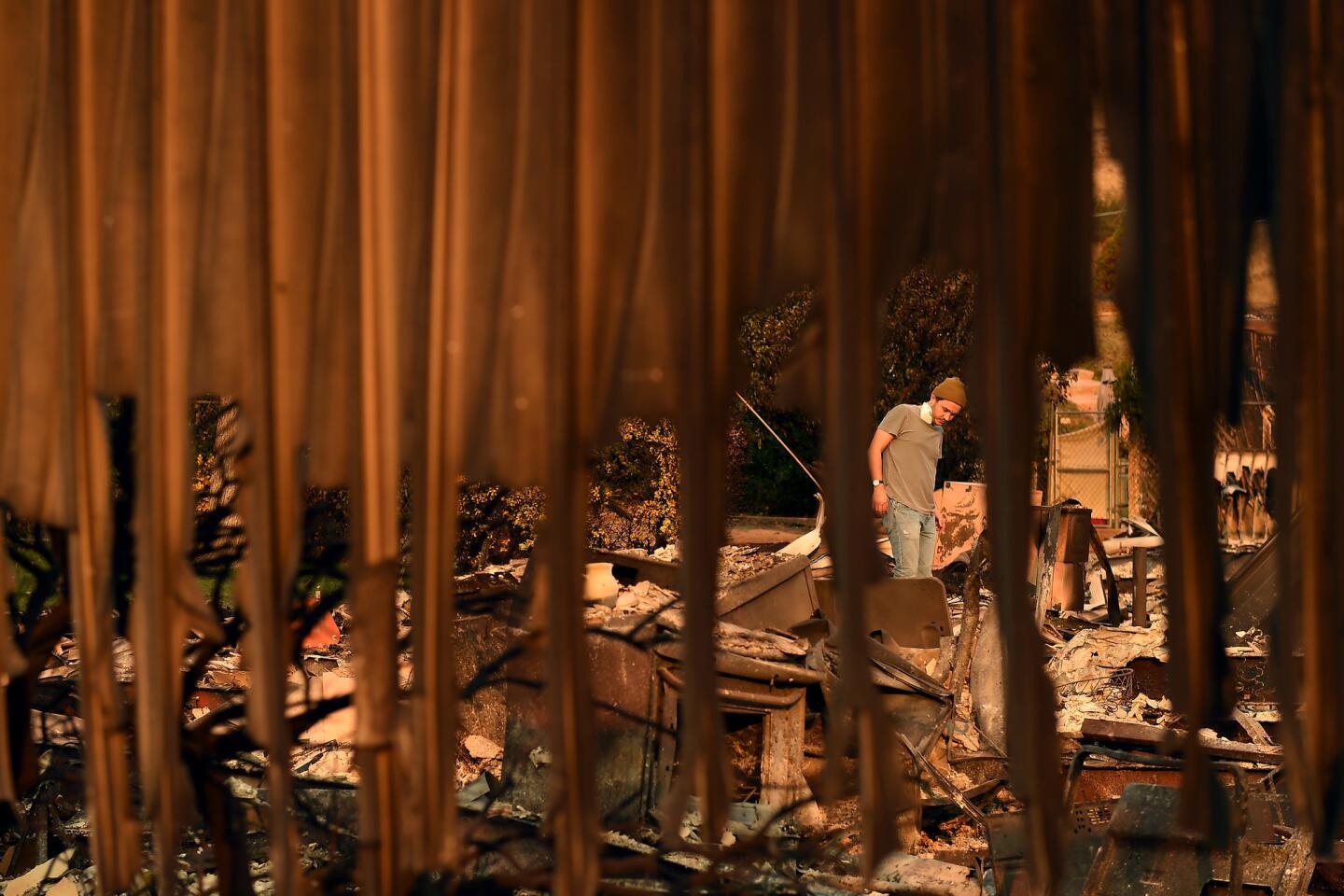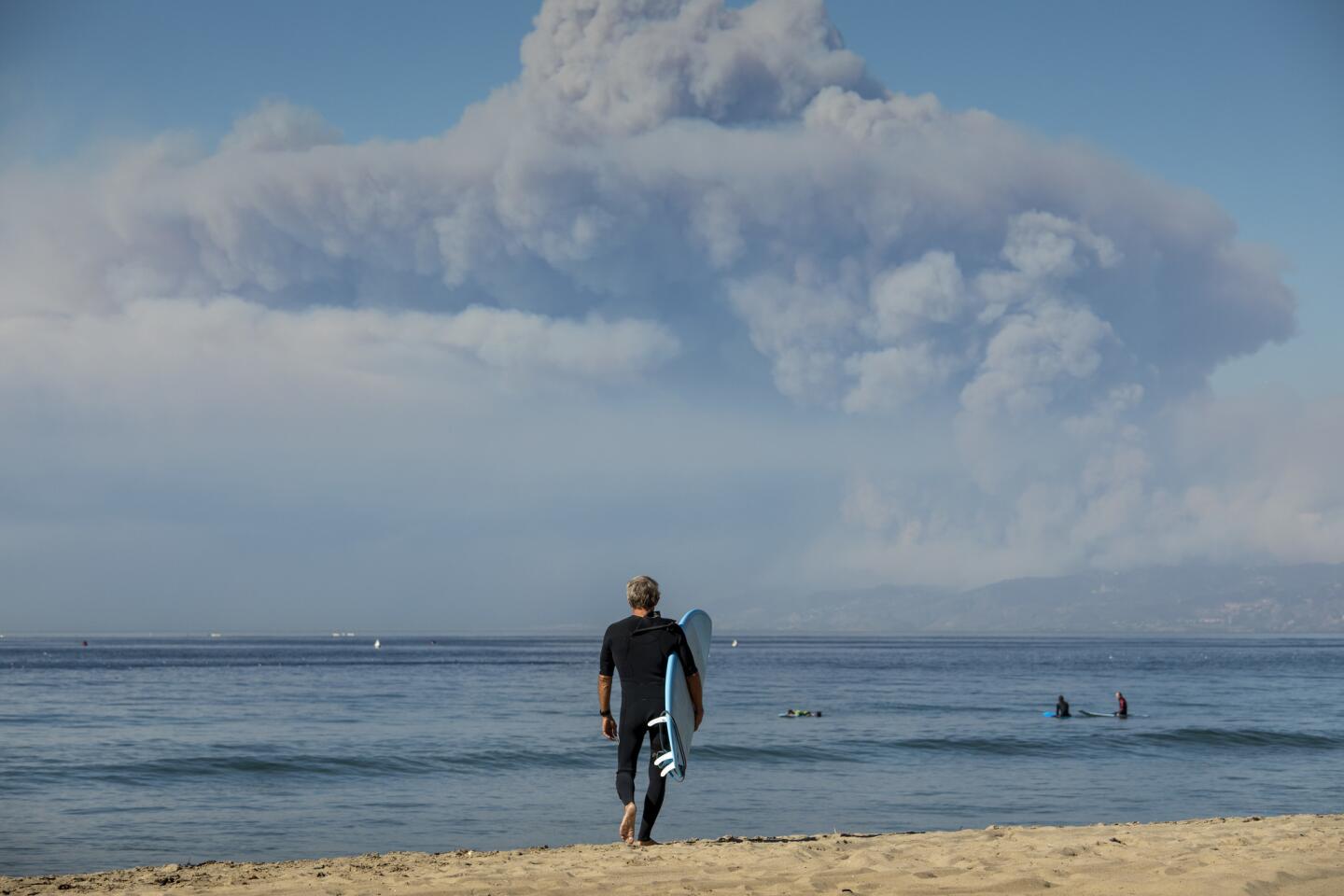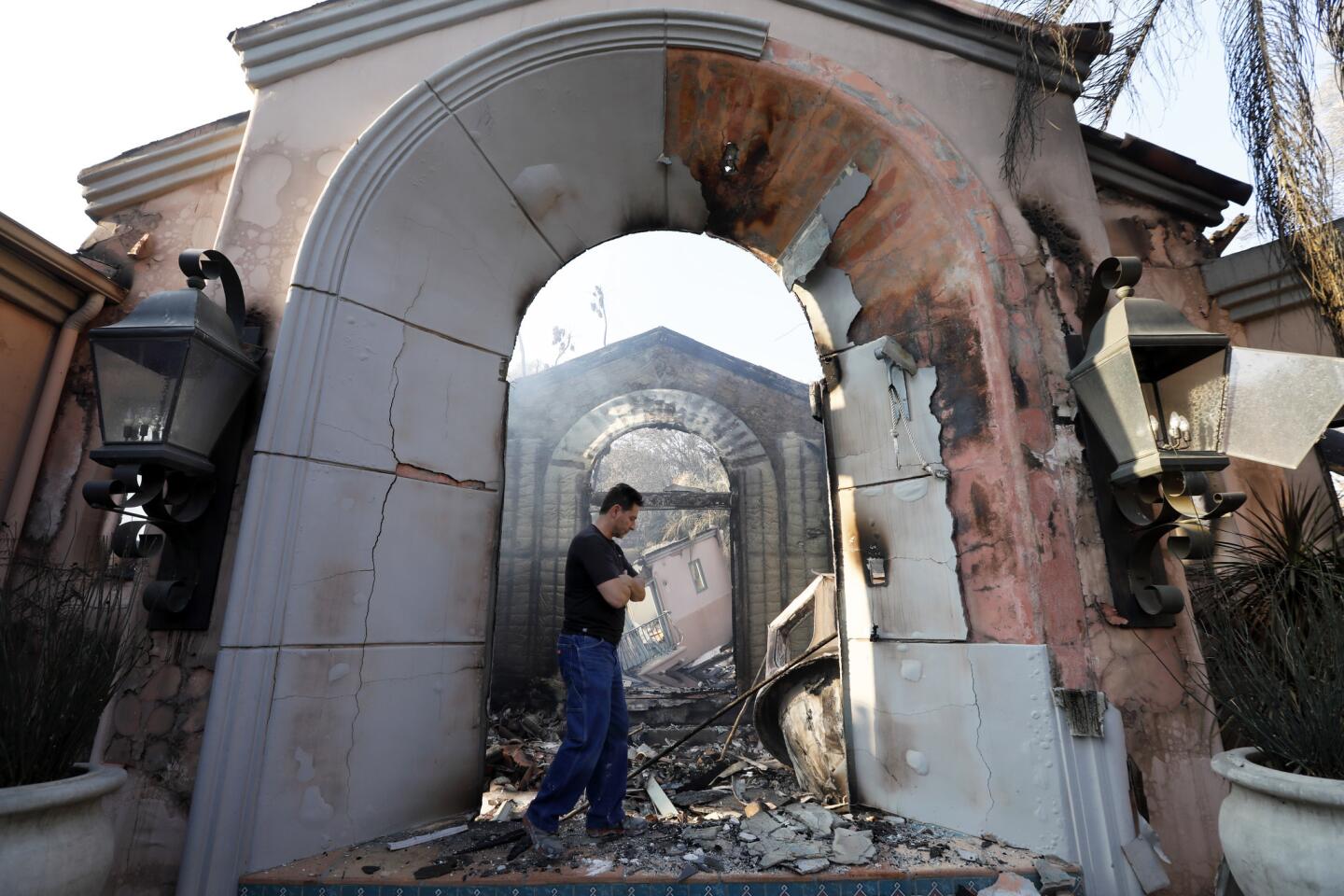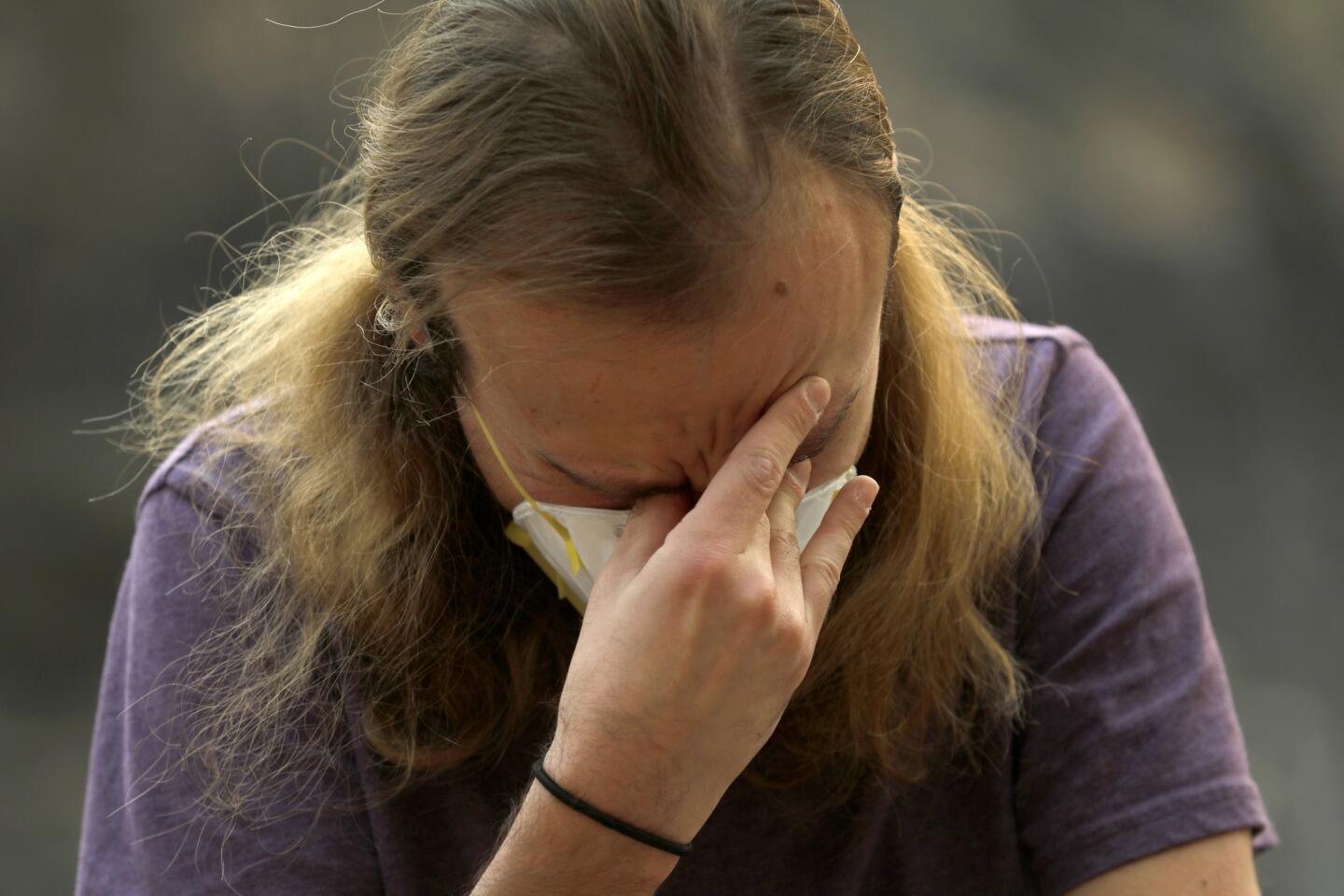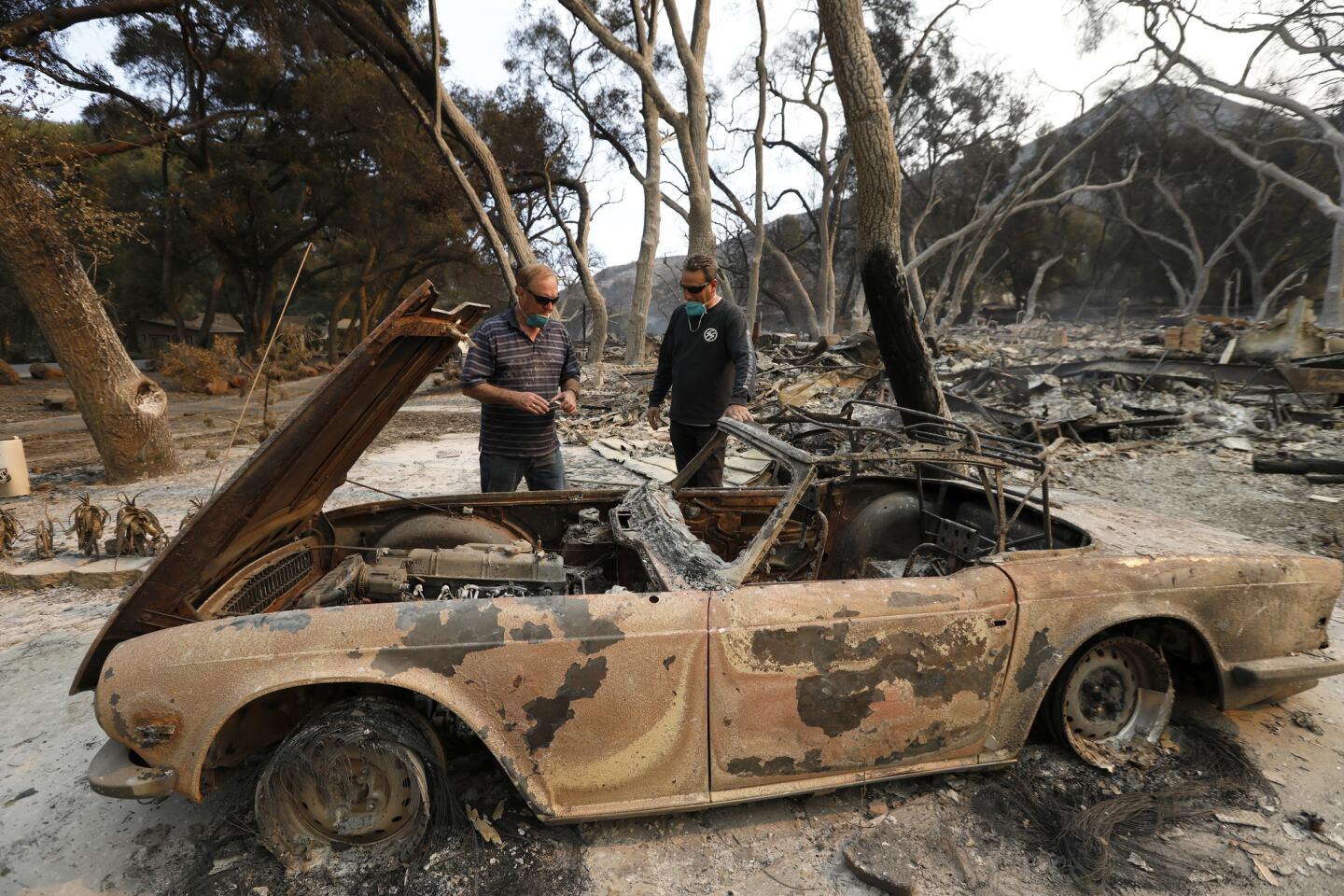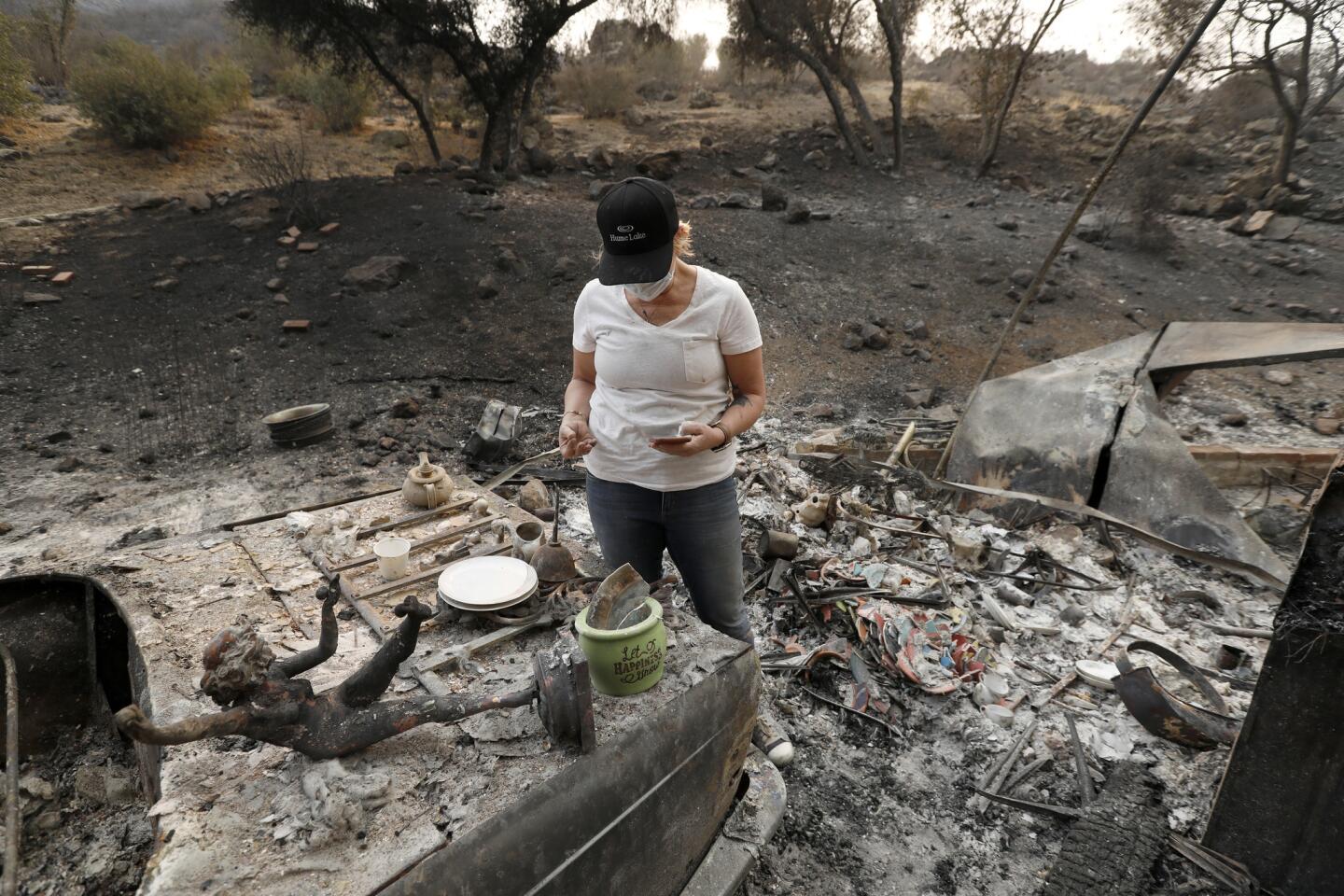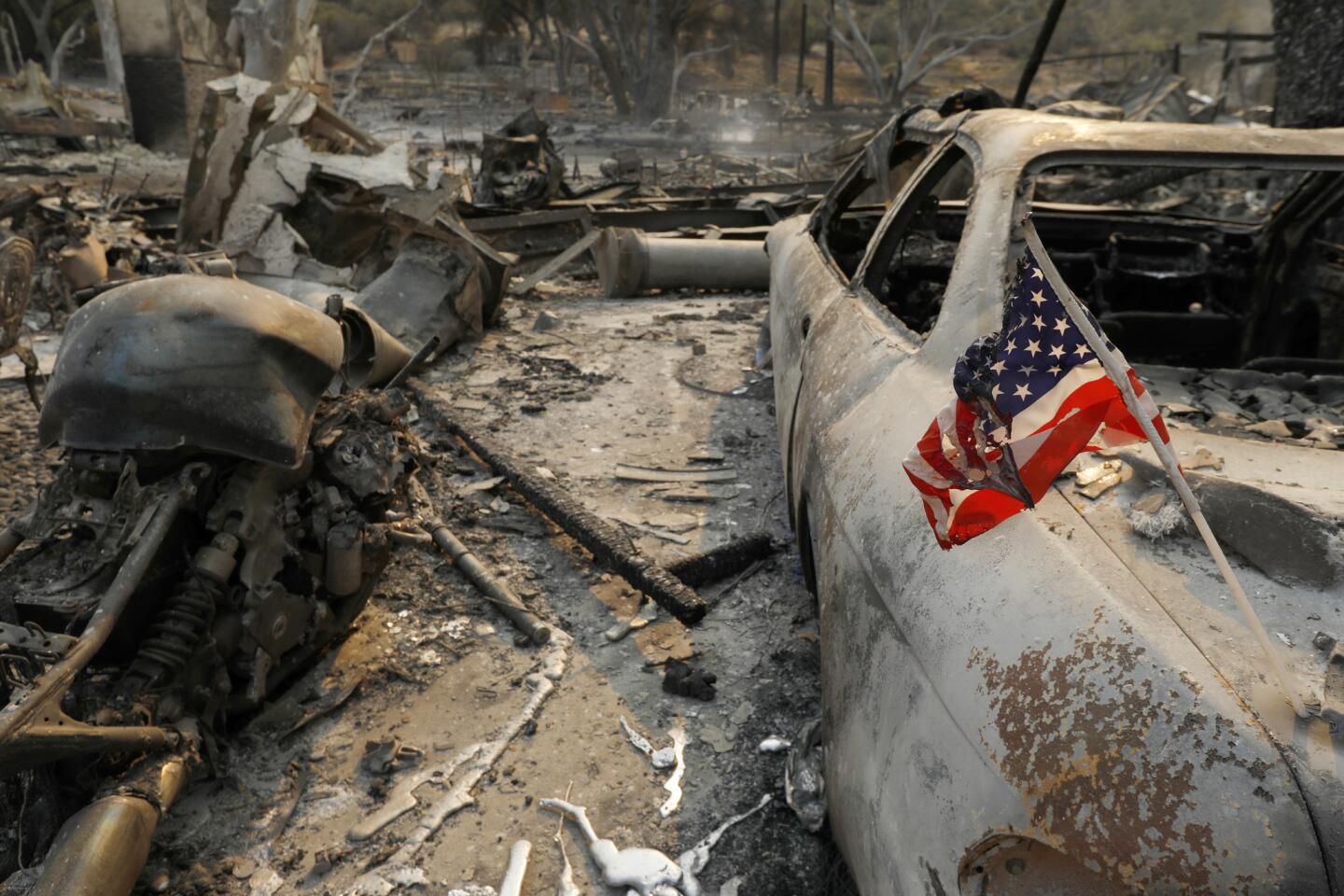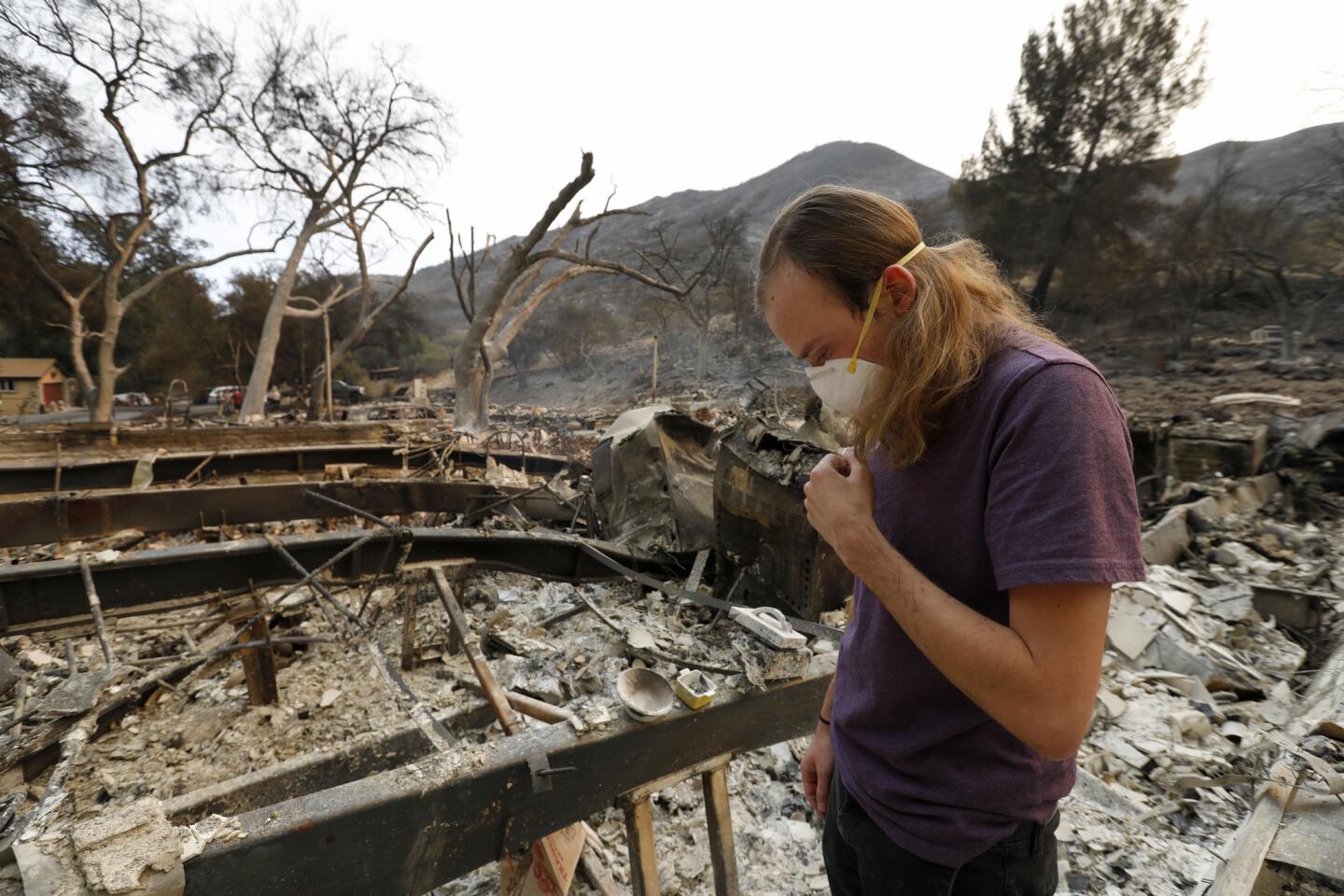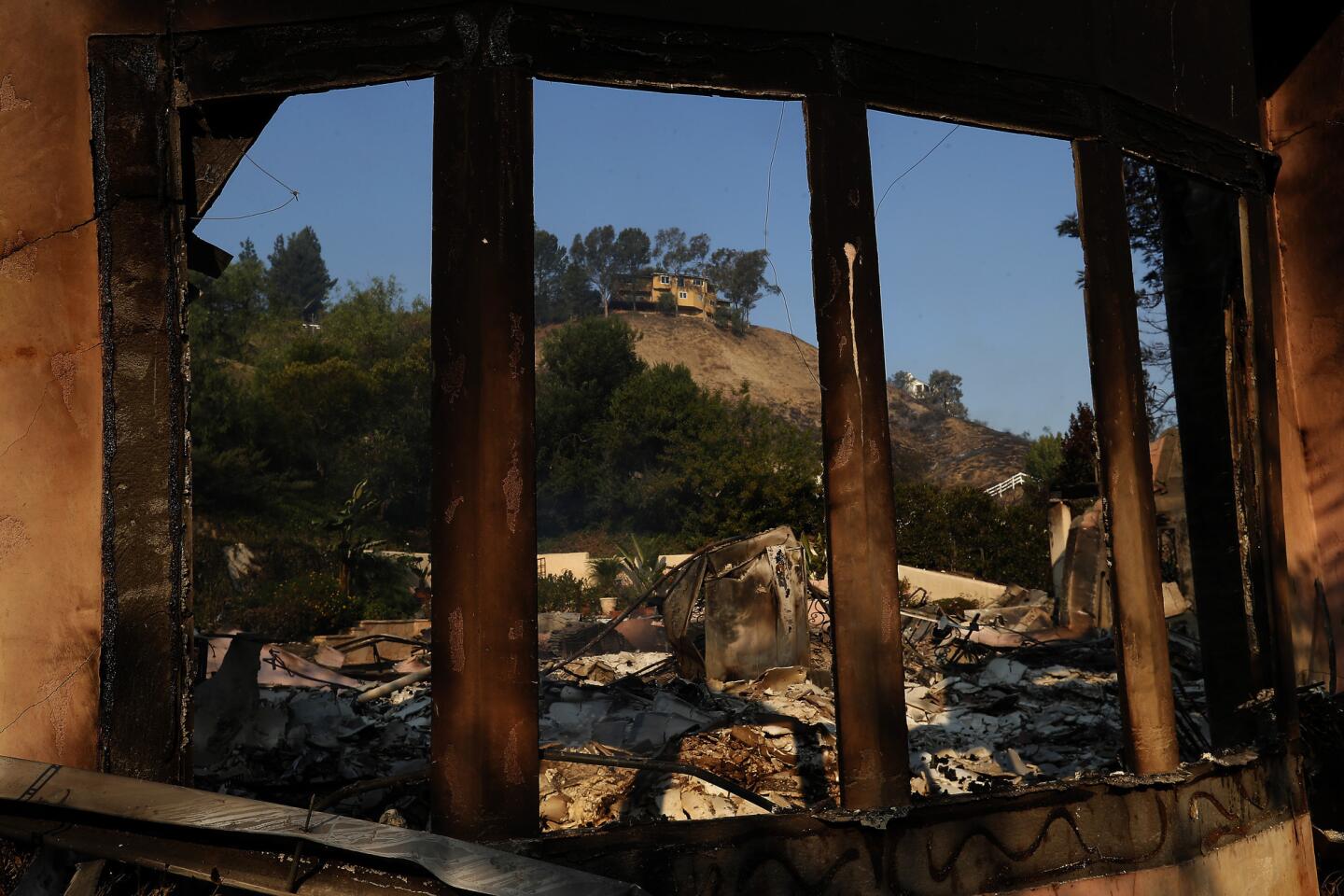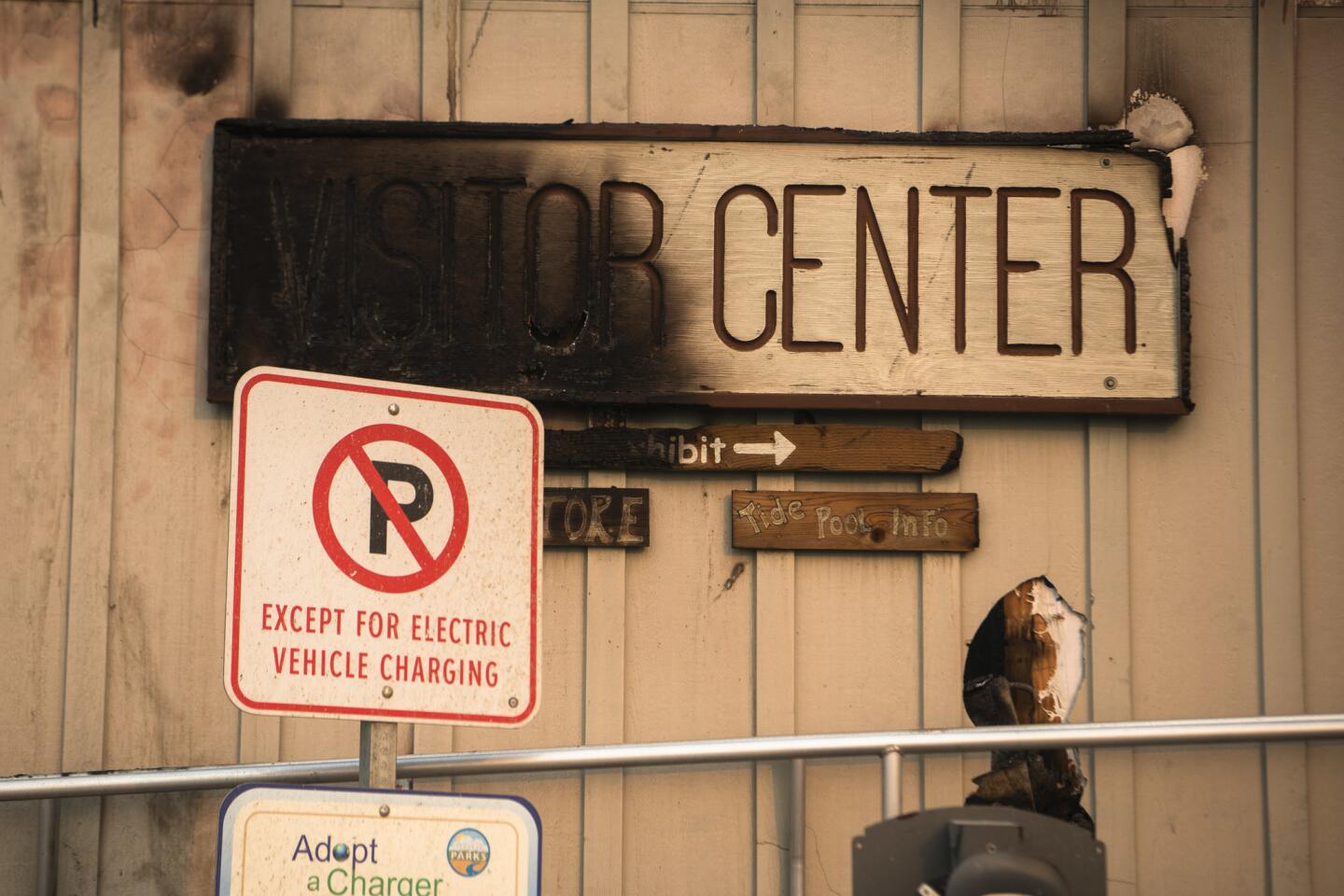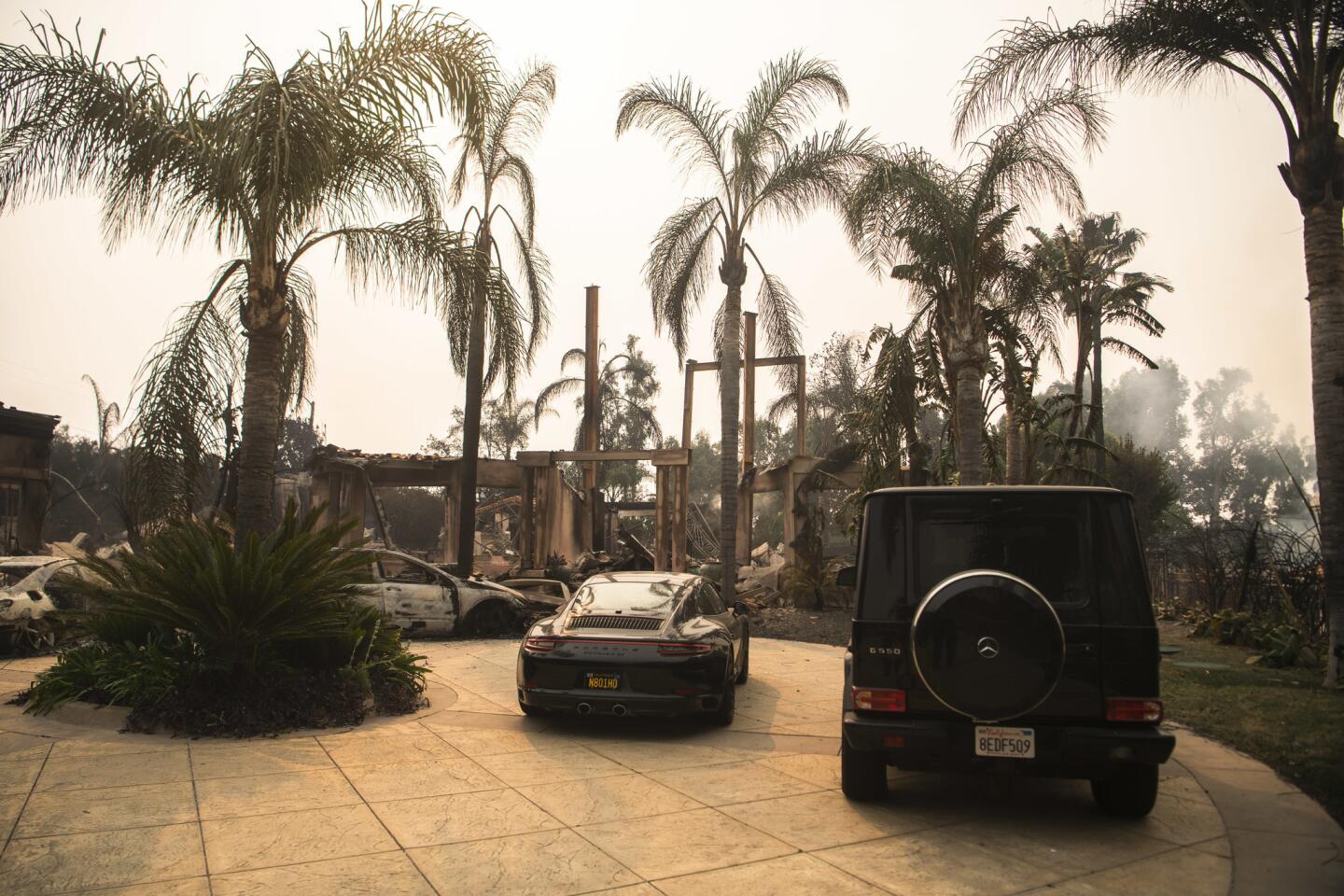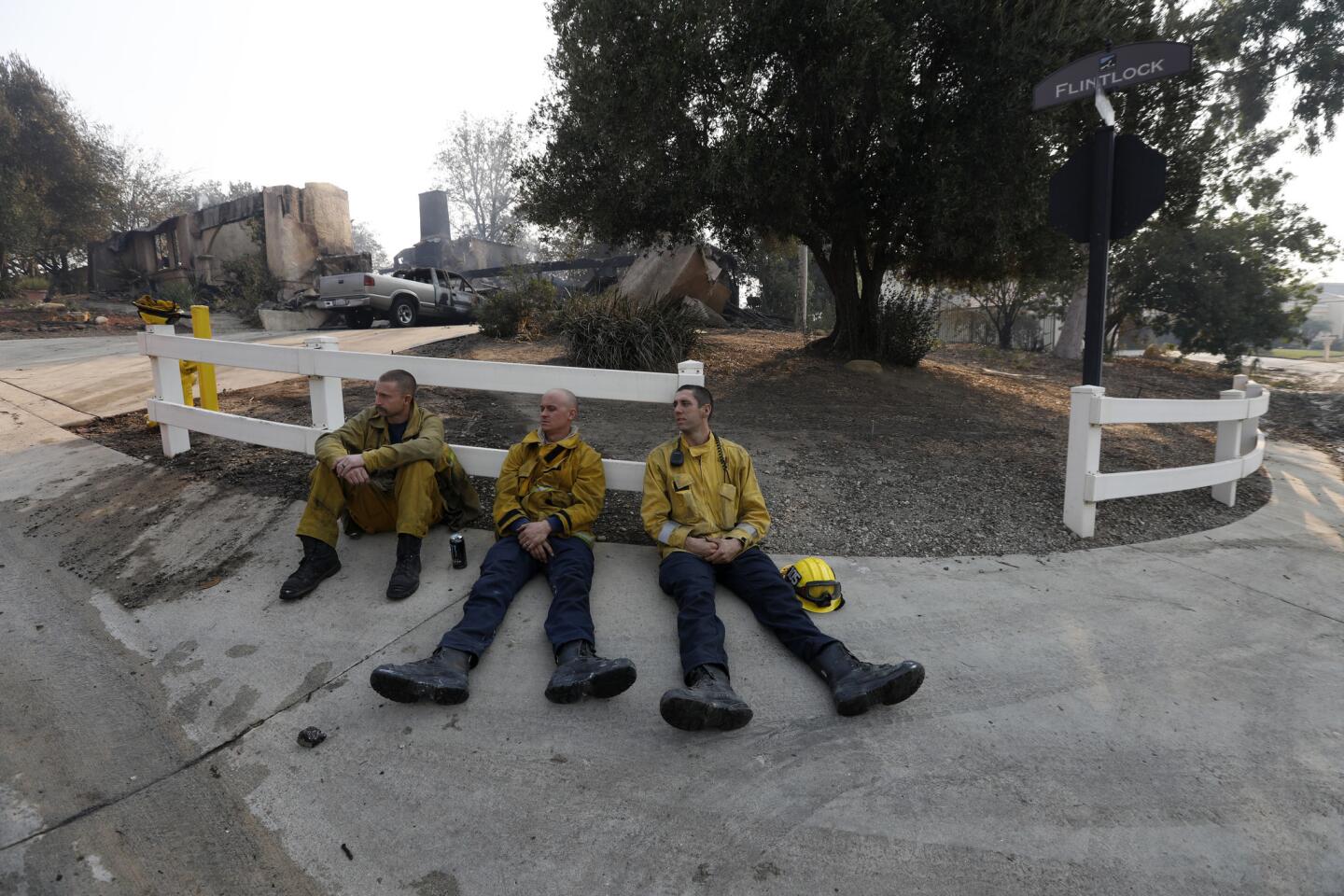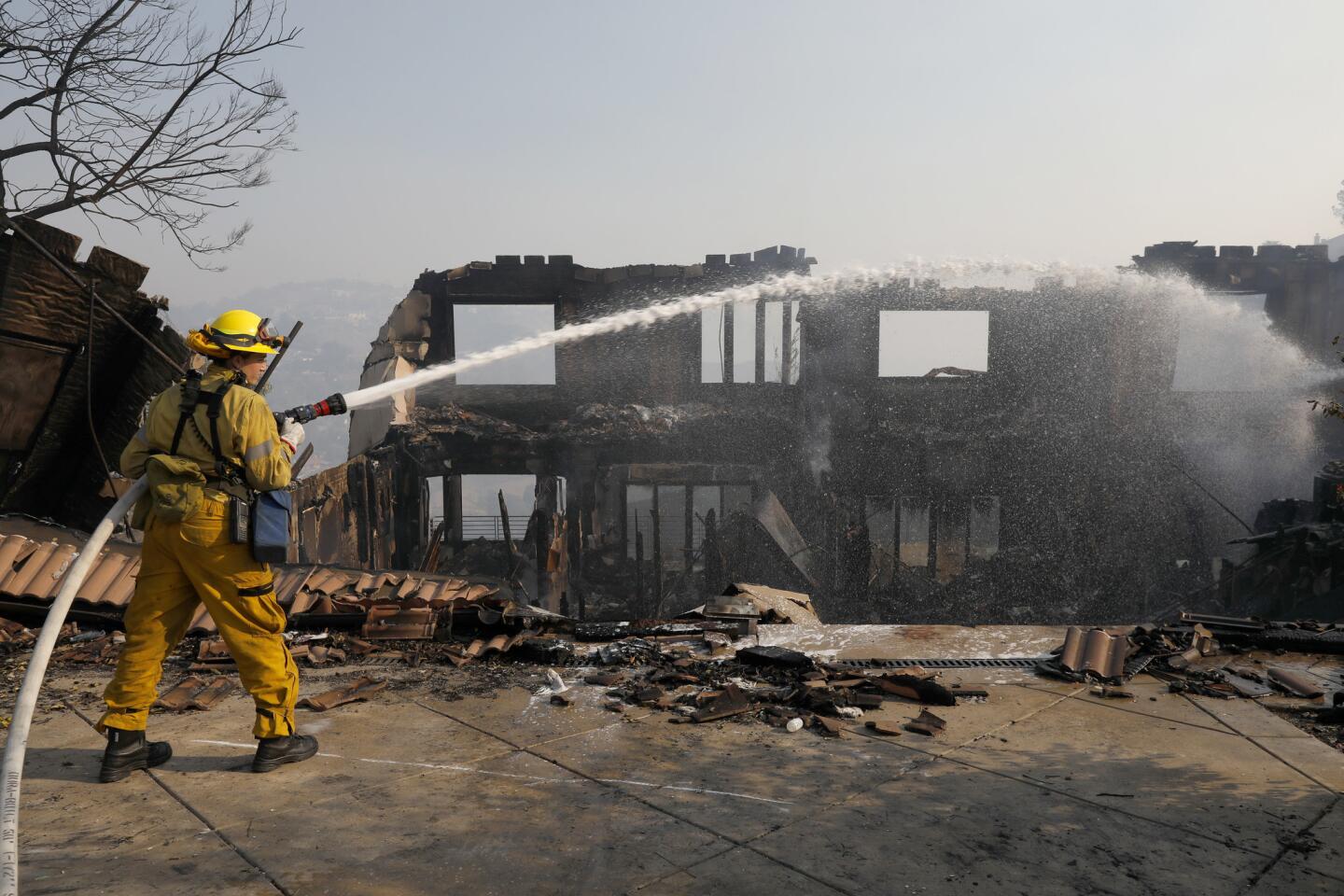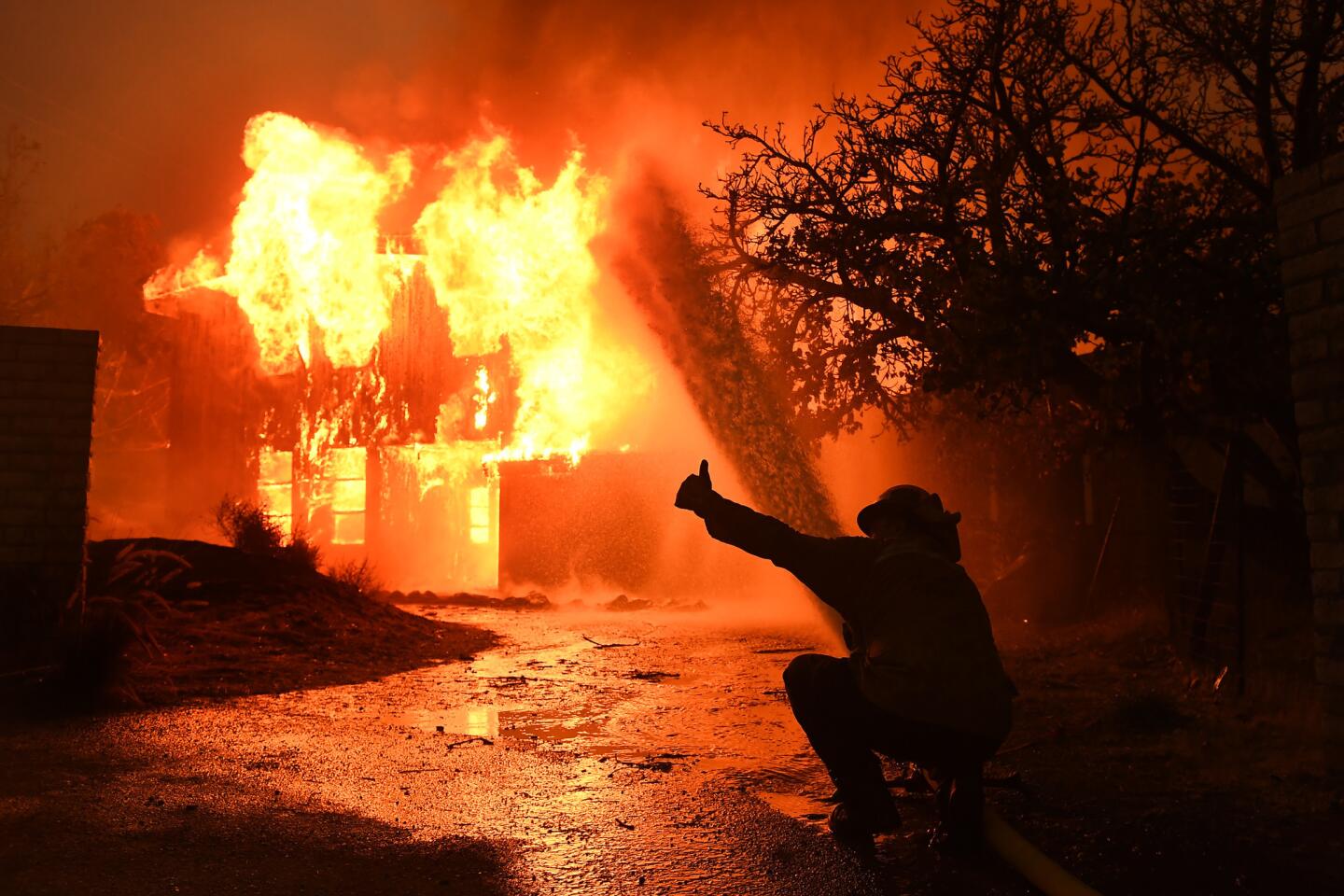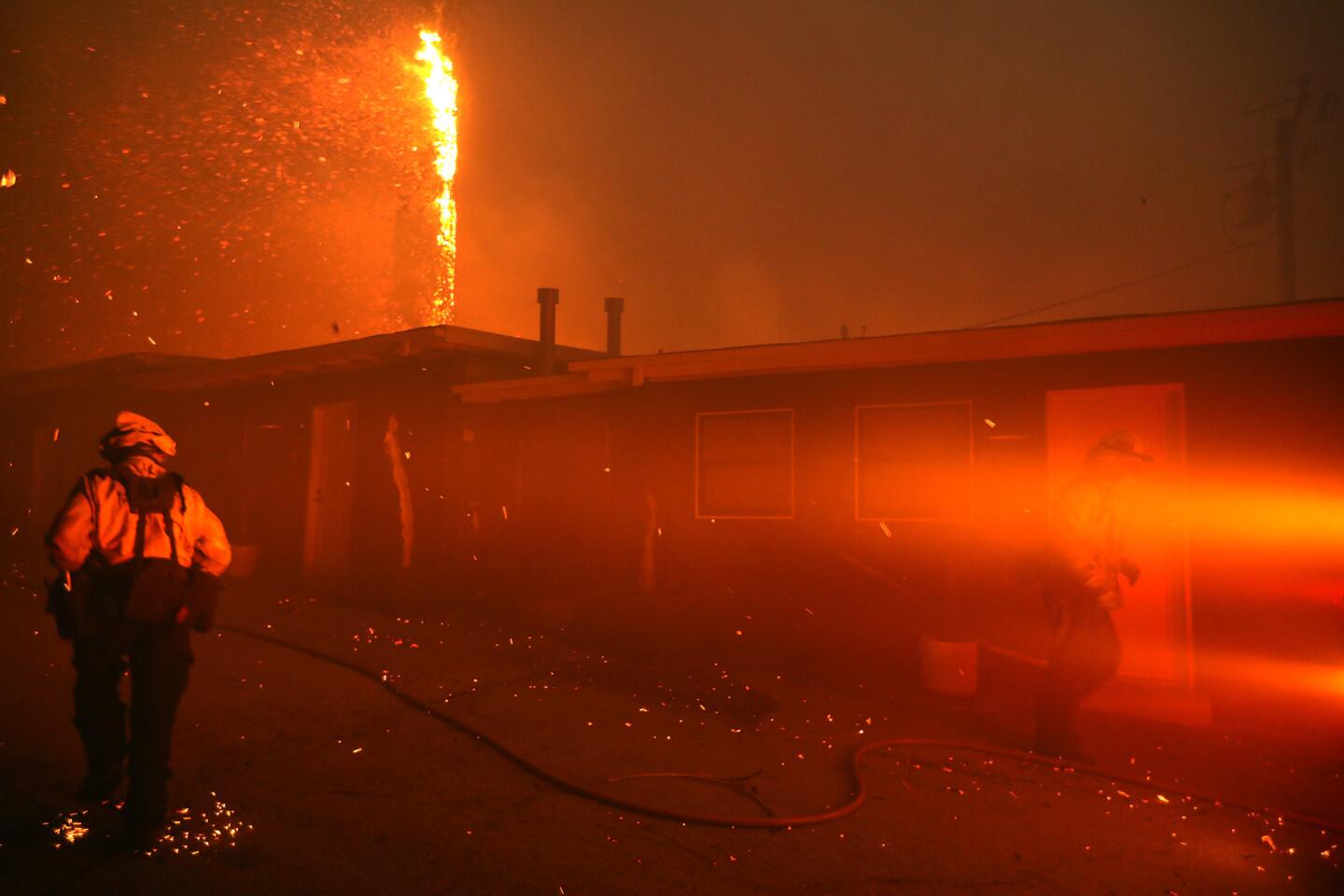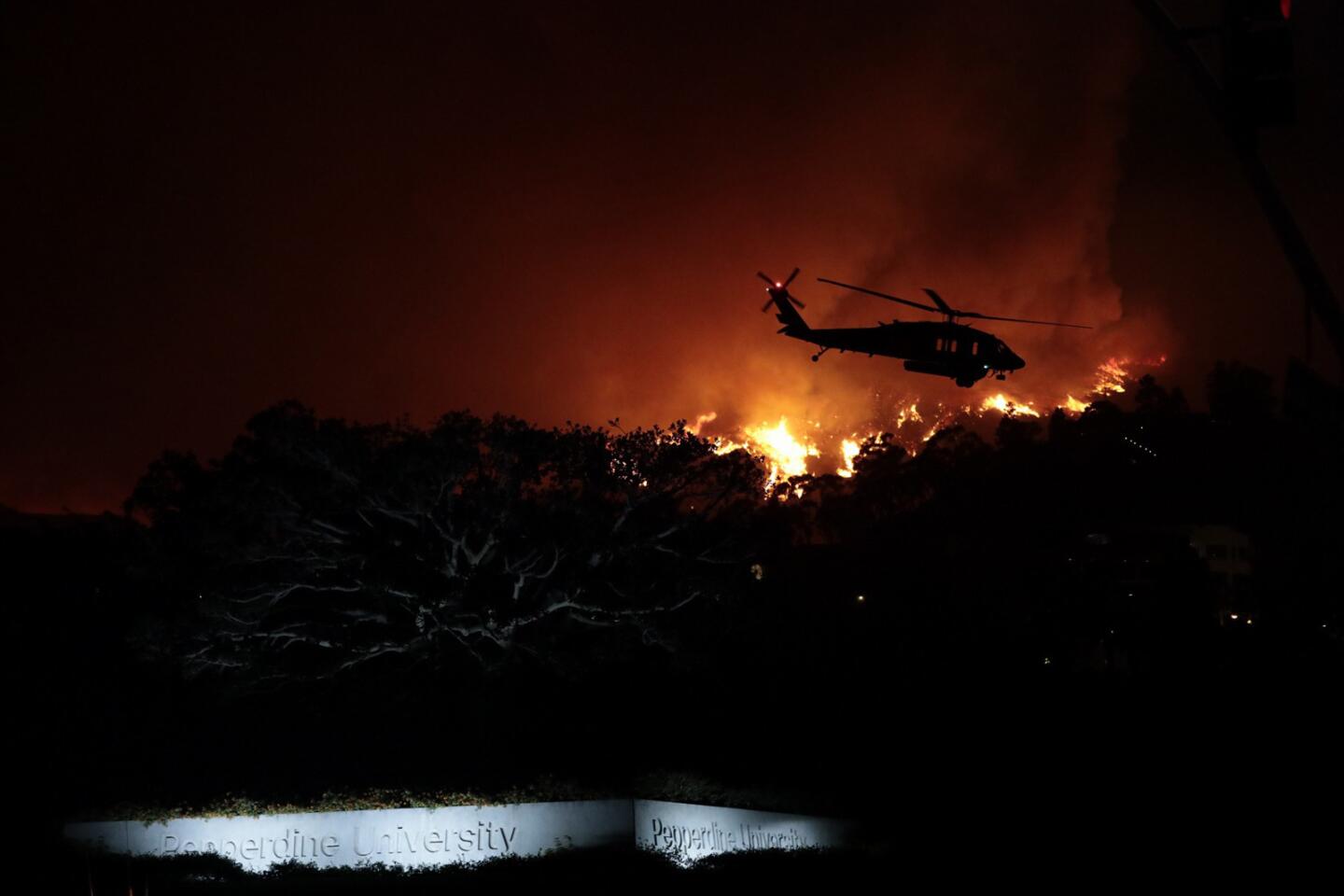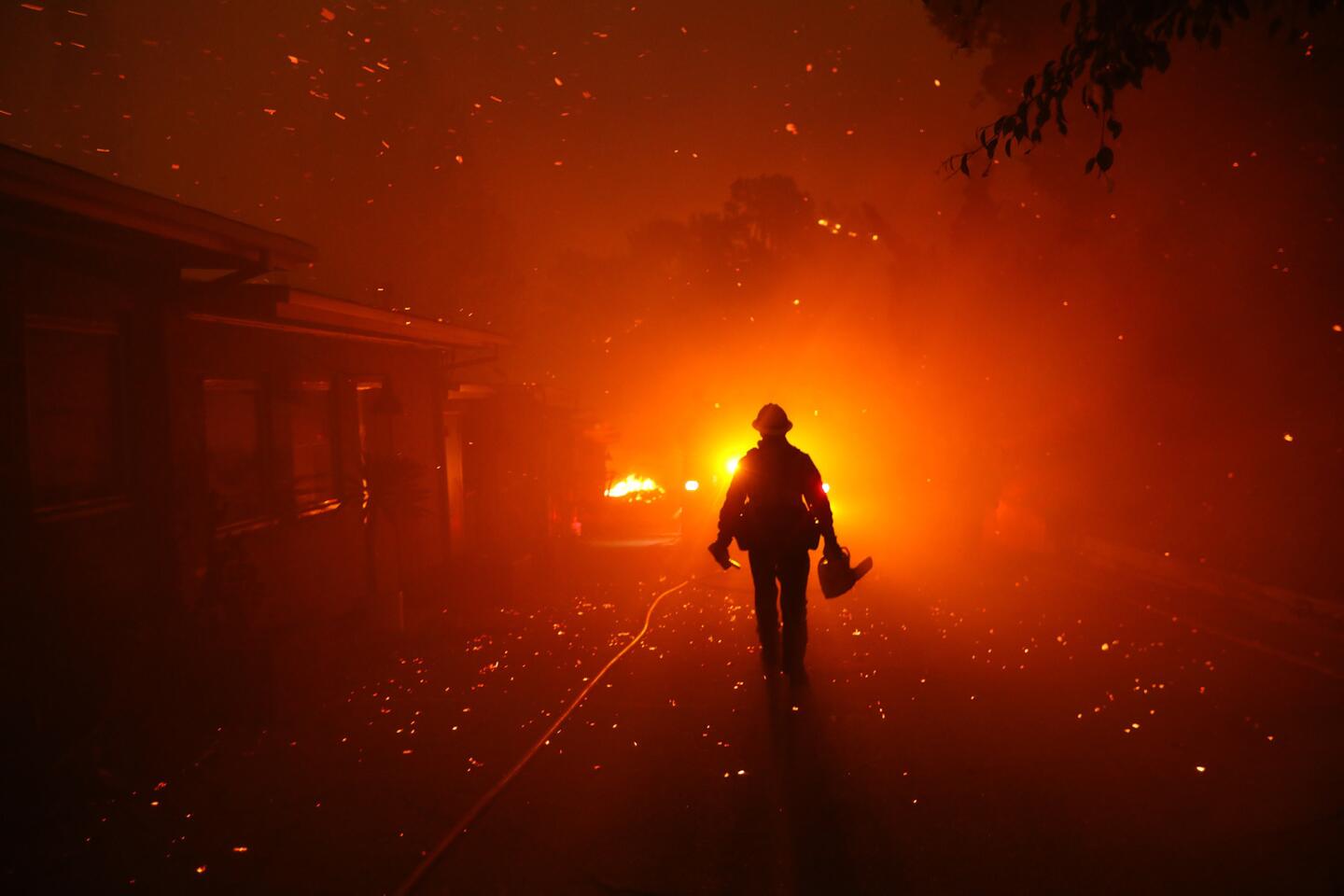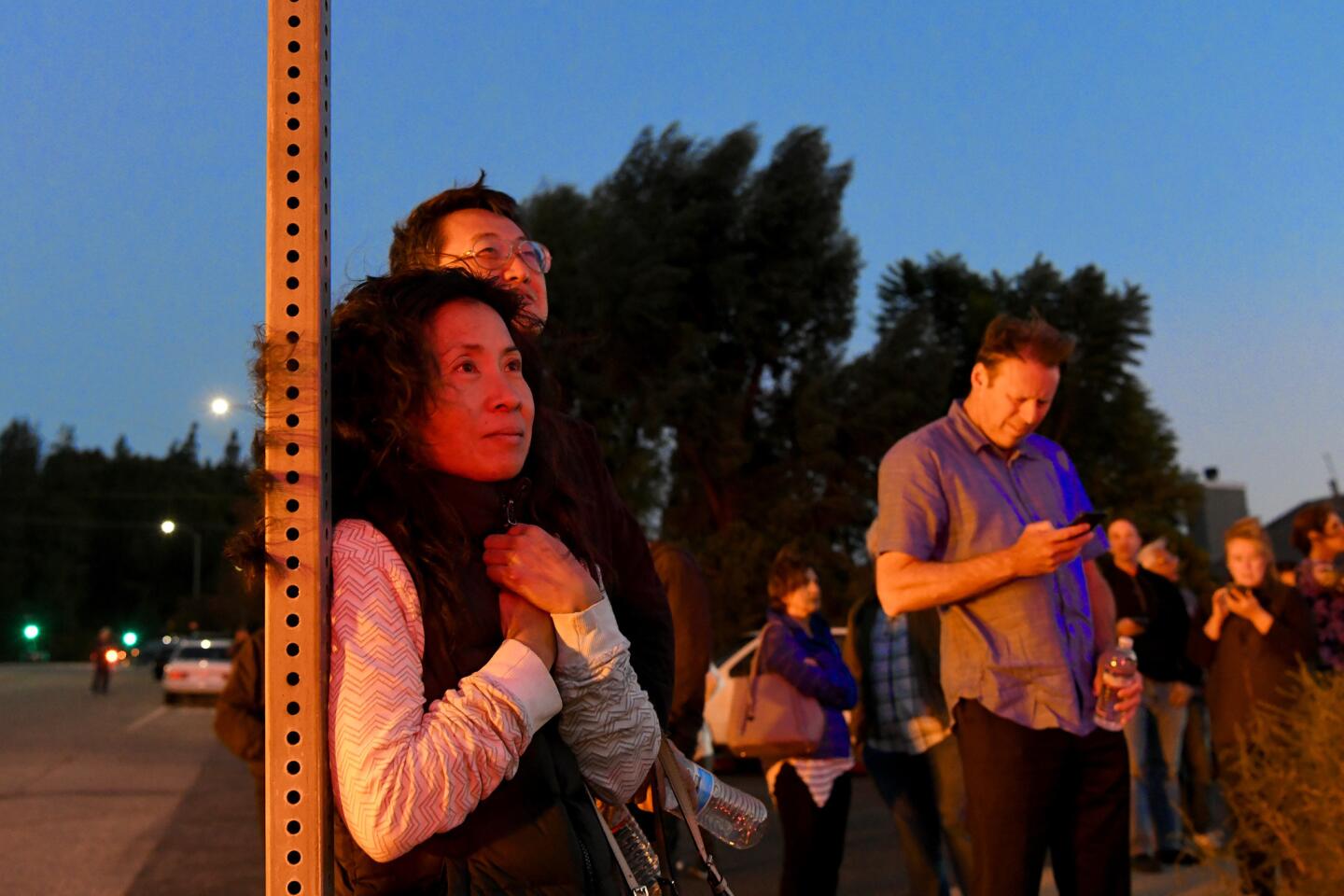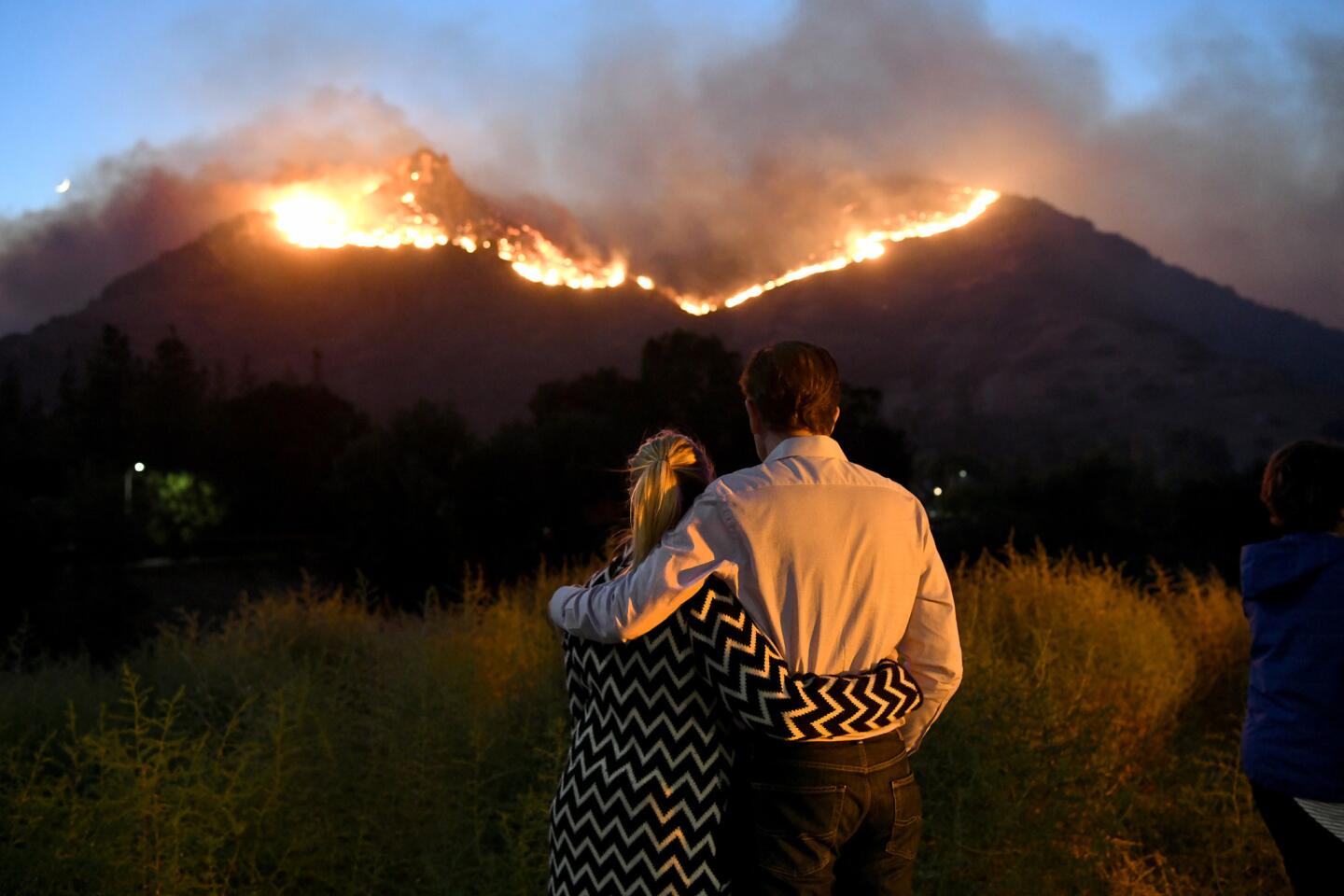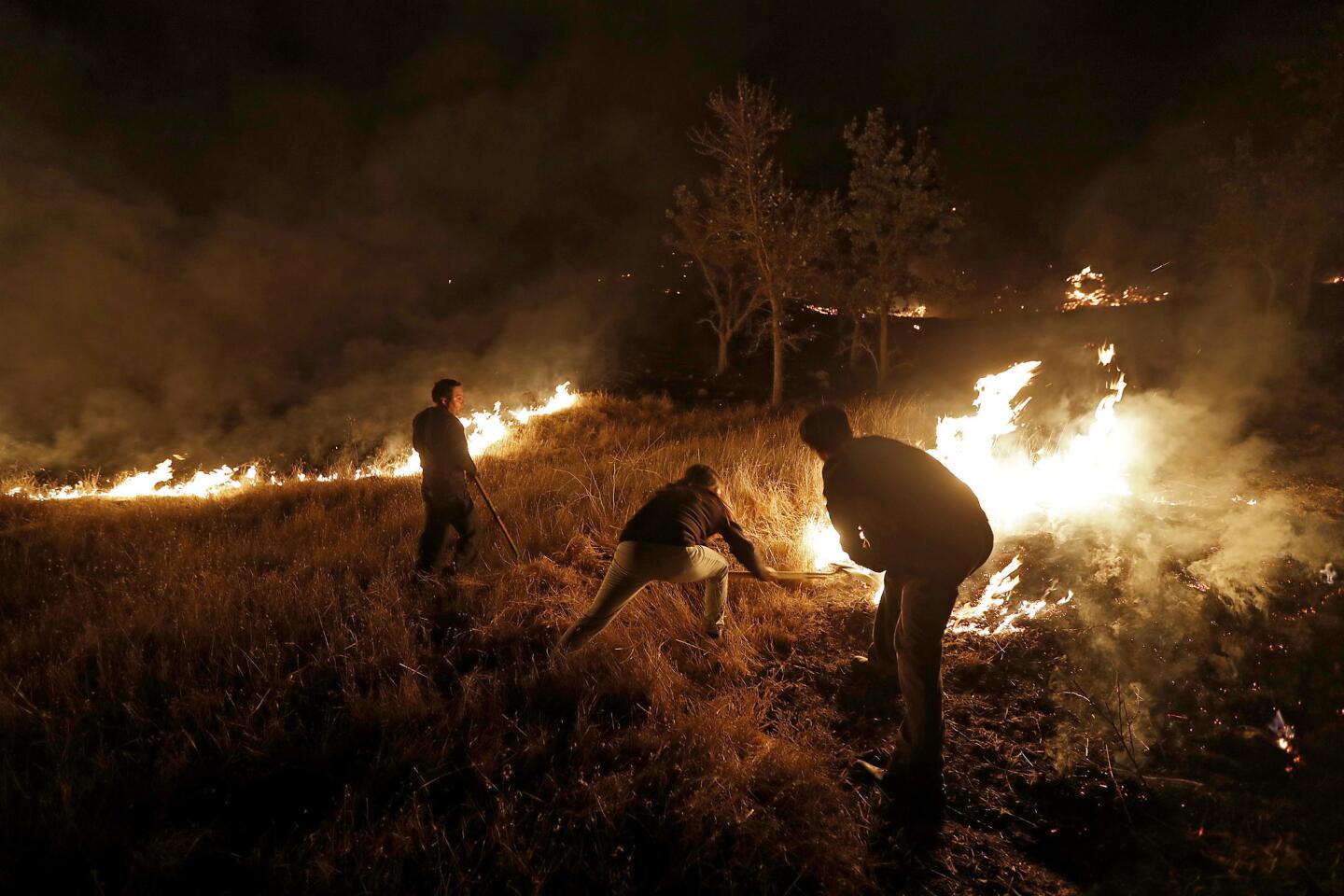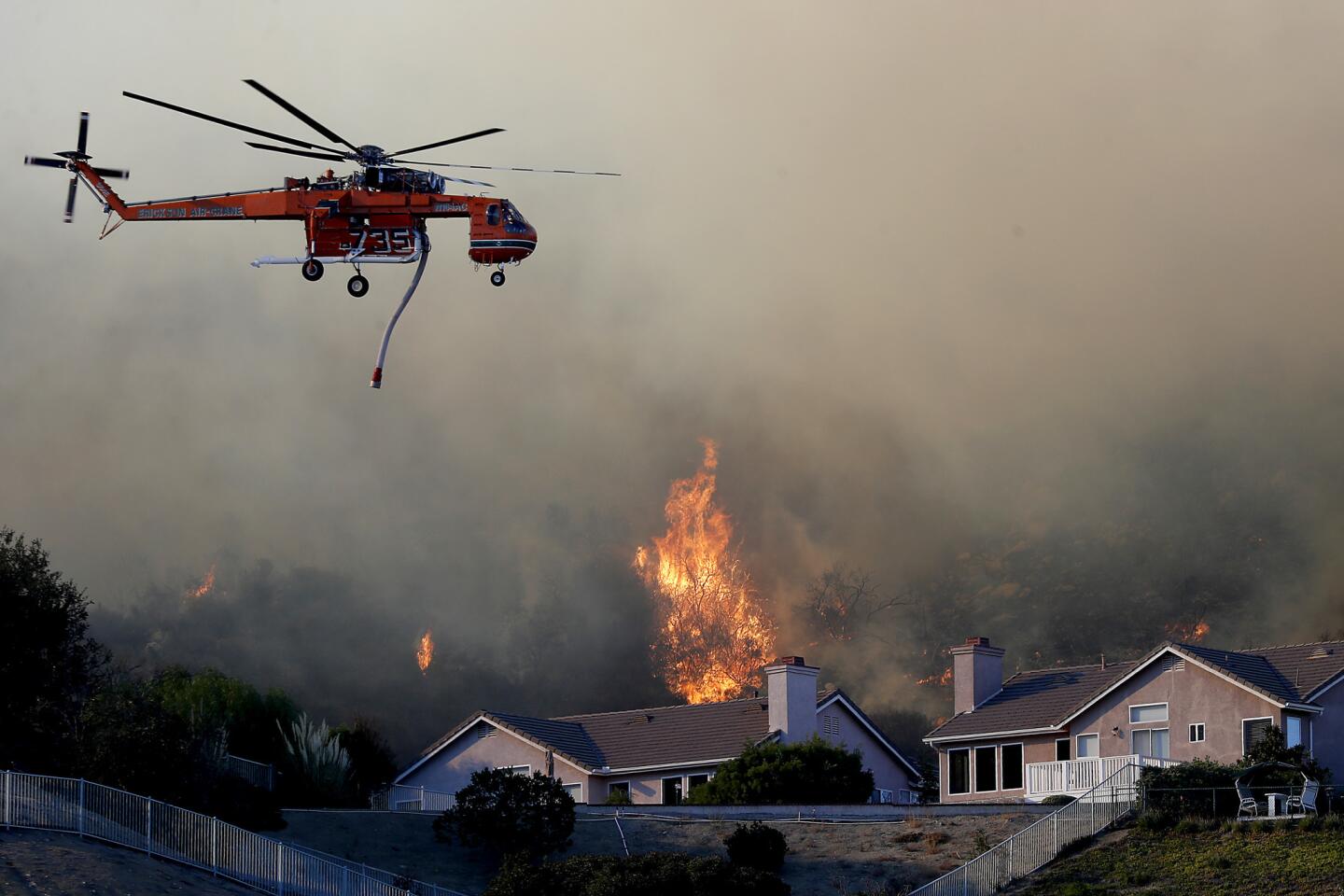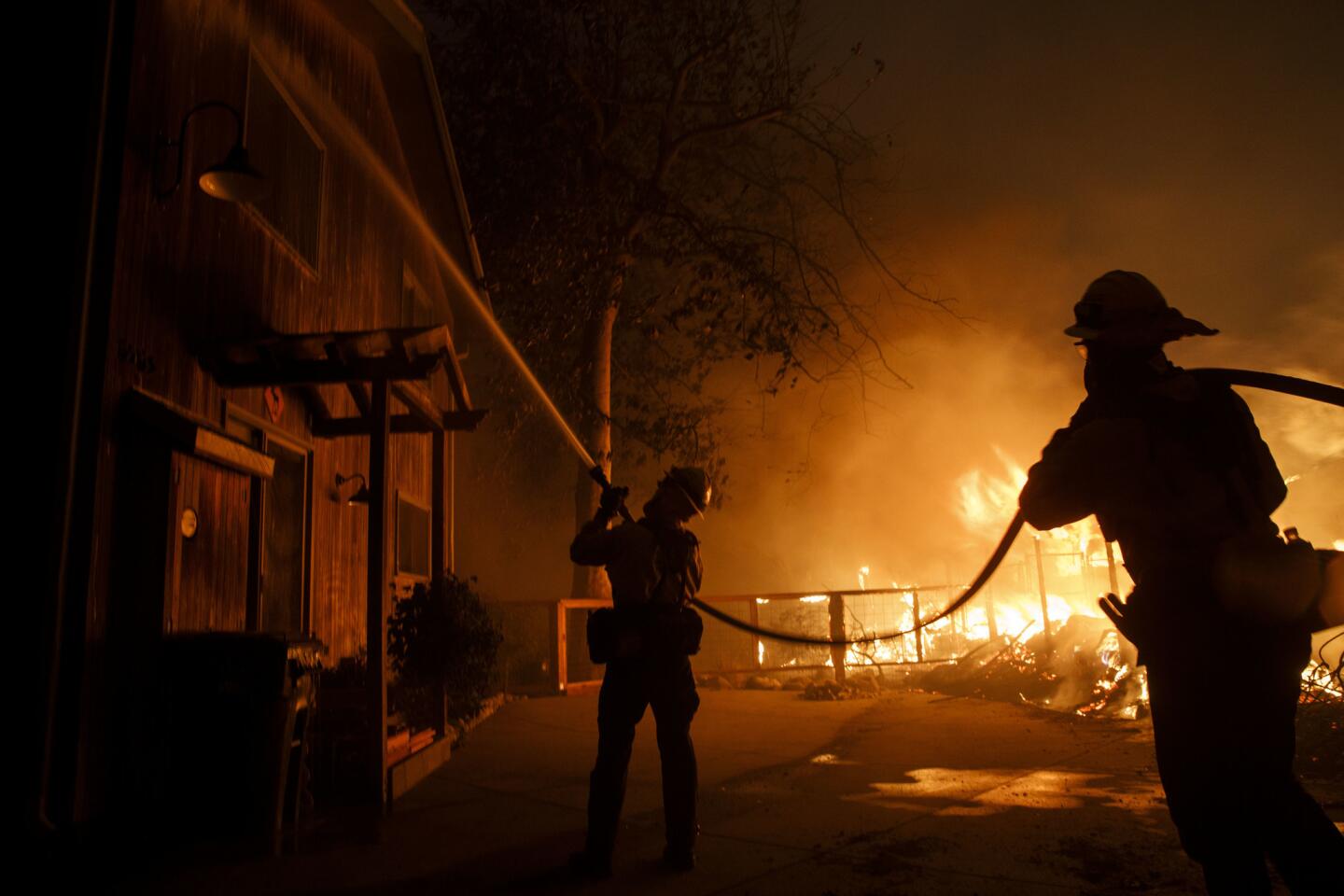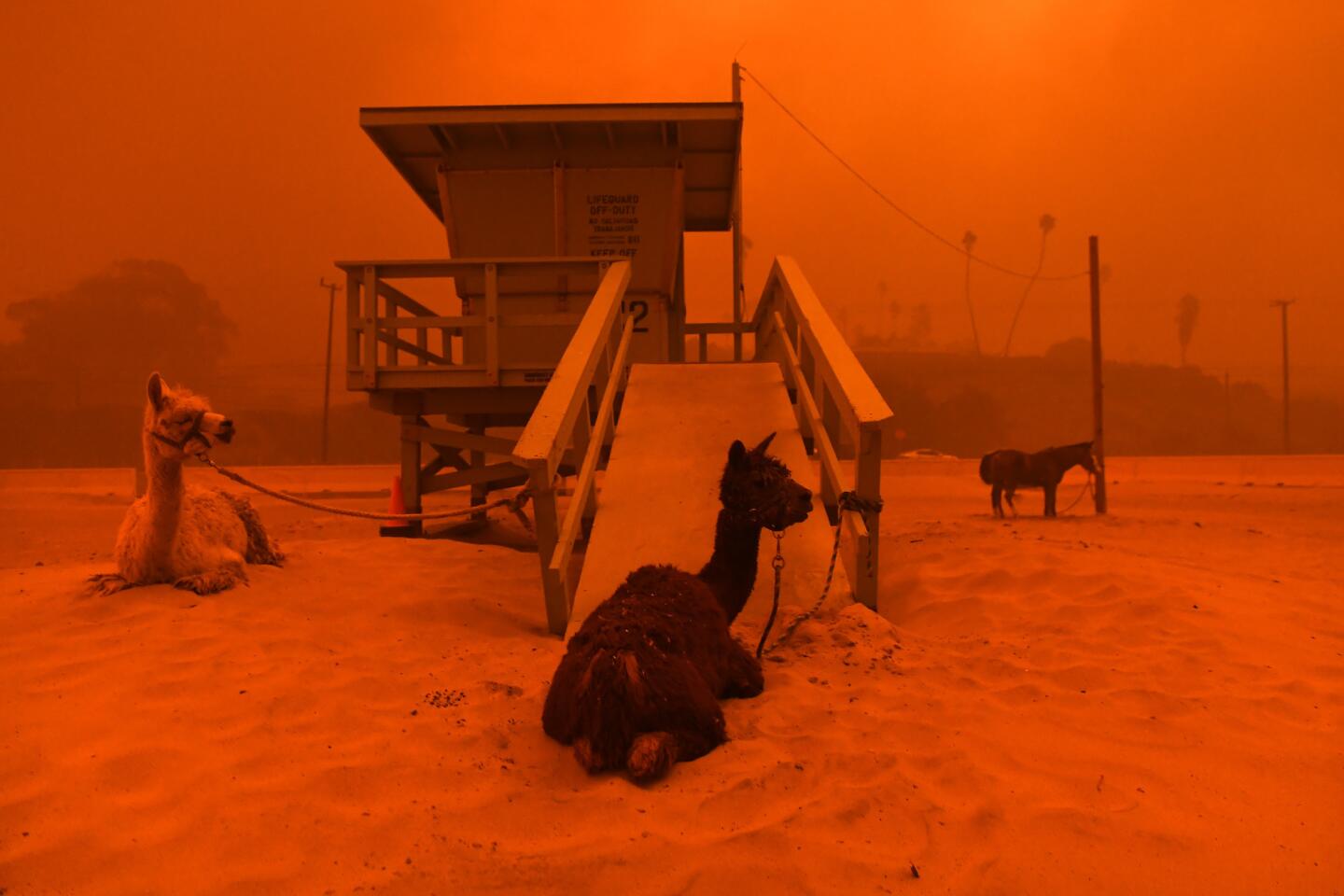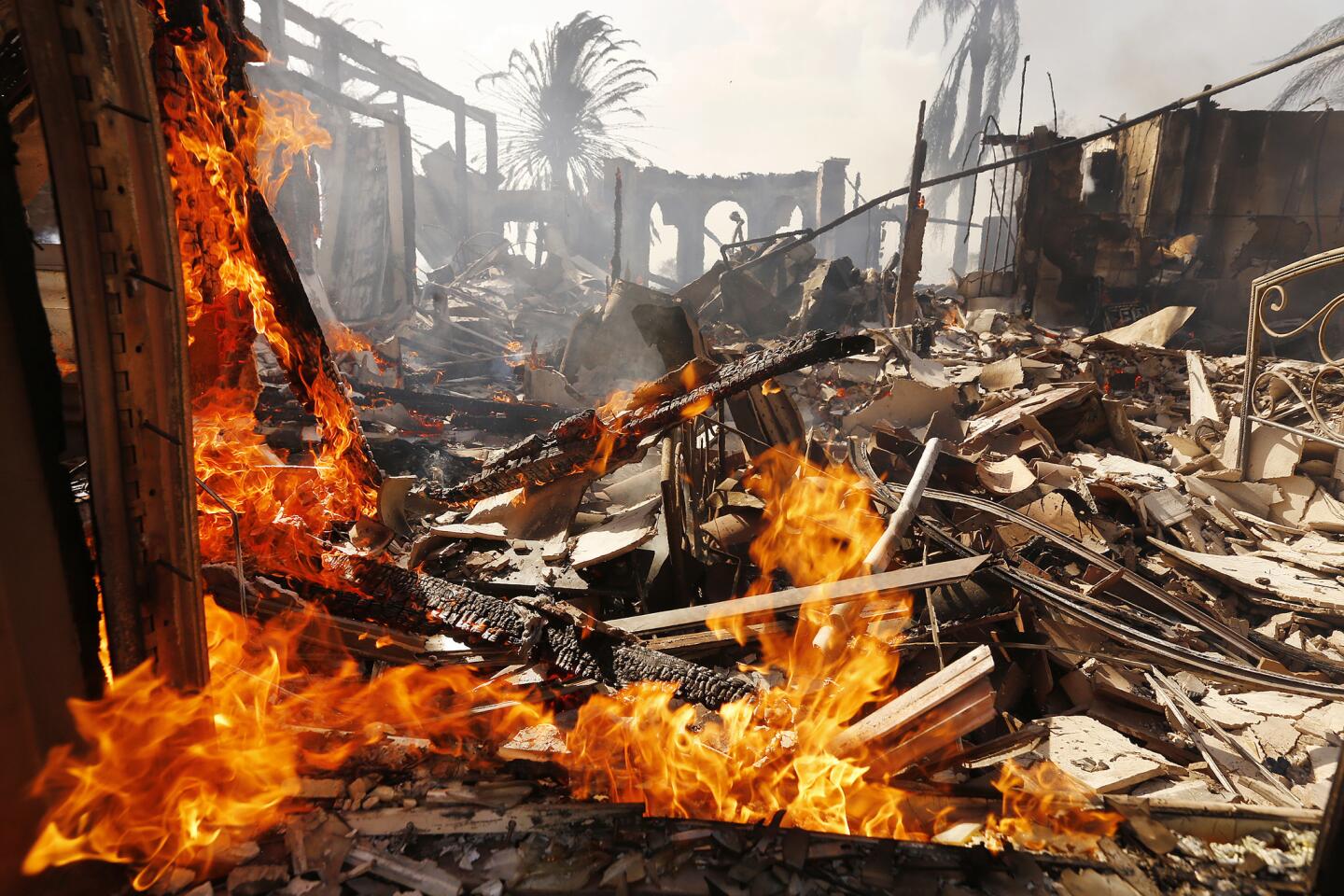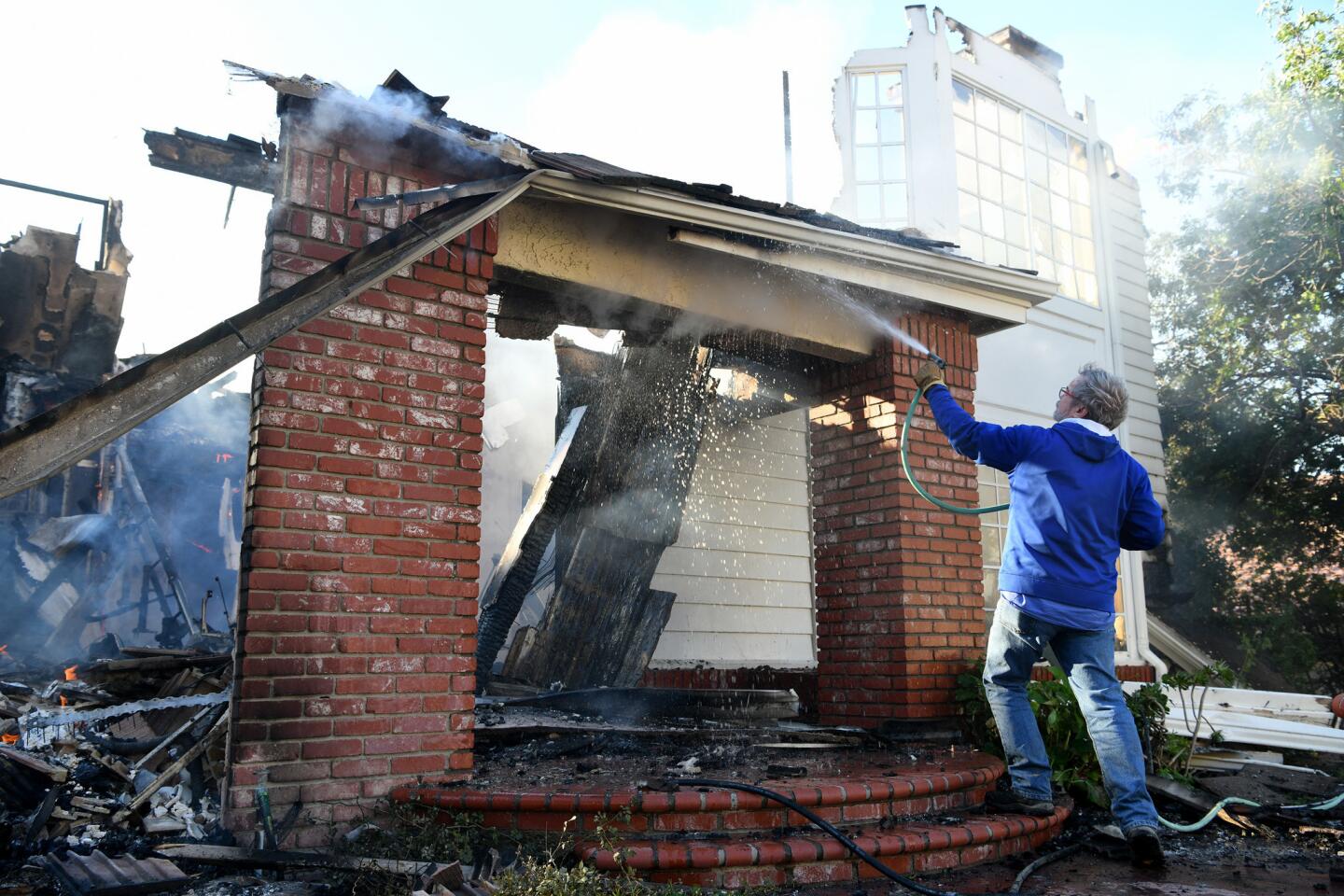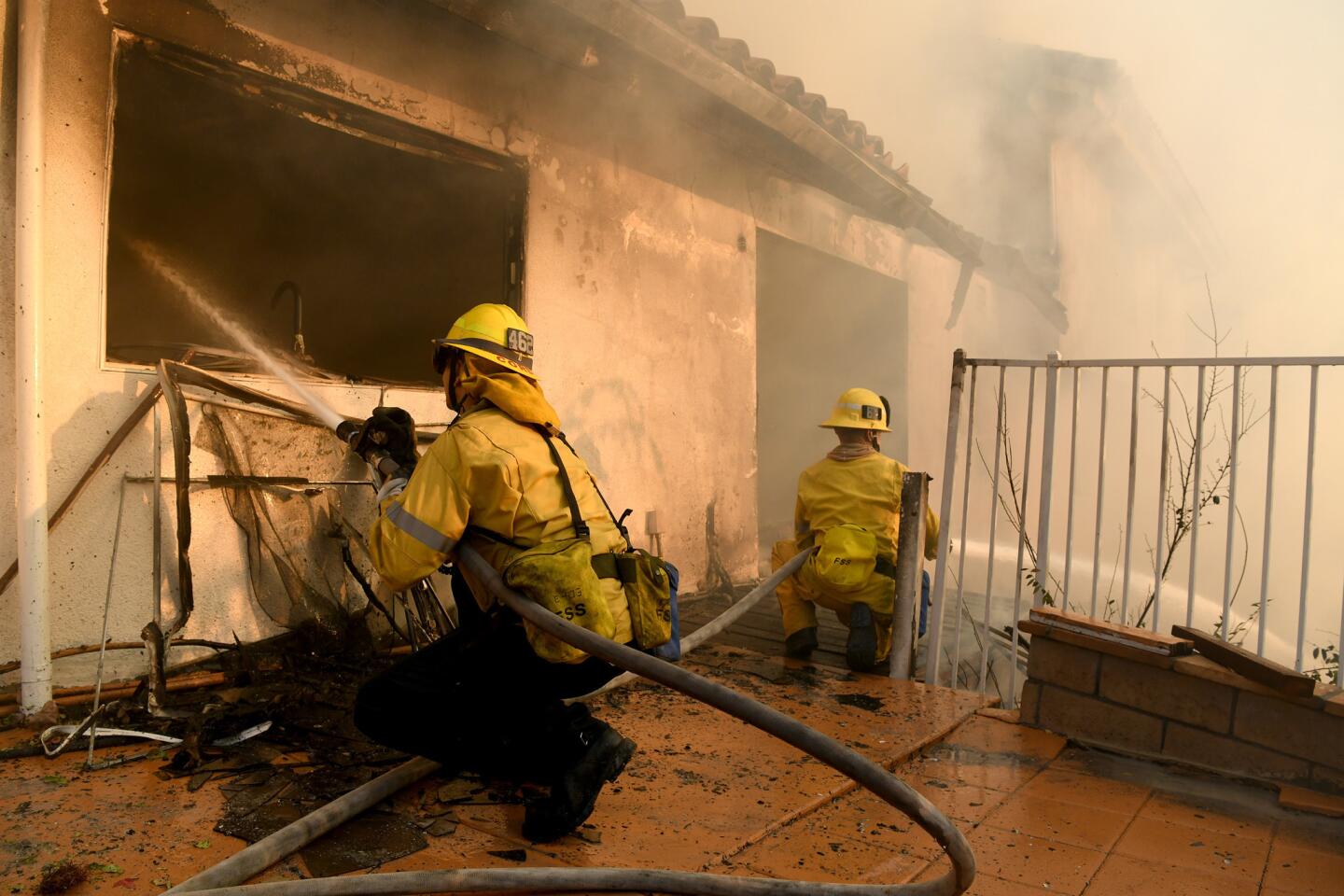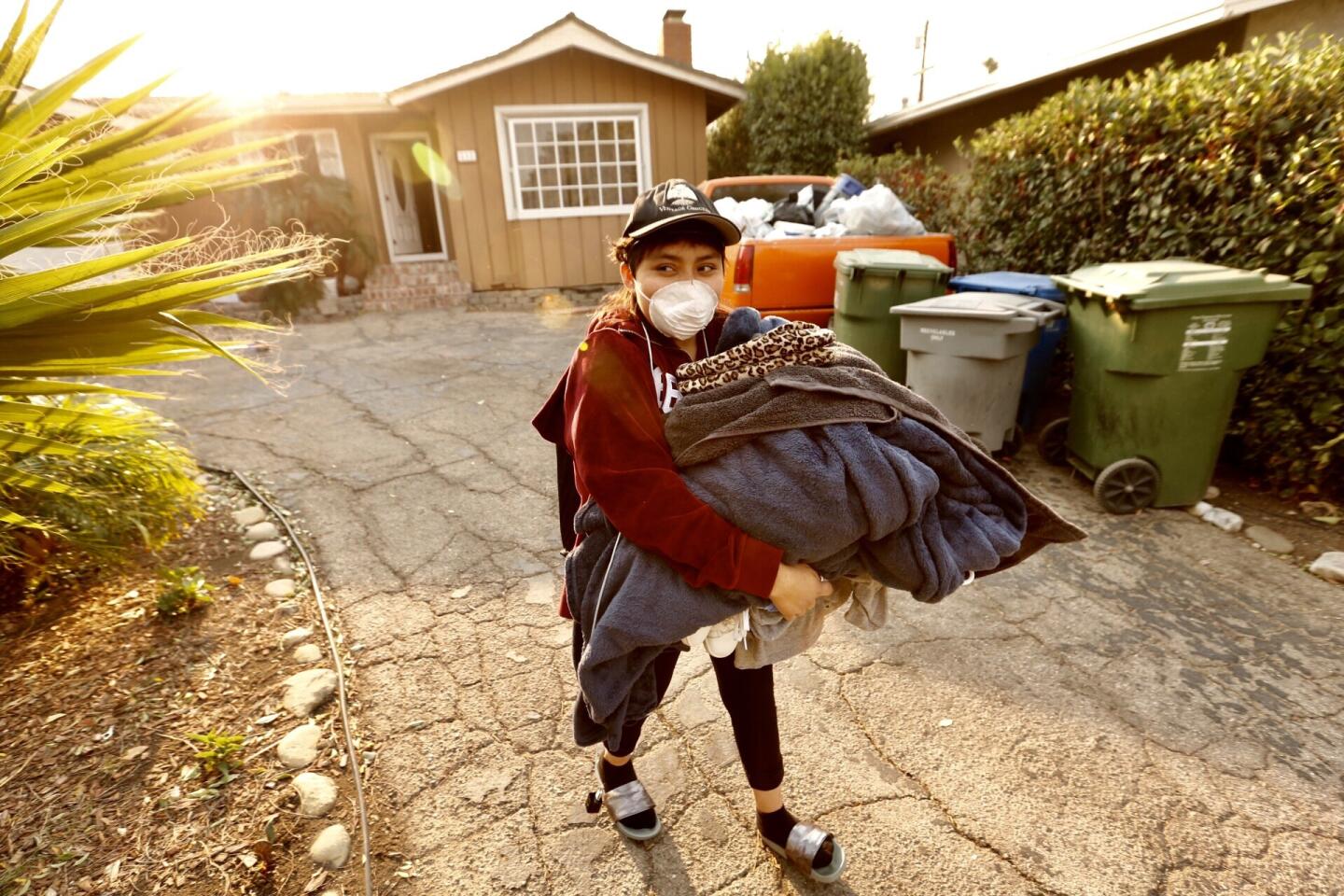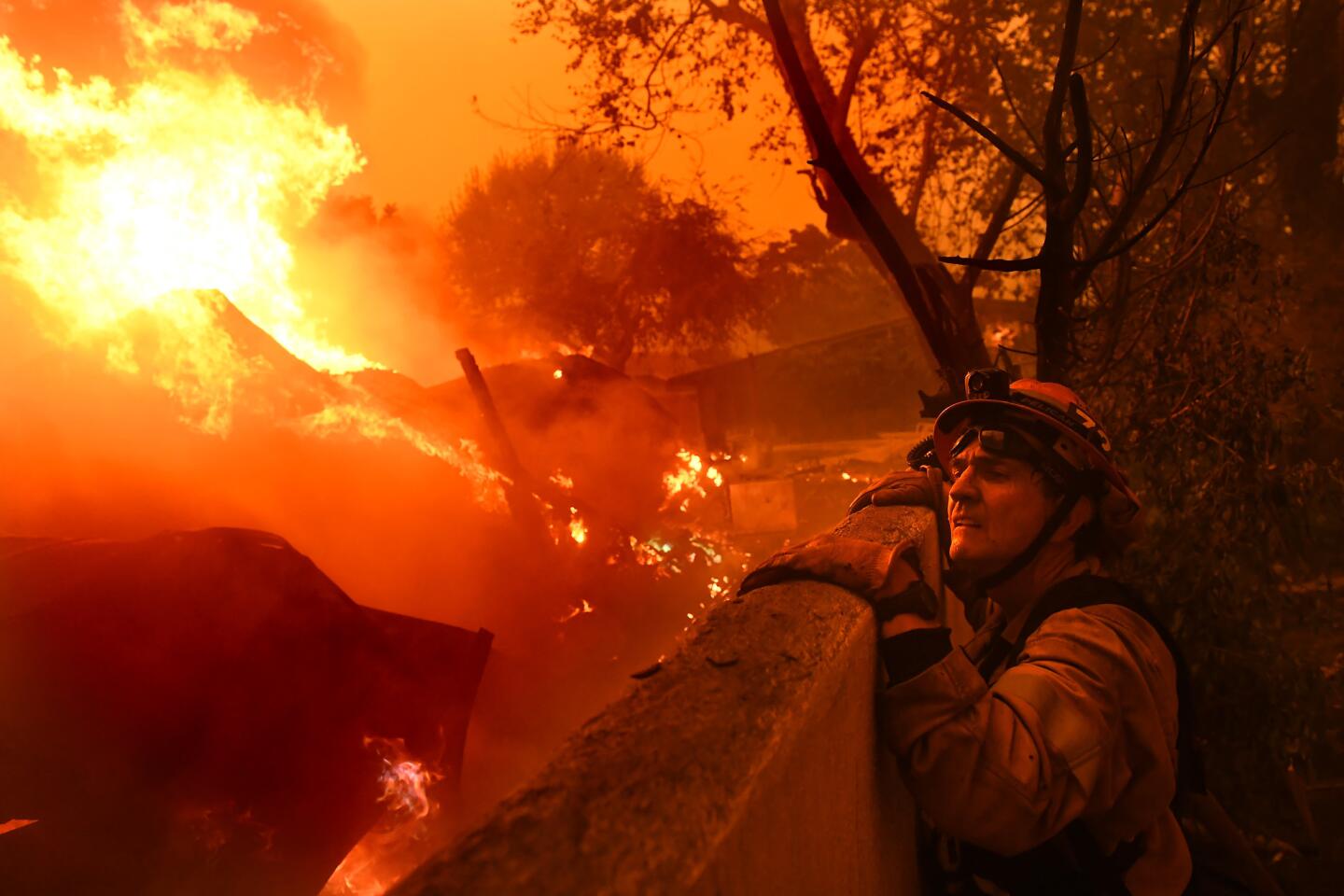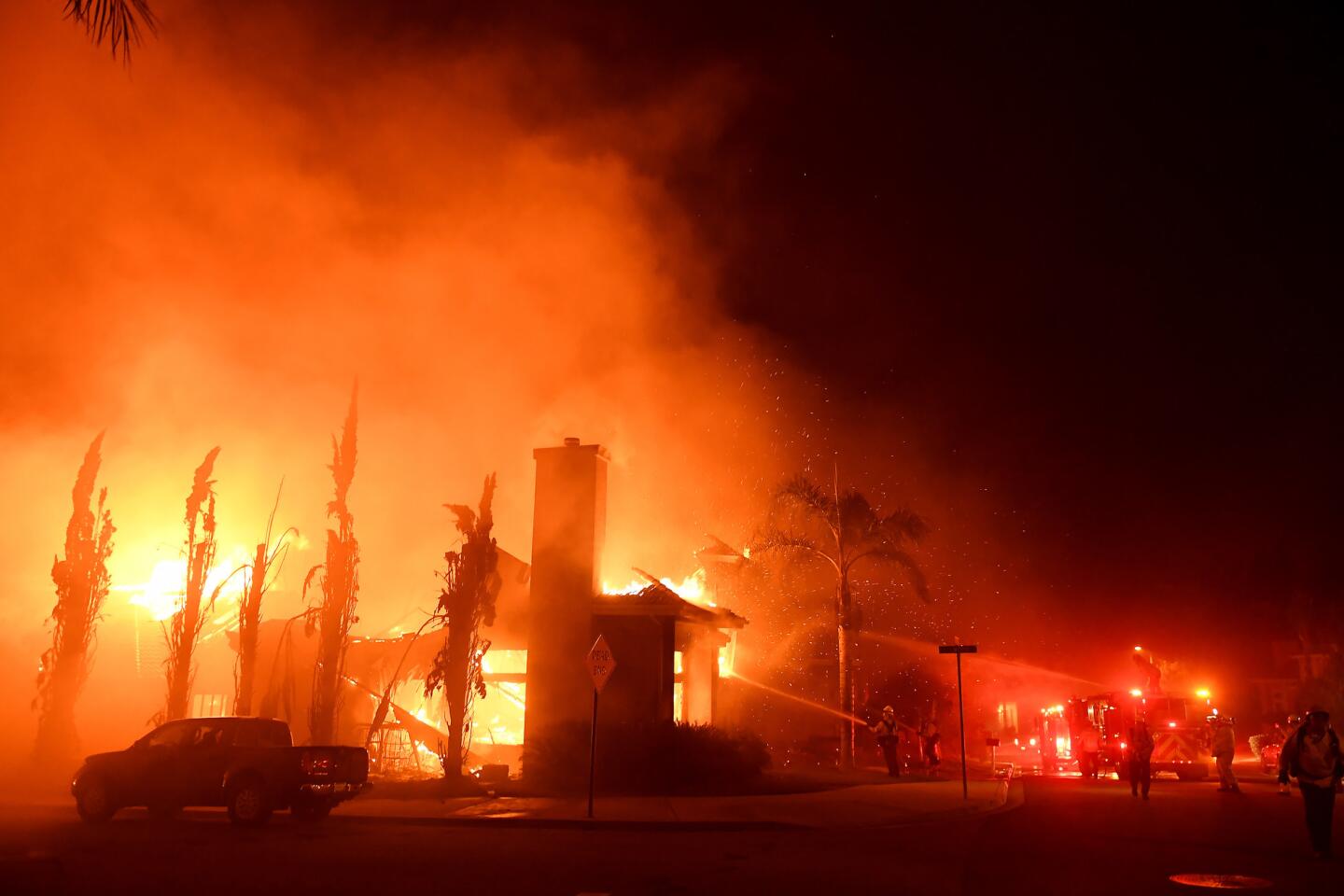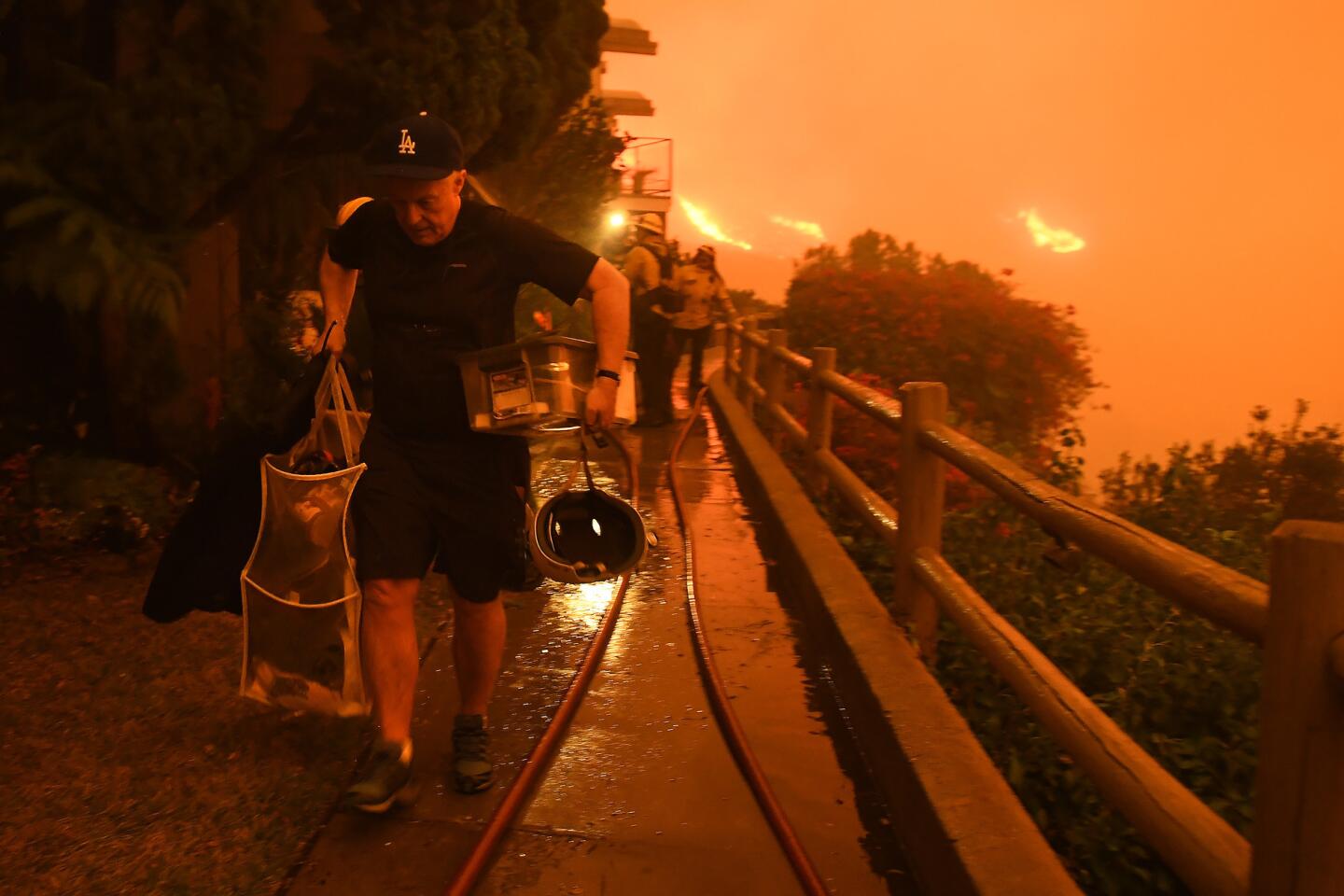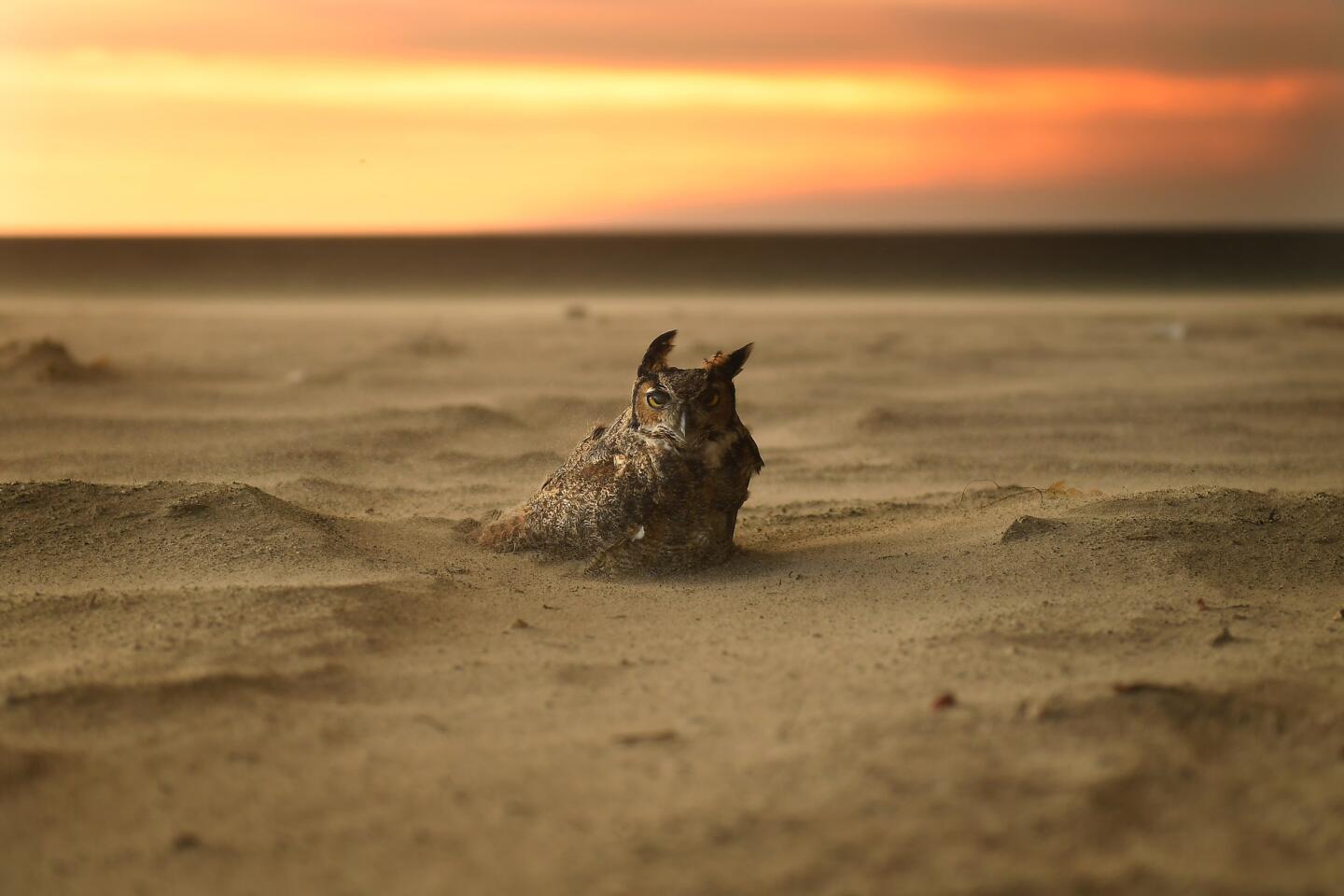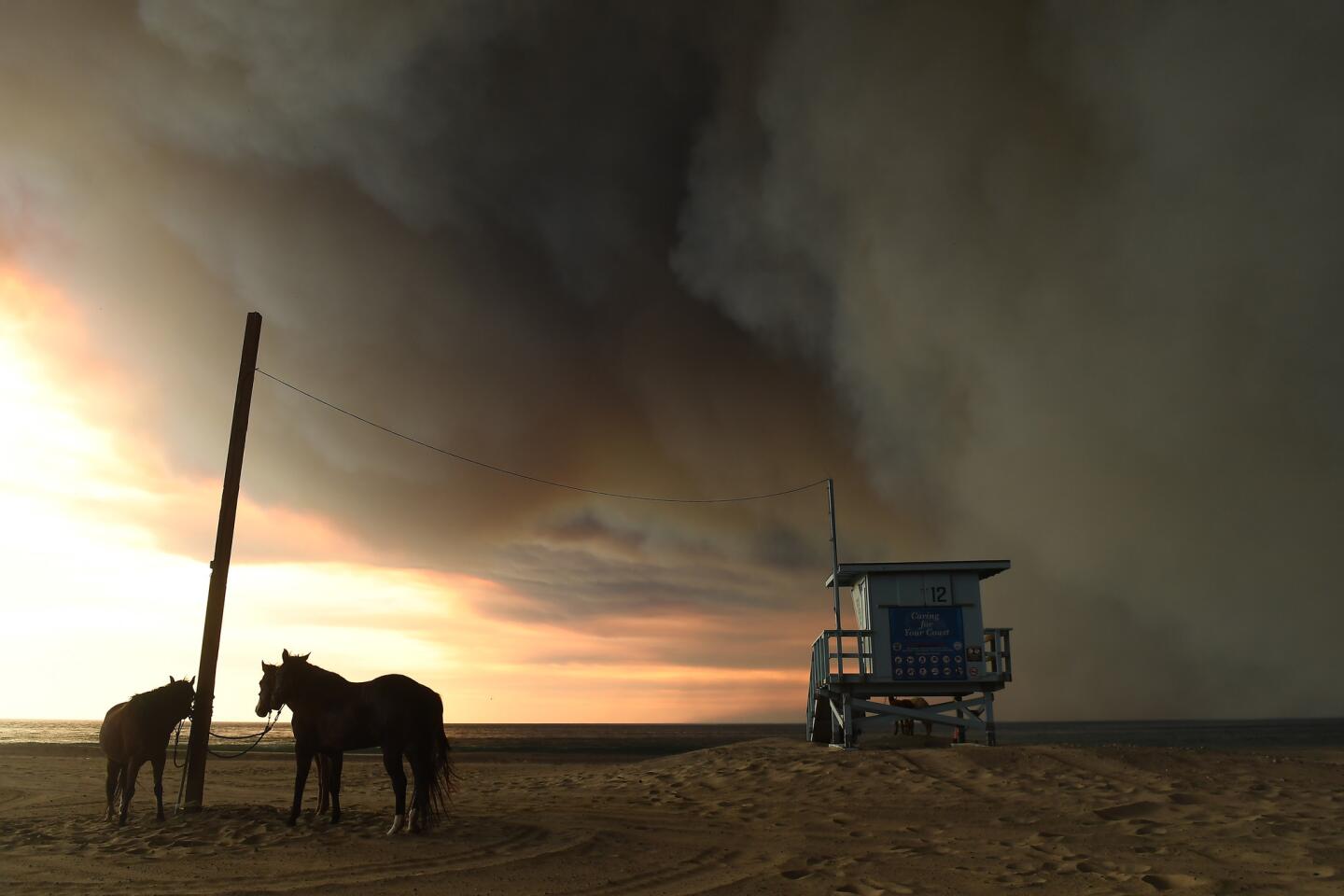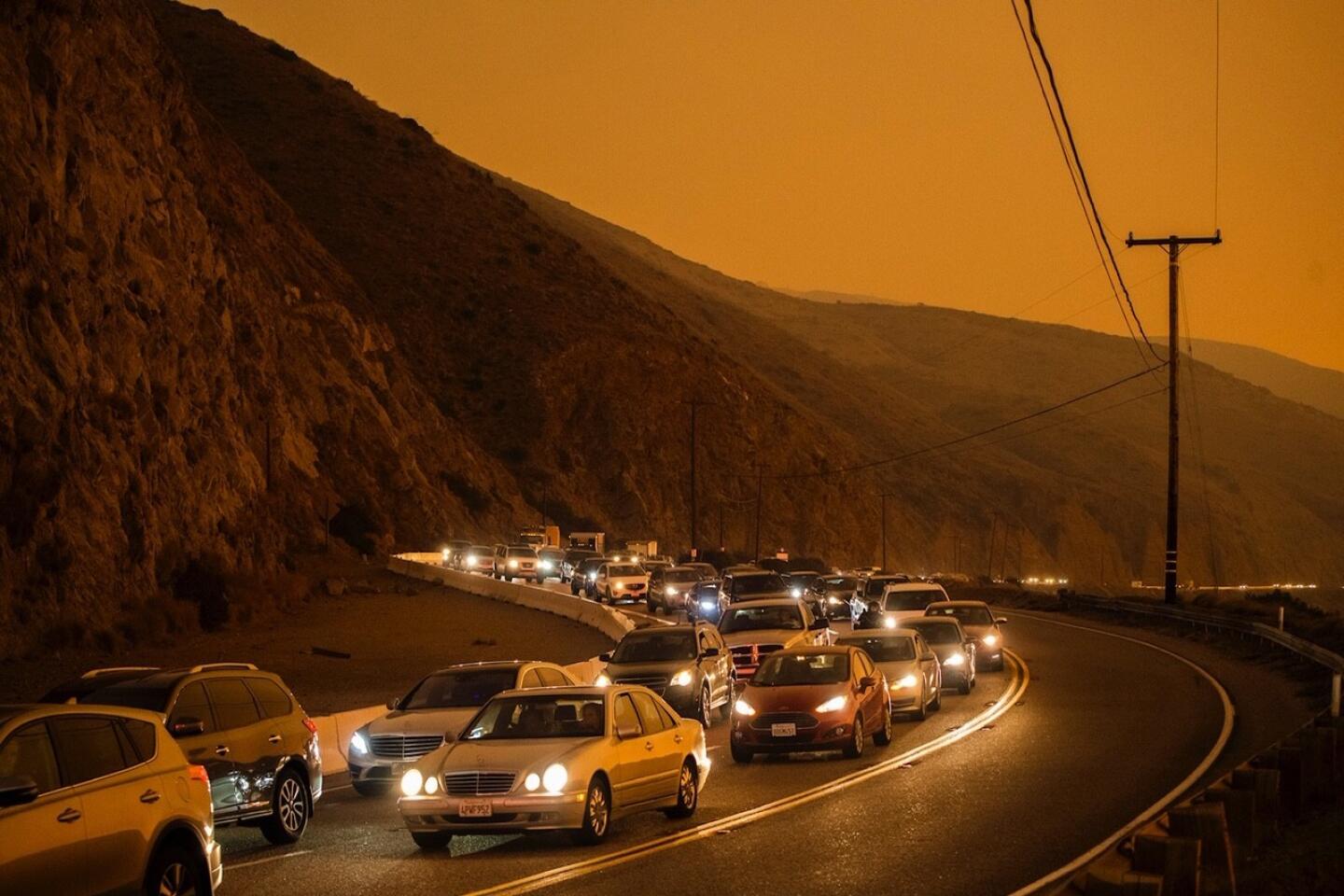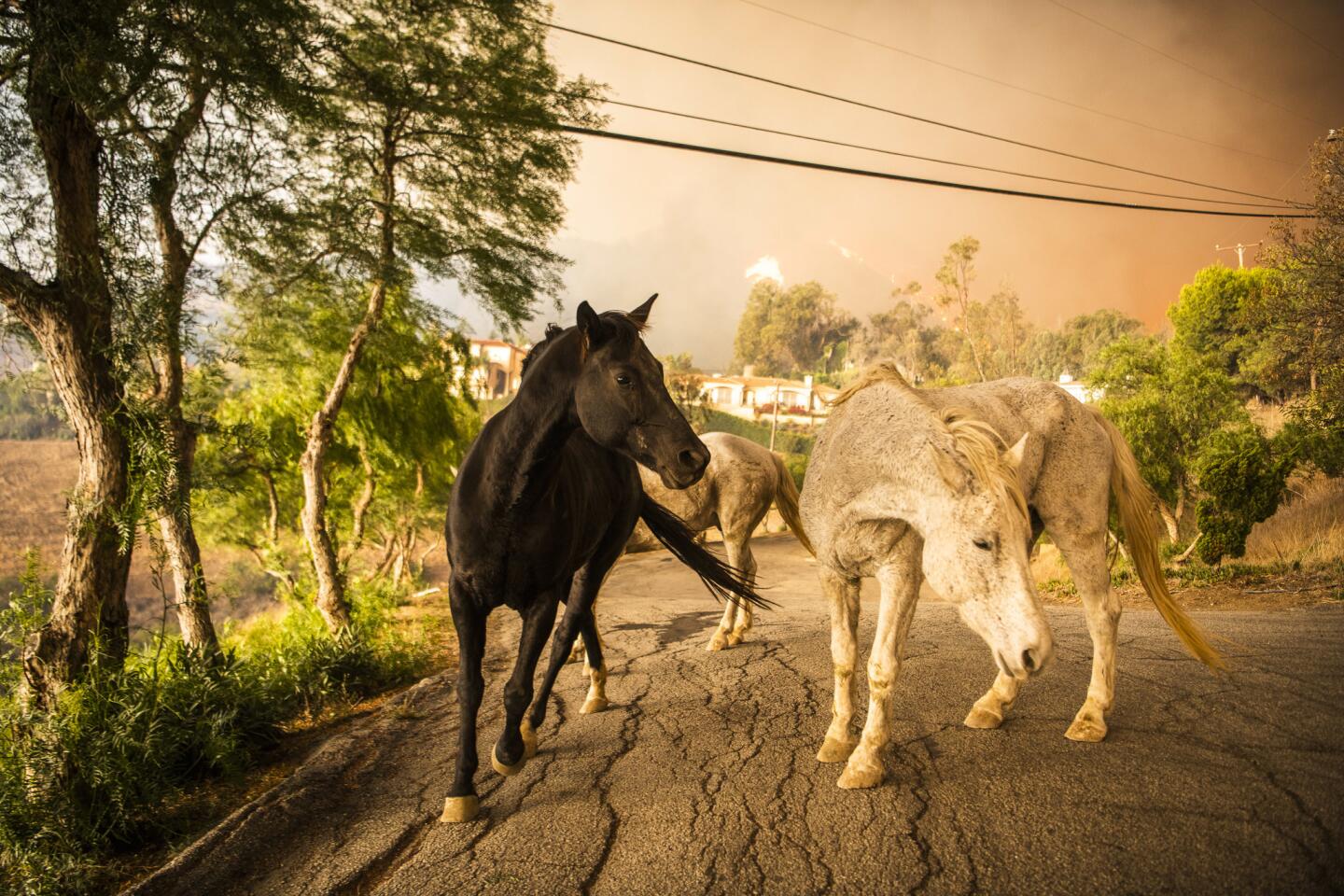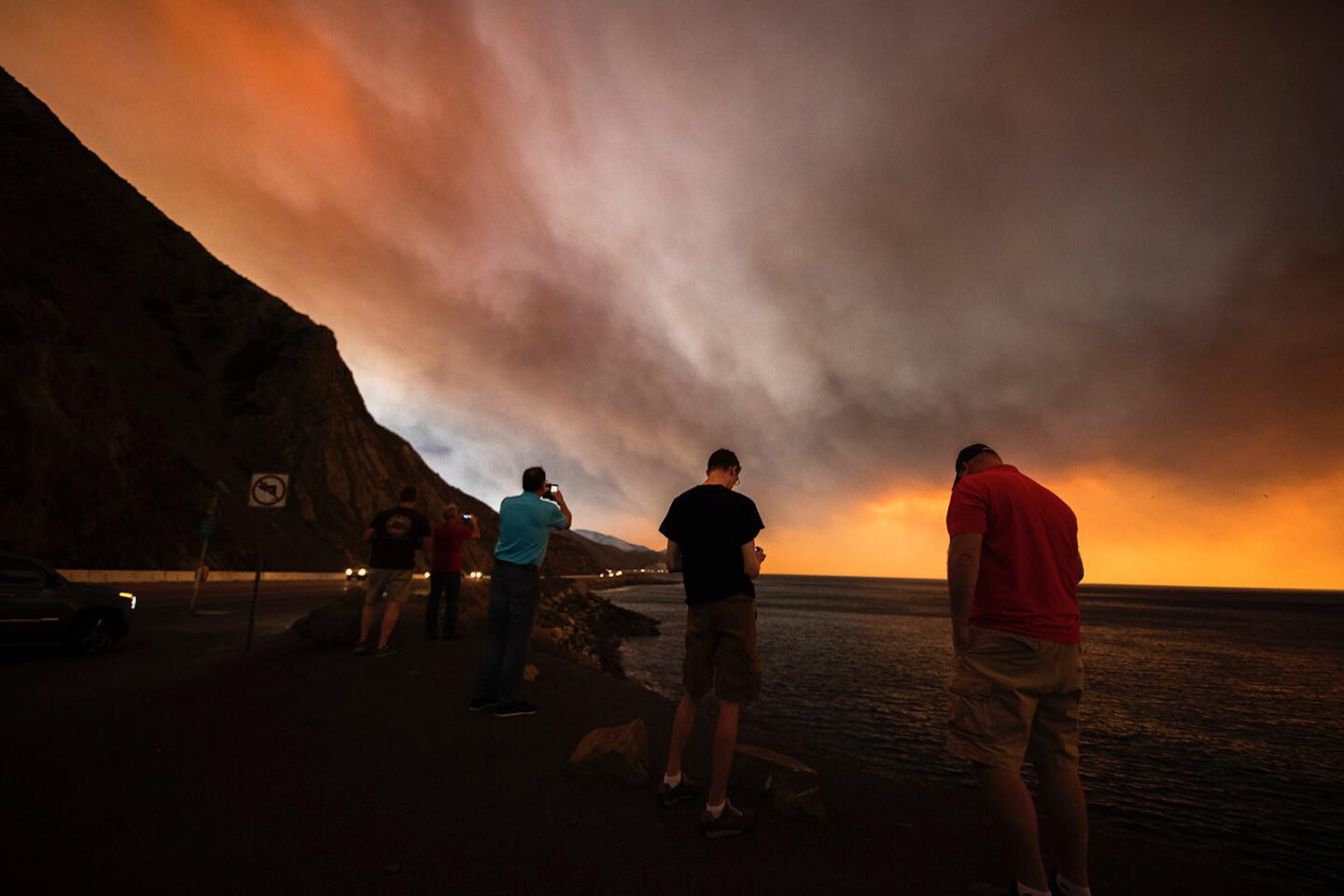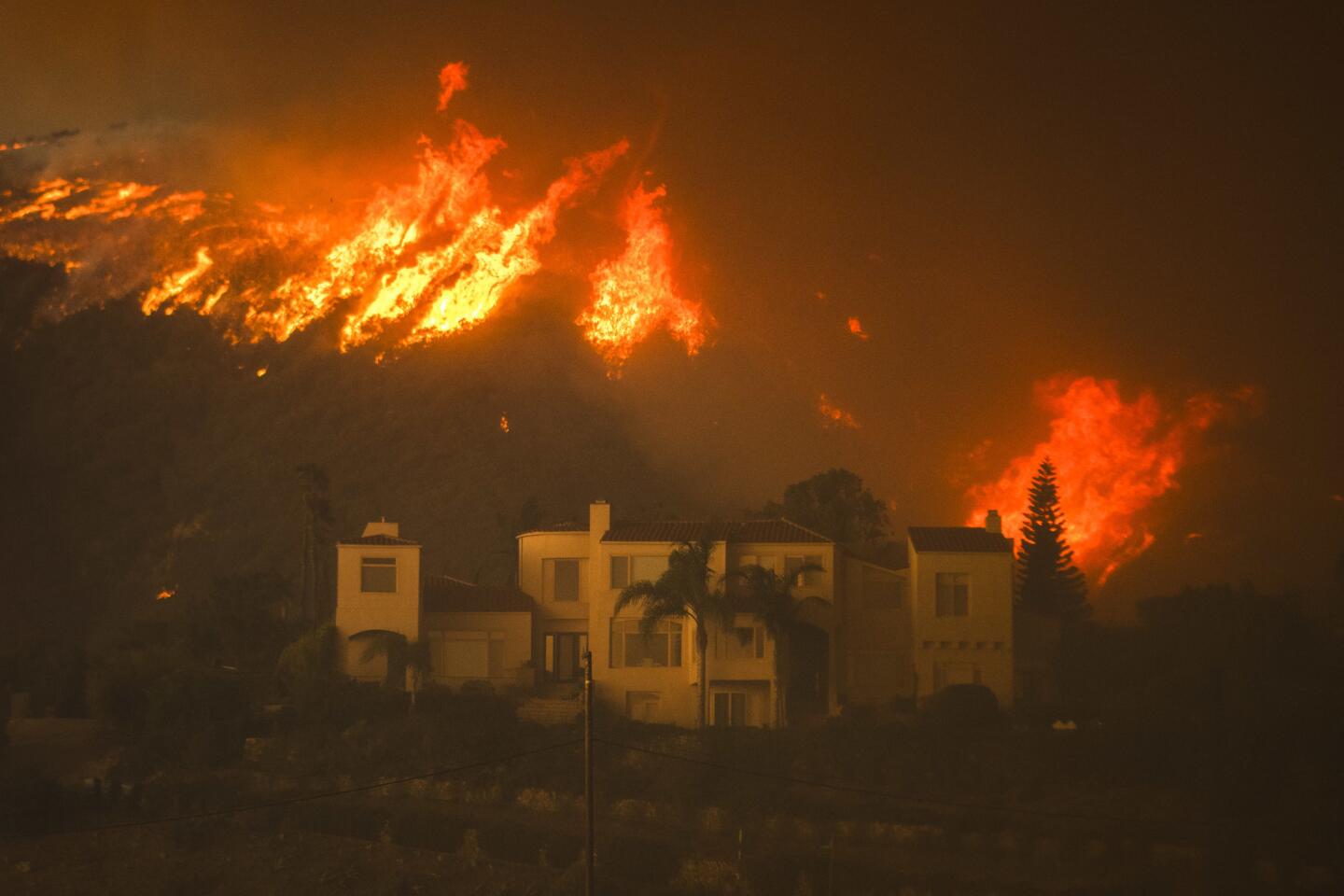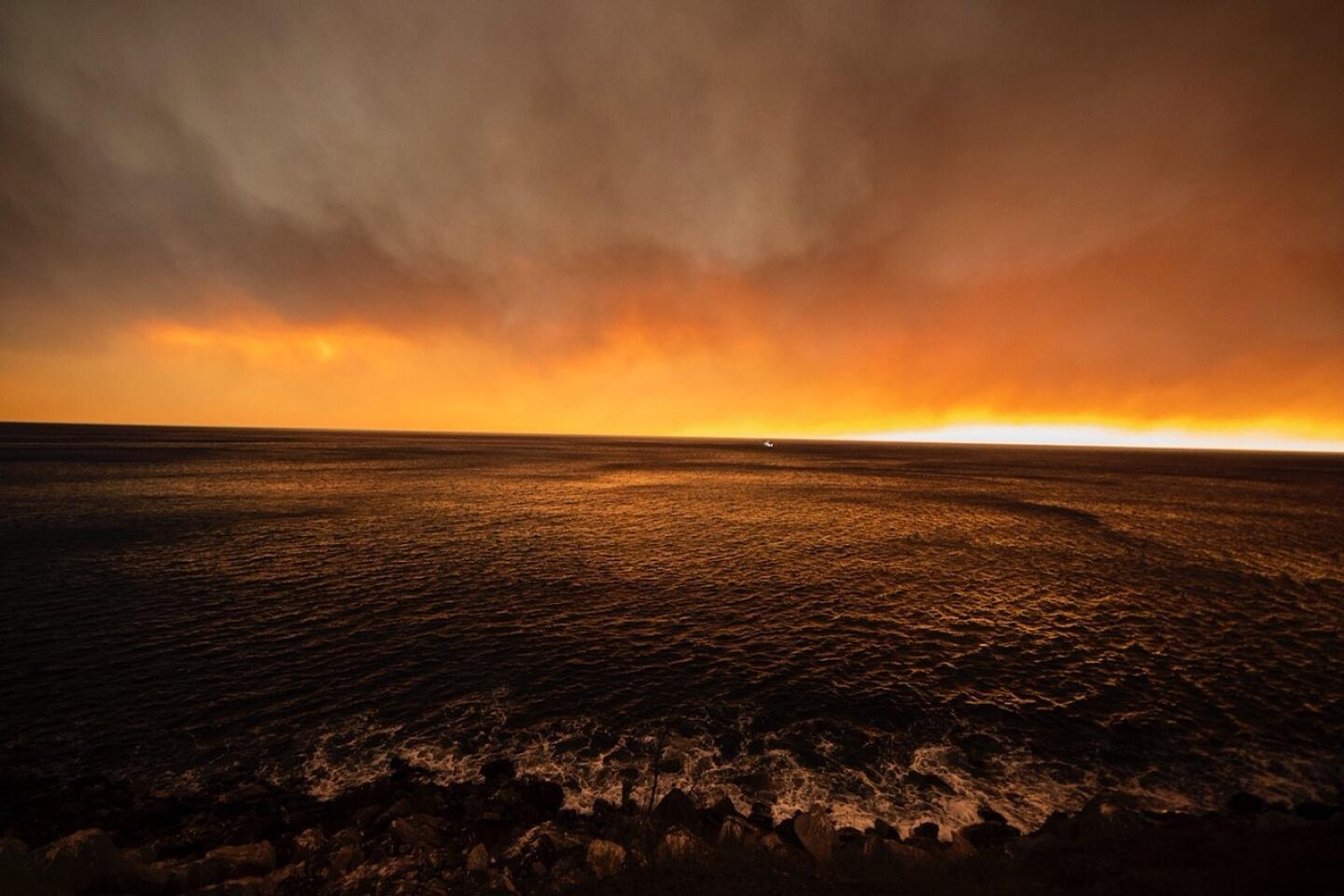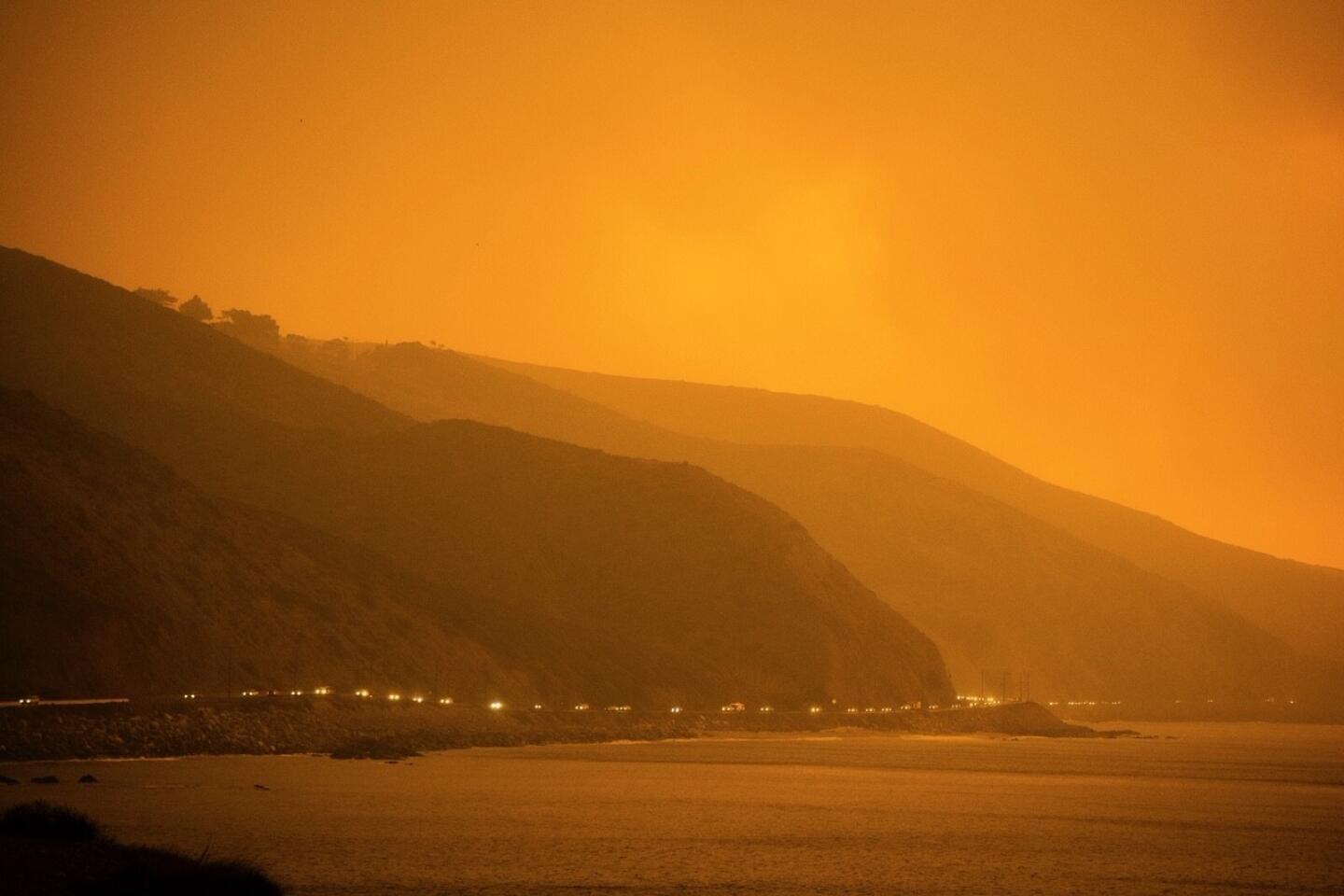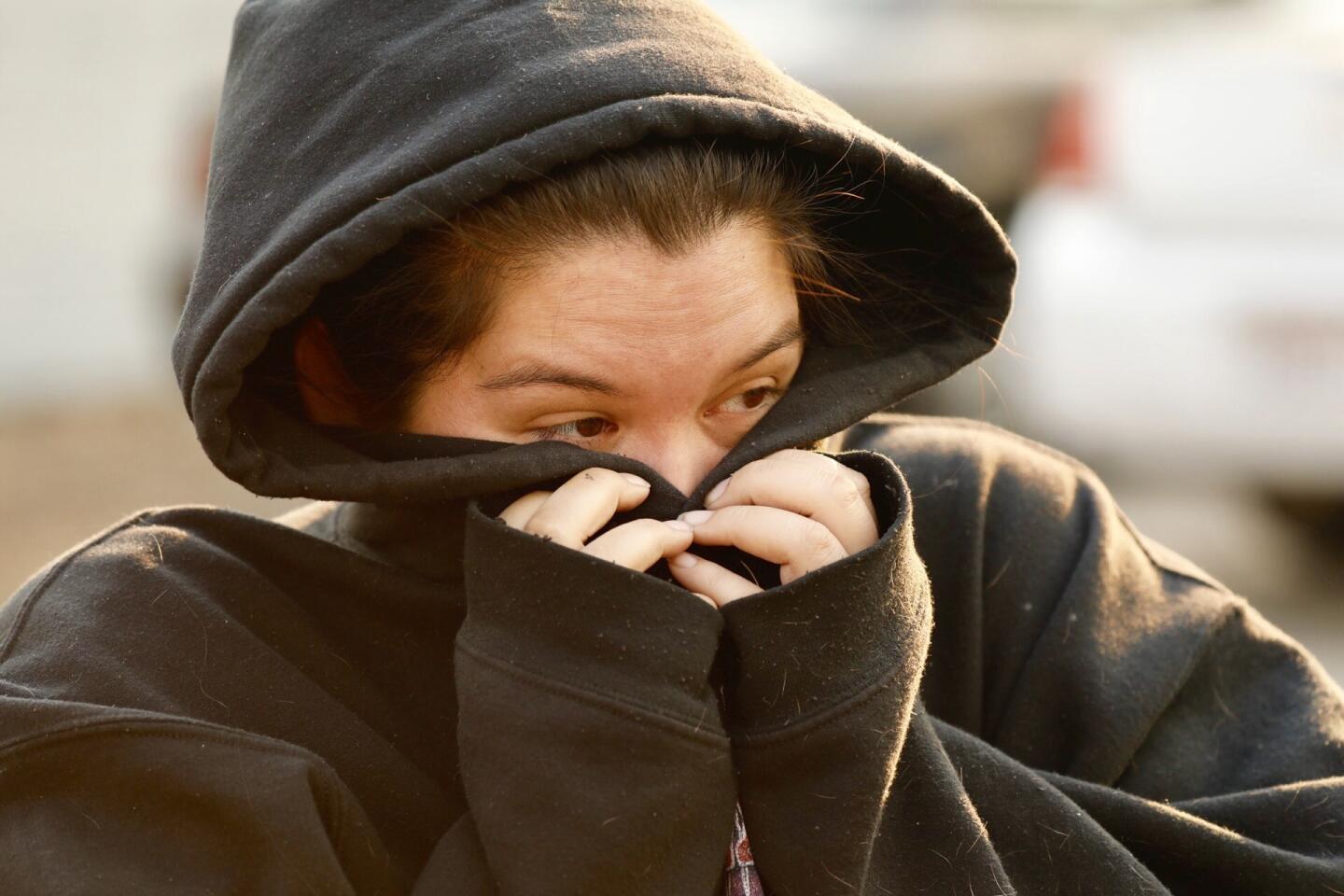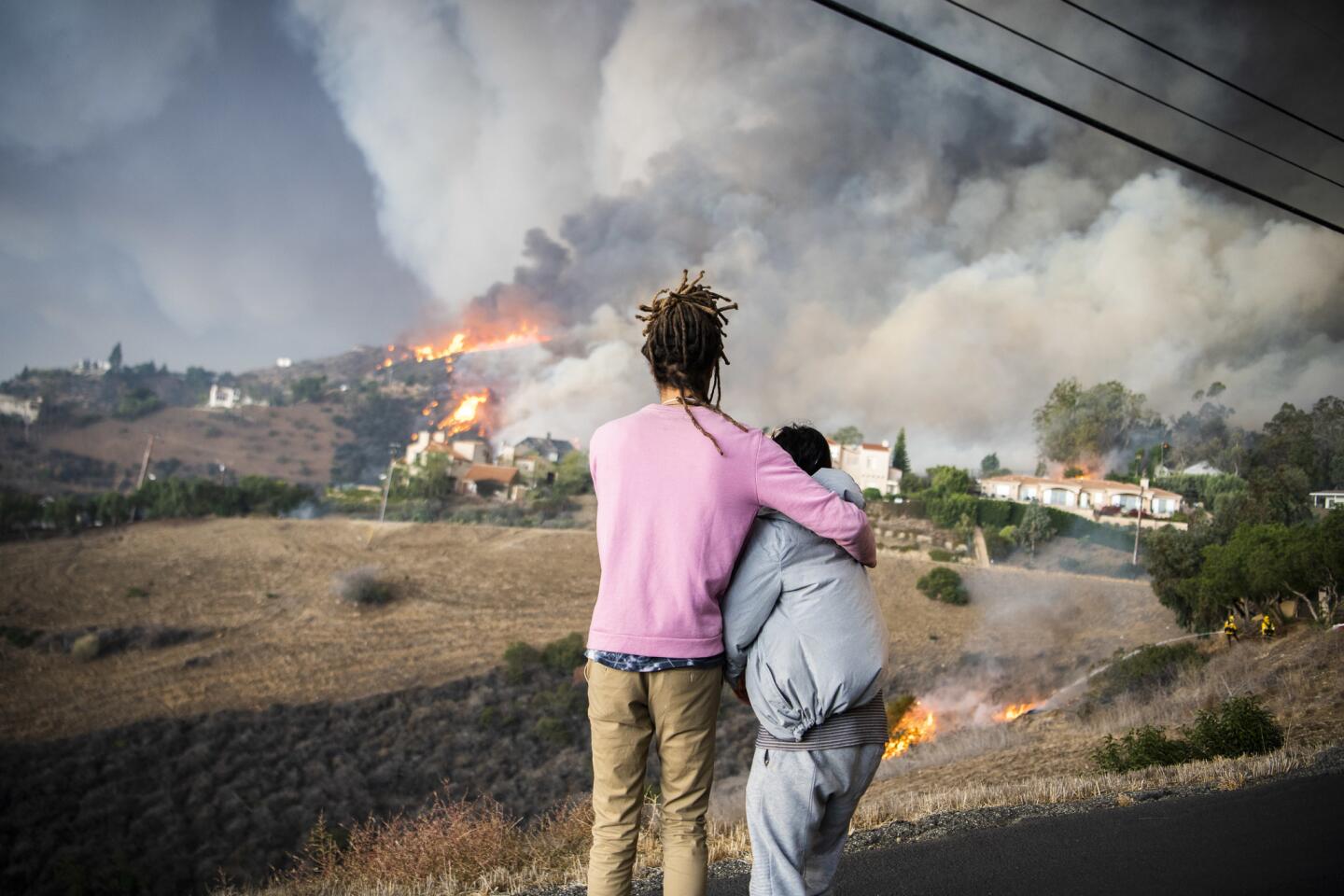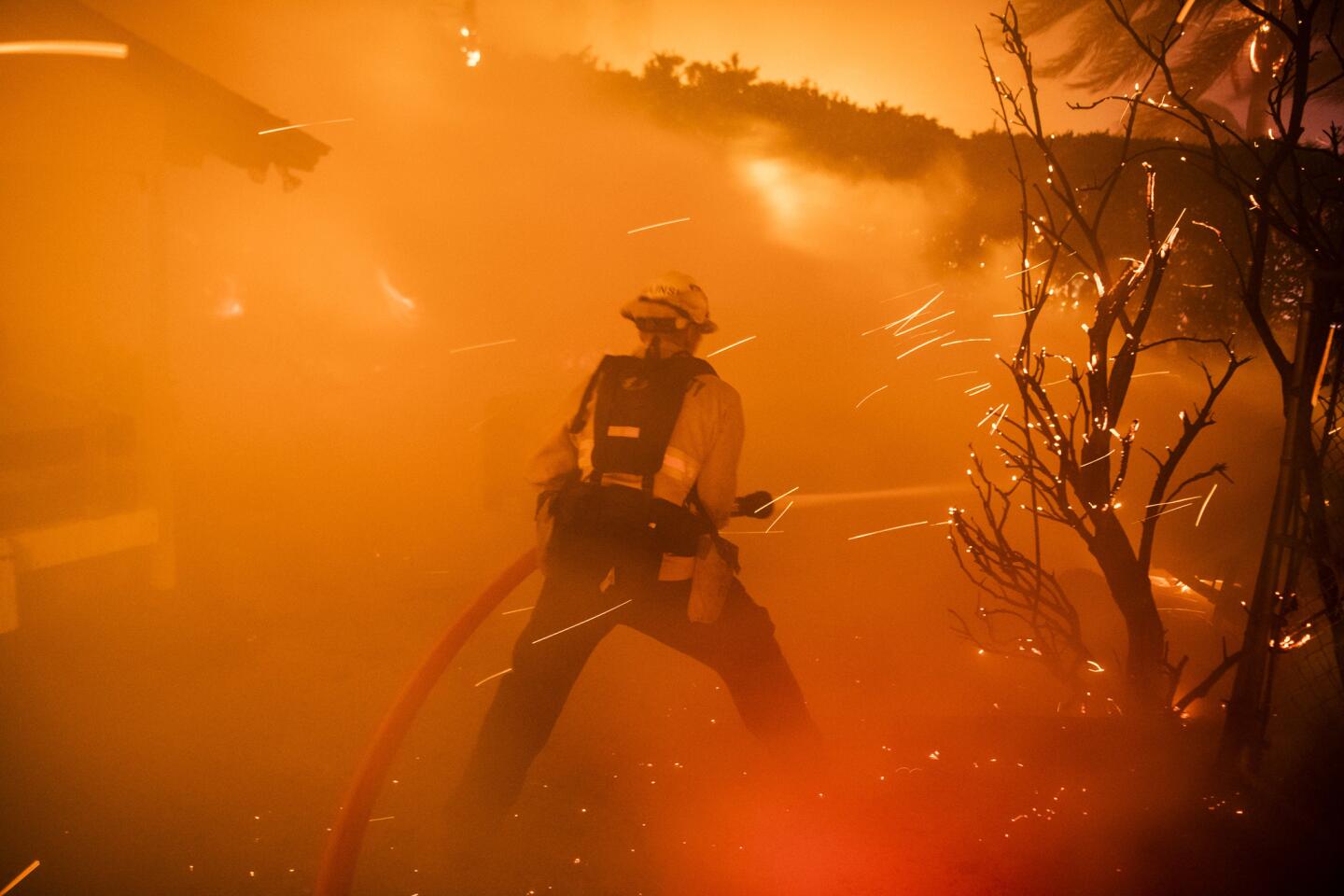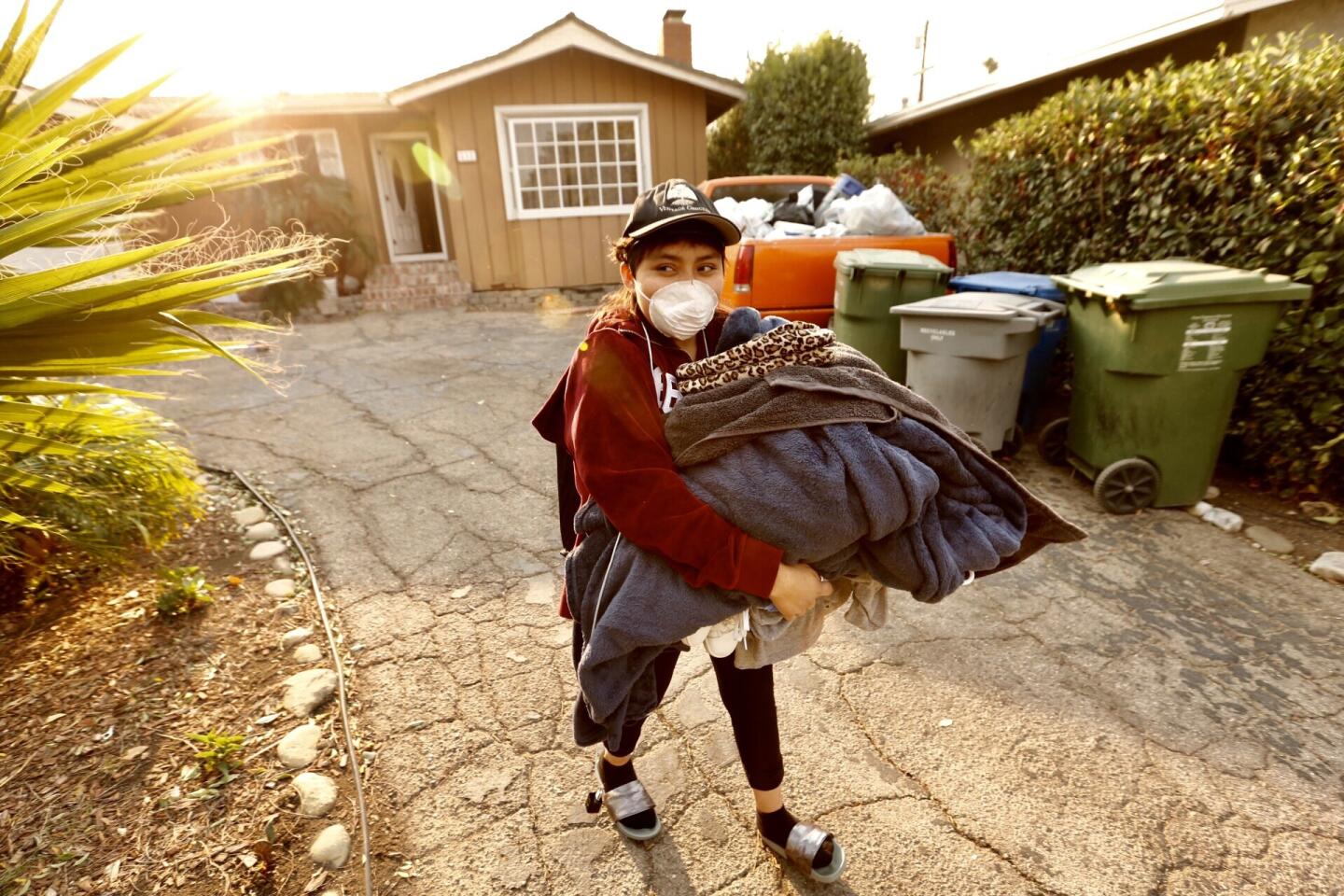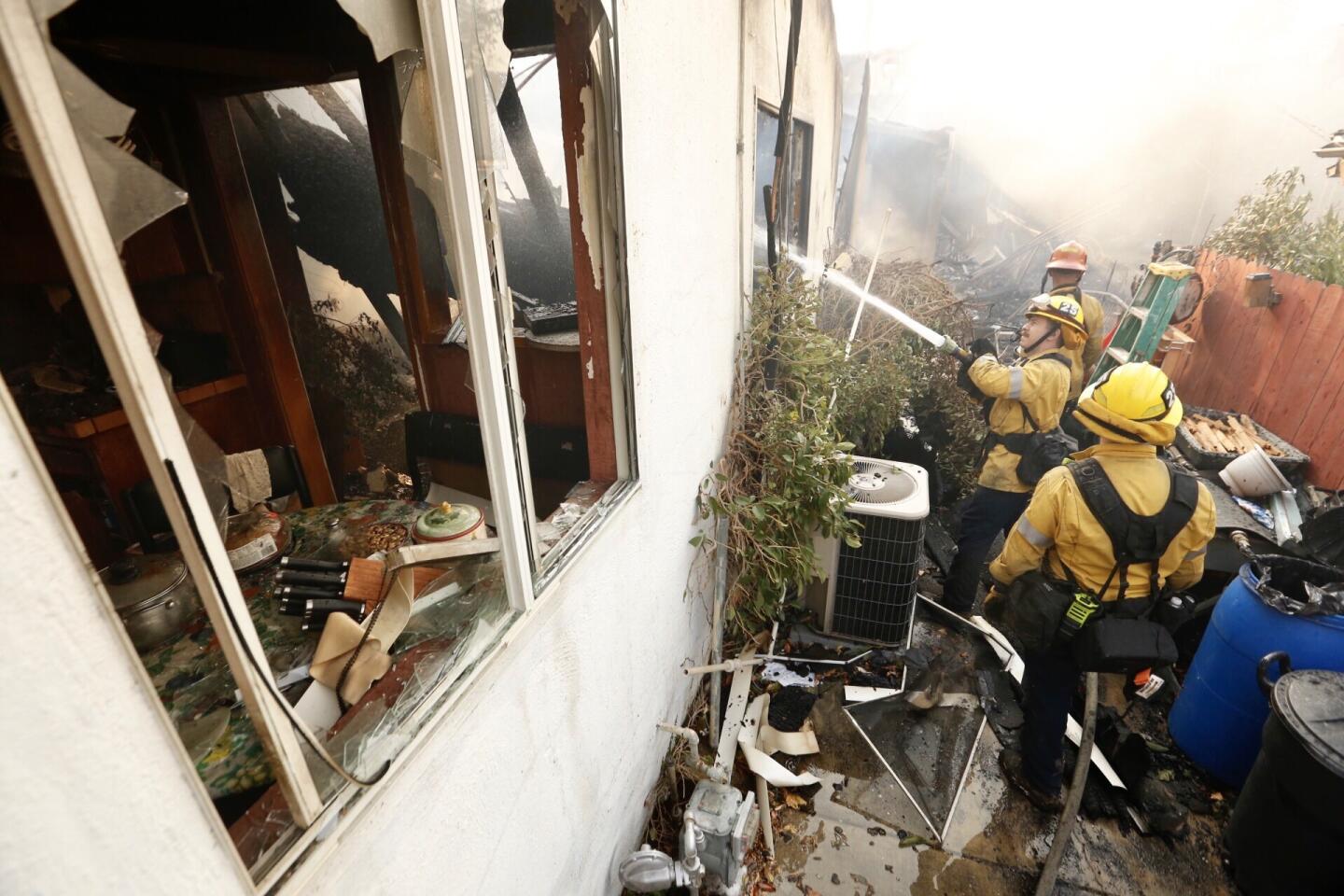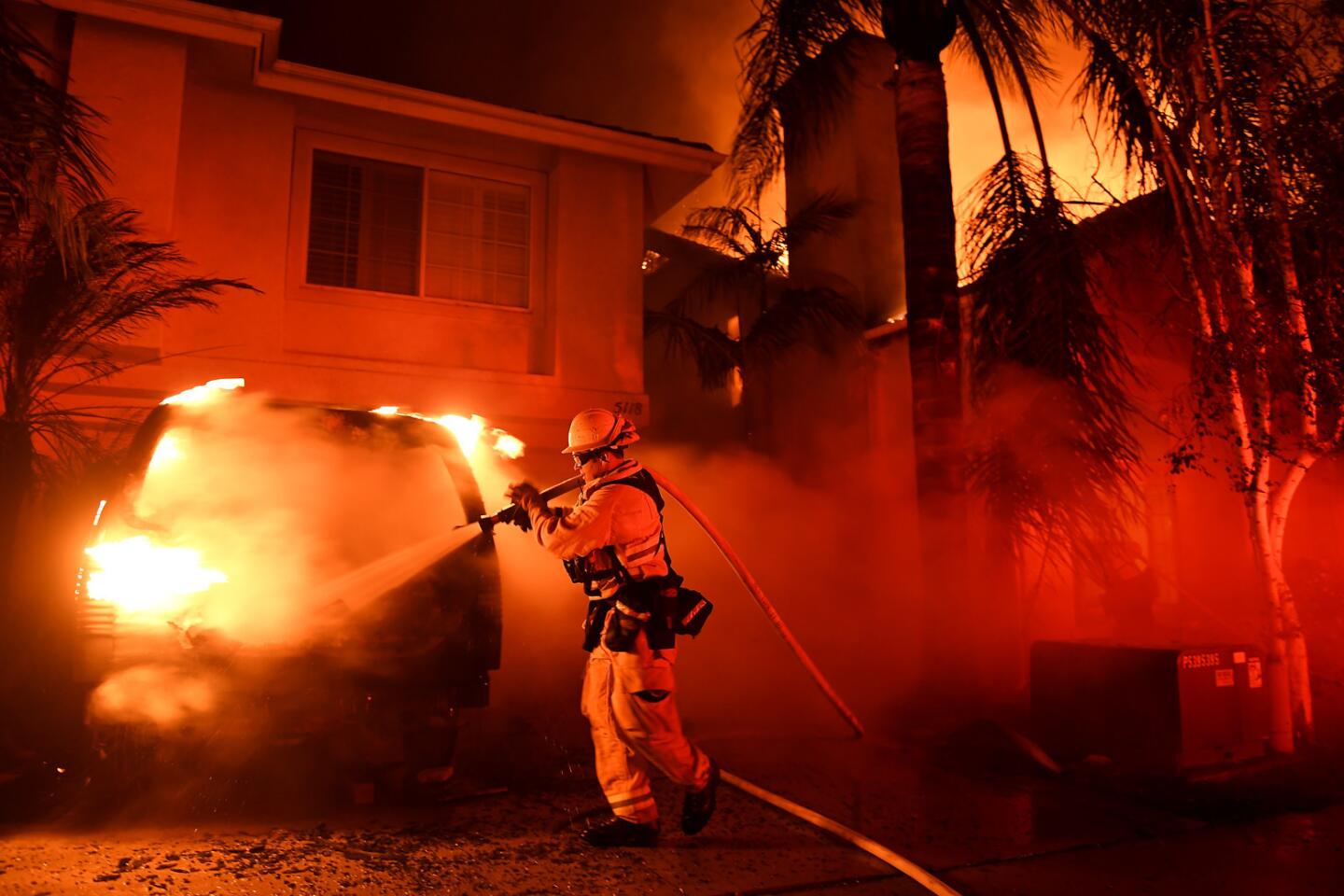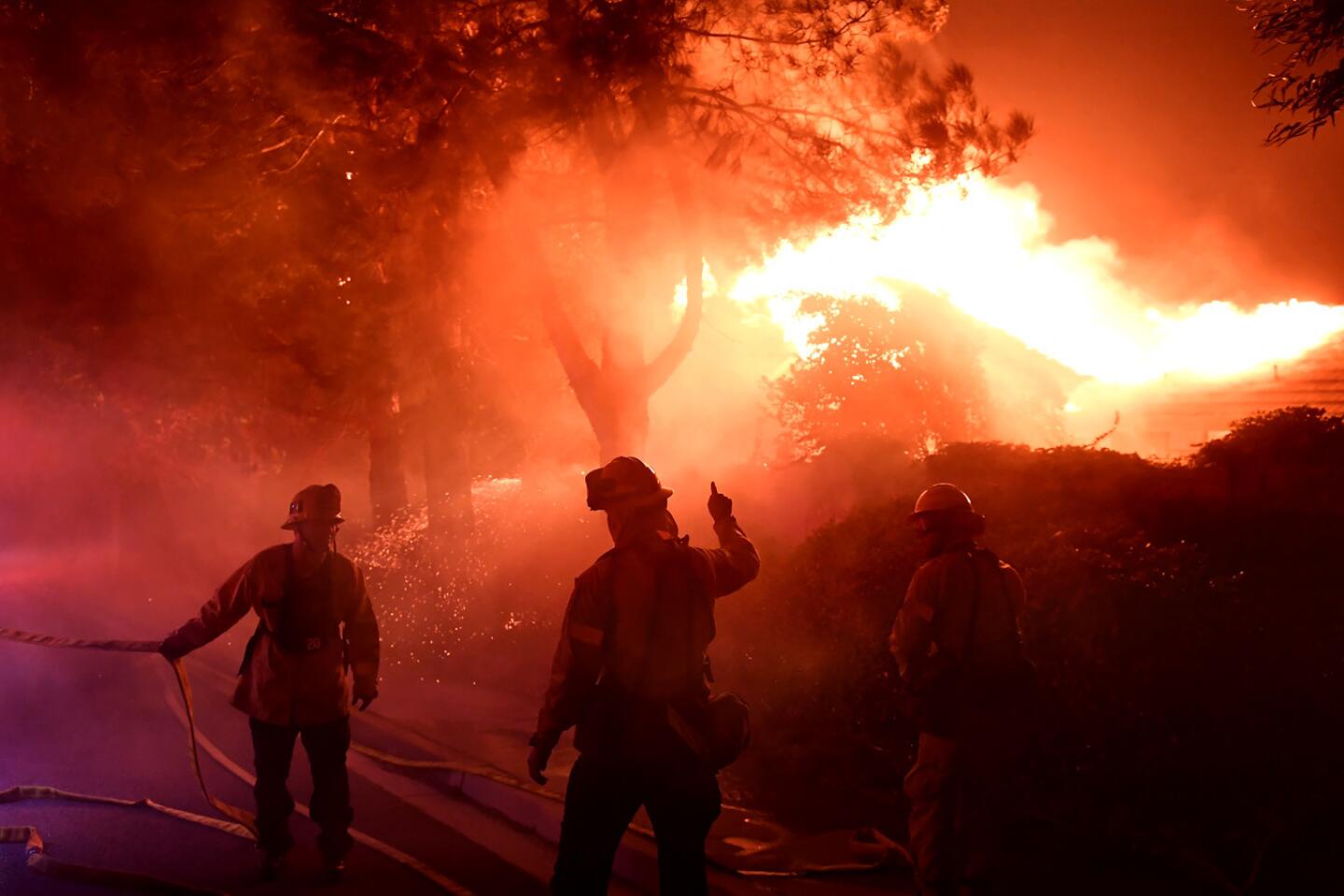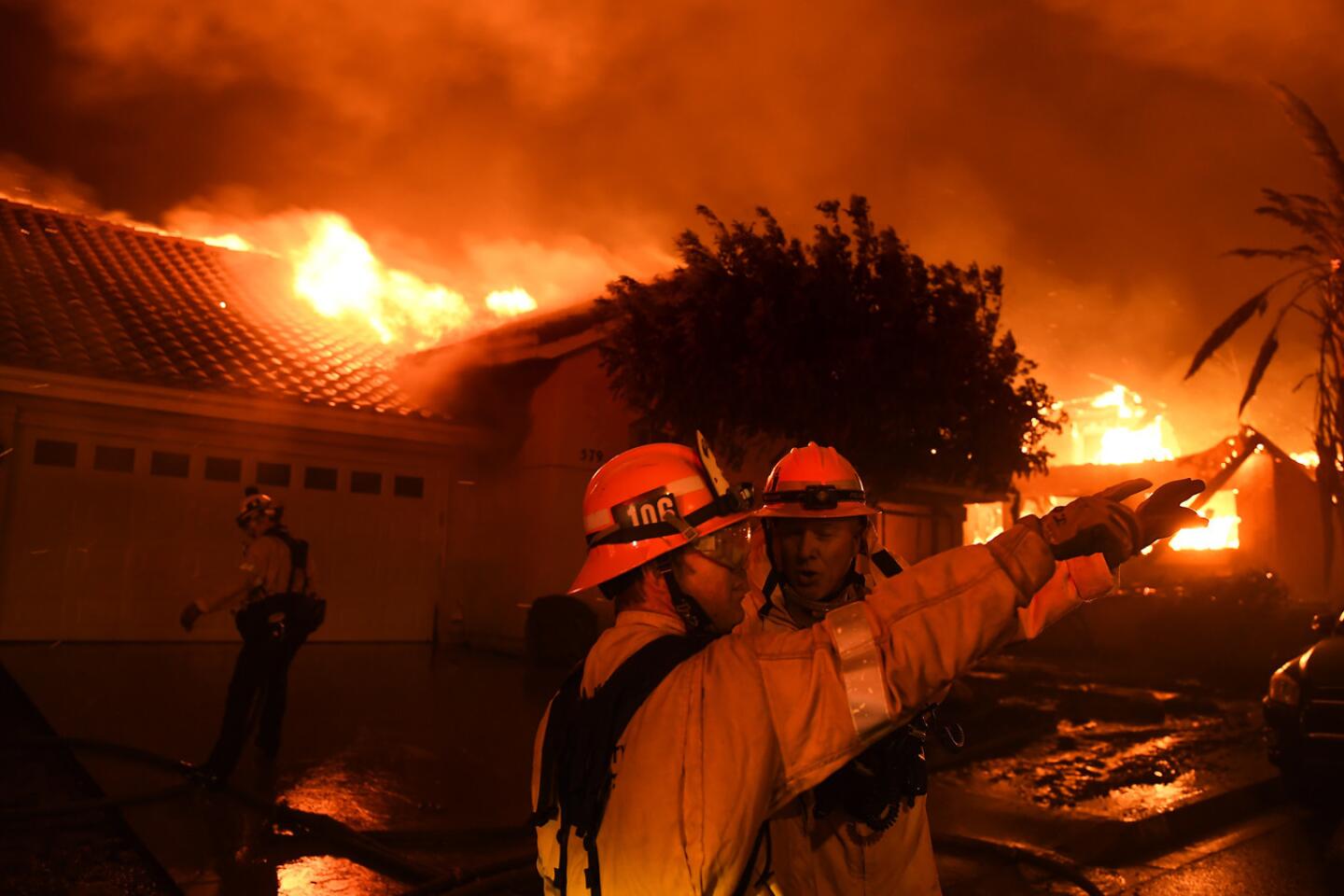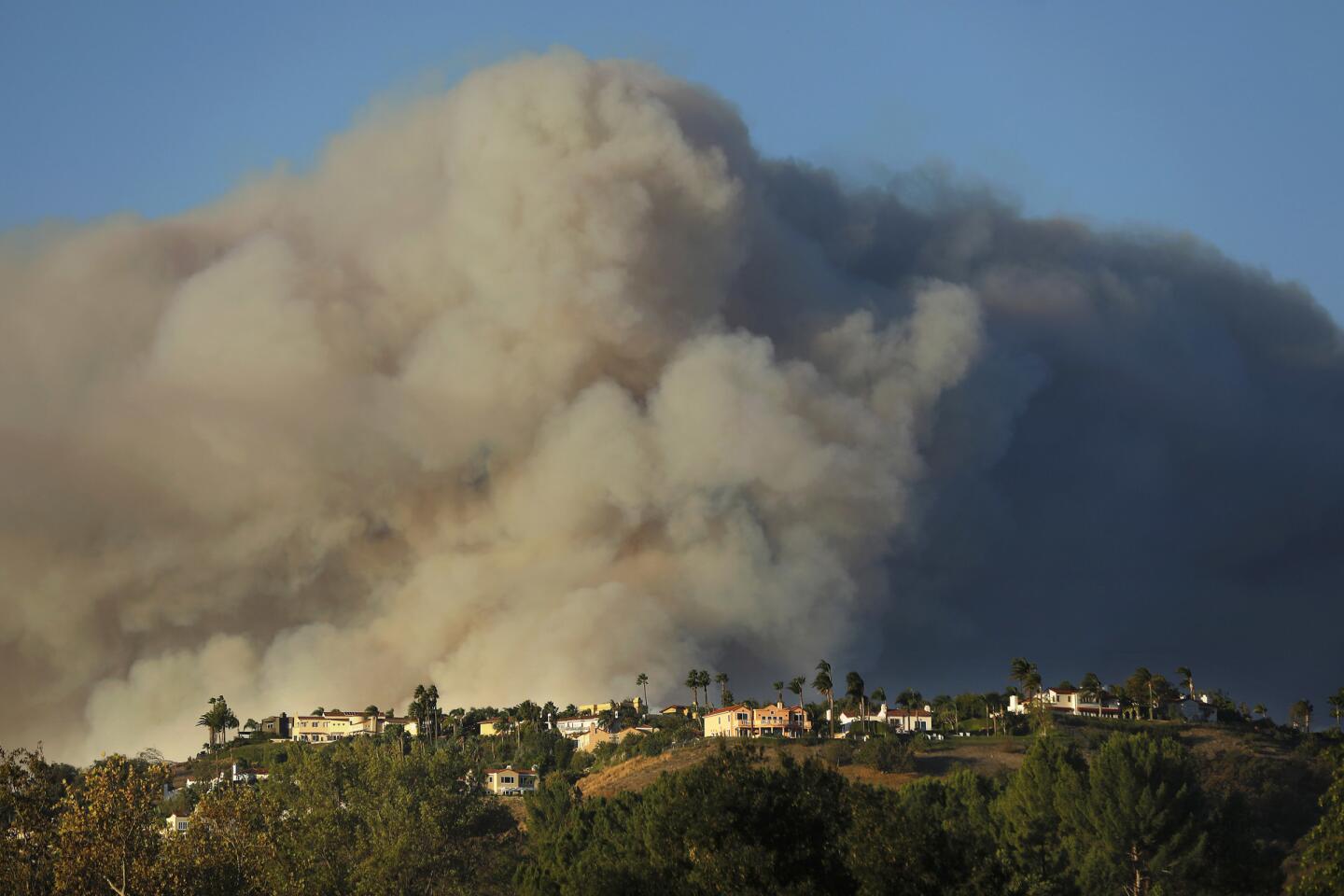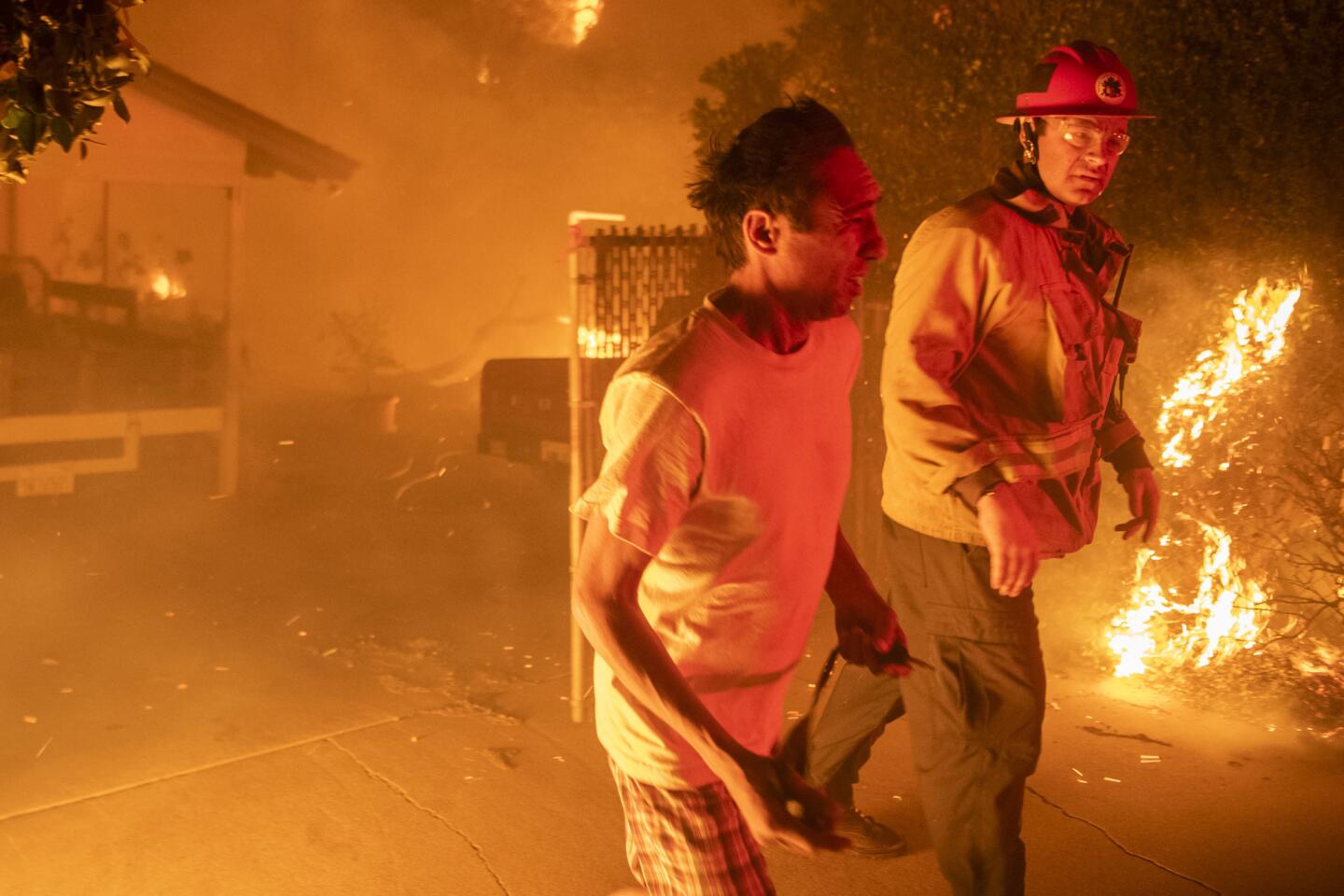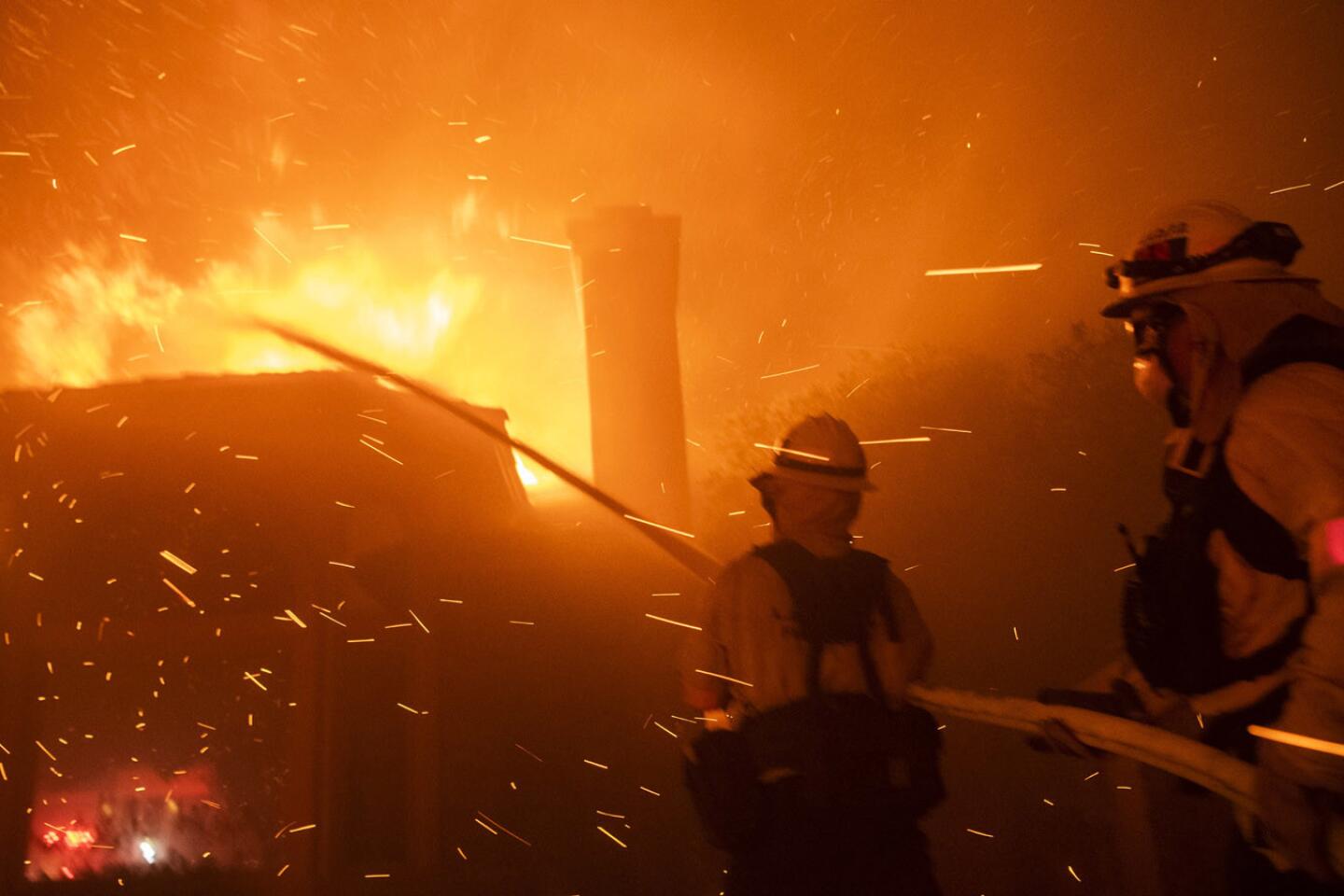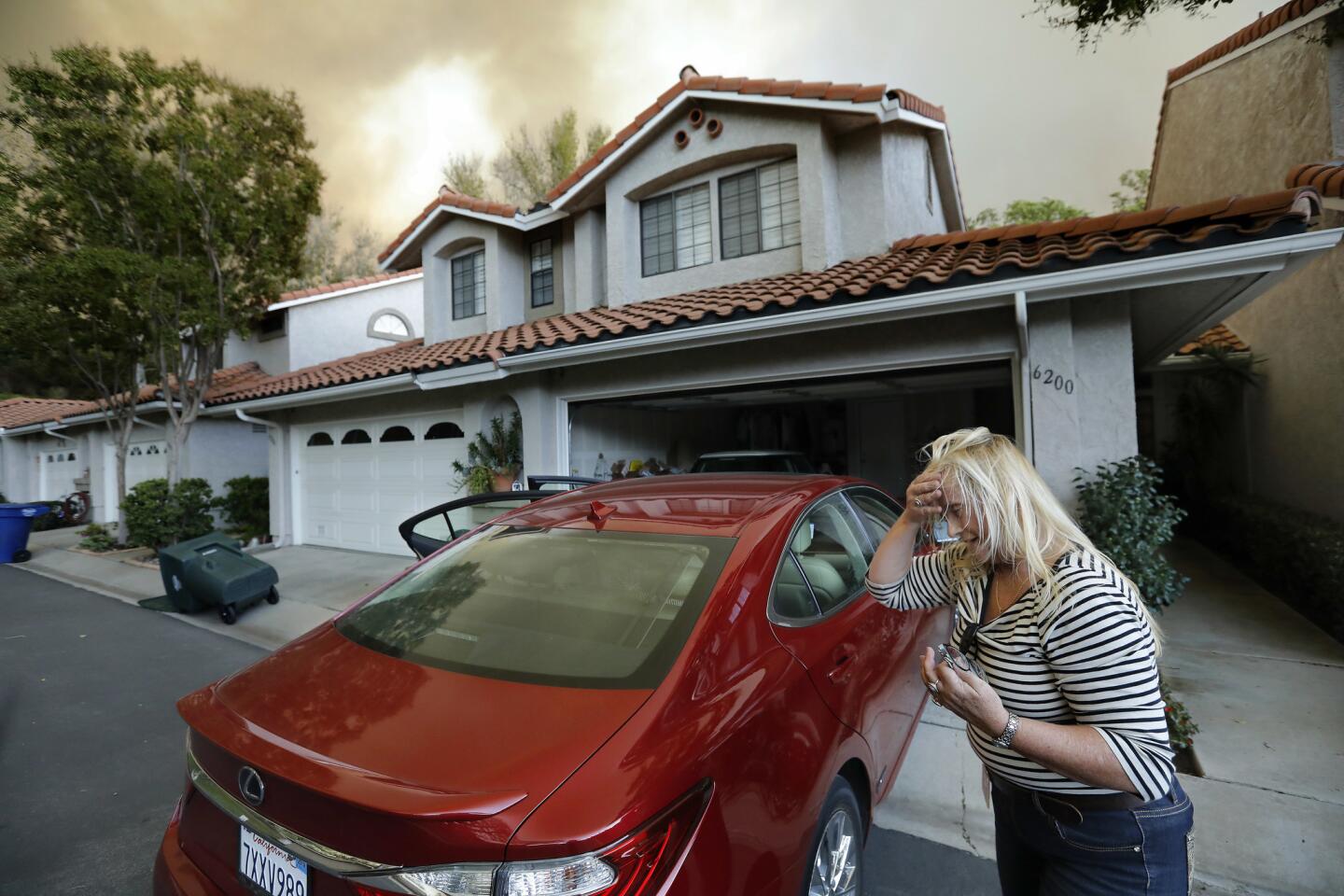As toll mounts from Malibu to Thousand Oaks, how did the Woolsey fire become a monster?
From the start of the destructive Woolsey fire, firefighters were at a number of distinct disadvantages.
The blaze came on the heels of one of the hottest summers on record for the region, after years of drought that left the woodlands in the Santa Monica Mountains bone dry. Powerful Santa Ana winds began howling that Thursday afternoon, blowing more and more ferociously as the night went on, which, combined with low visibility from the smoke, limited the reach of aerial attacks.
Crews were already battling a much larger blaze — the Hill fire — that had erupted 21 minutes earlier, about 20 miles away, and firefighters in Northern California who they’d typically rely on for help were dealing with their own disaster in Paradise.
“When it broke, we tried to stop it at the 101,” said Los Angeles County Fire Chief Daryl Osby. But the Woolsey fire quickly jumped the freeway and barreled all the way to the Malibu shores in an unprecedented seven hours, he said, leaving behind a trail of devastation.
The toll began to come into focus Monday when authorities more than doubled the number of buildings destroyed by the inferno to roughly 435. And only about 15% of the 93,662-acre burn area has been surveyed for damage, so that number will probably increase.
President Trump on Monday approved a major disaster declaration for California, where wildfires across the state have charred more than 200,000 acres, claimed at least 44 lives and destroyed more than 7,500 structures.
“Wanted to respond quickly in order to alleviate some of the incredible suffering going on. I am with you all the way,” Trump said on Twitter. “God Bless all of the victims and families affected.”
Trump’s move came just two days after he criticized California, erroneously claiming that poor forest management caused the fires of the last week. His comments were met with widespread outrage from California officials and many firefighters.
At least two people have died in the Woolsey fire, most likely trying to escape the flames. Their bodies — charred so badly that investigators haven’t been able to identify them — were found Friday in a vehicle on Mulholland Highway in Malibu.
The remnants of two cars were visible on Monday about a third of a mile up a long, curving driveway in the area. Scattered across the pavement were a few fragments: screws, broken glass, pools of melted metal. A softened windshield was draped over the cliff side.
Nearby, the long, twisting roadways of the city felt like a moonscape. The streets through the Santa Monica Mountains, damaged in places, were framed by scorched speed limit signs and drooping power lines. The fire had burned unevenly, leaving some swaths of land barren and gray while in other areas, unscathed trees and vineyards swam into view in vivid color. Solar panels glinted from scorched hillsides.
The silence was punctuated by the beep-beep-beep of utility trucks, the whir of helicopters dropping water, and the roar of the wind blowing ash and dust across the hills. The shoulder of Mulholland Highway was filled with trash, burnt palm fronds and the remnants of people’s homes: a New Yorker subscription card, a page from a 1977 yearbook, a half-burned ticket for going 101 mph in a 60-mph zone.
Along a path of wood chips that crumbled when touched, a white yurt stood intact and pristine, surveying a valley of scorched earth and twisted trees. Stone letters on a ridge nearby spelled out, “LOVE.”
Investigators are still trying to determine what sparked the Woolsey fire. Southern California Edison told state regulators last week that there was an outage tied to its Chatsworth substation two minutes before the fire was reported near Simi Valley, but authorities have not connected the incident to the blaze.
“At this point we have no indication from fire agency personnel that Southern California Edison utility facilities may have been involved in the start of the fire,” Edison wrote in an incident report to the California Public Utilities Commission.
Edison wrote that a circuit relayed at the facility at 2:22 p.m. Thursday. Sally Jeung, a spokeswoman for Edison, told KQED-TV that “when a circuit relays, [it] senses a disturbance on the circuit and switches the circuit off.” It’s not clear what triggered the circuit’s sensor.
Los Angeles Fire Department Deputy Chief Trevor Richmond said that after the blaze broke out Thursday, the speed of the fire made it difficult.
“With any wind-driven fire, the fire is moving so fast that it’s a challenge — we have to get way out ahead of the fire and start identifying the communities that will be at risk and start the evacuations,” he said. “It could be in a community in 30 minutes, and we don’t have a lot of time” — and rescuing residents becomes paramount.
Richmond said that the terrain itself made it difficult to access some homes and move quickly.
“It’s essentially a park: It hasn’t been developed,” he said of the Santa Monica Mountains. “We do have a series of hiking trails, we do have a series of dirt fire roads, and those can be extremely challenging to get resources in.”
Richmond balked at identifying any mistakes in firefighters’ response.
“In my 31 years, I can’t recall seeing a brush fire burn as quickly as this one did. Would we do anything differently? I would say no,” he said.
“We had pre-plans in place for this type of fire and I think all the resources got sufficiently out in front of it. We saved thousands of homes and thousands of lives. Yes, we did lose some structures, but compared to the ones we saved and the lives we saved, I’m very surprised this fire has not been more catastrophic.”
Richmond said that dozens of firefighters were on the line for 72 hours and were relieved only early Monday.
“They were actively engaged in protecting homes in the west Valley and the Bell Canyon area, and did a tremendous job,” he said.
During the firefight, Los Angeles County Waterworks District No. 29, which serves Malibu, saw a significant loss of pressure in its water distribution system, something that didn’t go unnoticed by residents.
Point Dume resident Mike Guthrie said he spent Friday evening and Saturday morning fighting back flames from his home on Dume Drive.
He and a few neighbors started with buckets and a garden hose. They watered the decks and doused small flare-ups as they came. By 8 p.m. Friday, though, all the pressure in the hose was gone. Soon, firefighters were telling them something similar.
“Firefighters told us that the hydrants went out,” Guthrie said.
“We have no water,” he recalled a firefighter telling him. “The hydrants are not working so we have no water in our tank.”
Guthrie applauded the efforts of the firefighters but they said they were hamstrung by the lack of water. At one point firefighters put a pump in his neighbor’s pool to get water. On his block alone, he estimated that between 10 and 15 homes were destroyed.
Bob and Pam Whitham, who also live on Dume Drive, said they evacuated down to Zuma Beach and when they returned to their home Saturday morning, their water wasn’t working.
“Nobody on the Point had water,” Pam Whitham said.
In Bell Canyon, the blaze destroyed an estimated 37 of about 780 homes, and a dozen more are thought to have sustained some level of damage, said Eric Wolf, president of the Bell Canyon Homeowners Assn.
Wolf said he has stayed in the 2,400-acre community since the fire started, putting out spot fires with a team of volunteers.
The blaze moved unpredictably in Bell Canyon, which has 13 miles of roads. This is the first time that homes were lost to a brush fire in Bell Canyon, a community that has seen fires multiple times before, but that wasn’t the fault of the firefighters, he said.
“The fire was jumping all over the place, and they were chasing it,” Wolf said. “They just couldn’t have anticipated, in my opinion, how the fire would go.”
Times staff writer Alejandra Reyes-Velarde contributed to this report.
More to Read
Sign up for Essential California
The most important California stories and recommendations in your inbox every morning.
You may occasionally receive promotional content from the Los Angeles Times.
